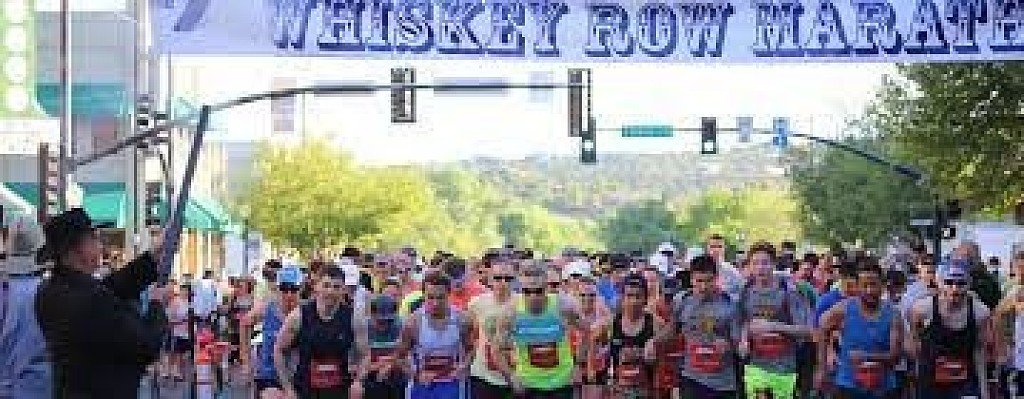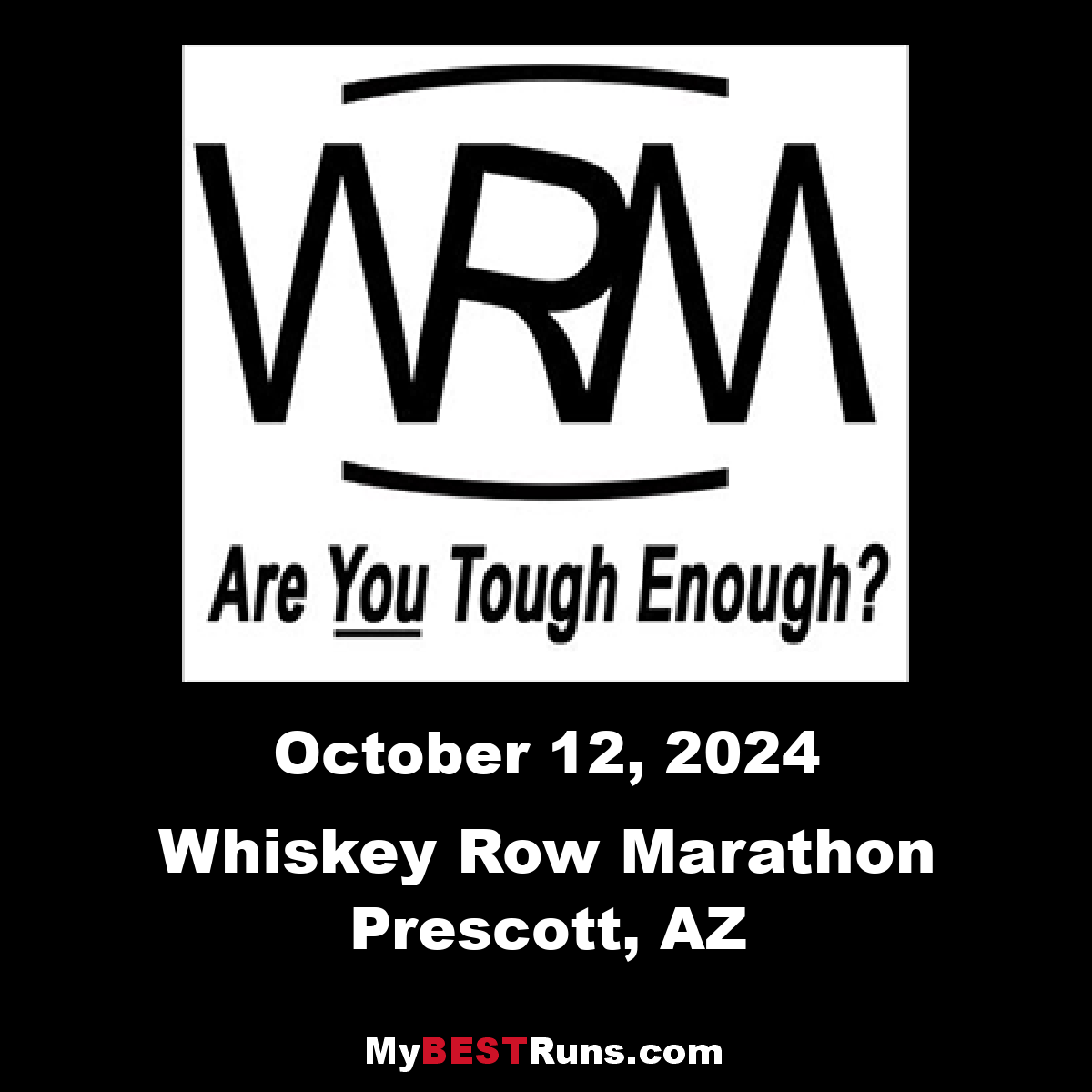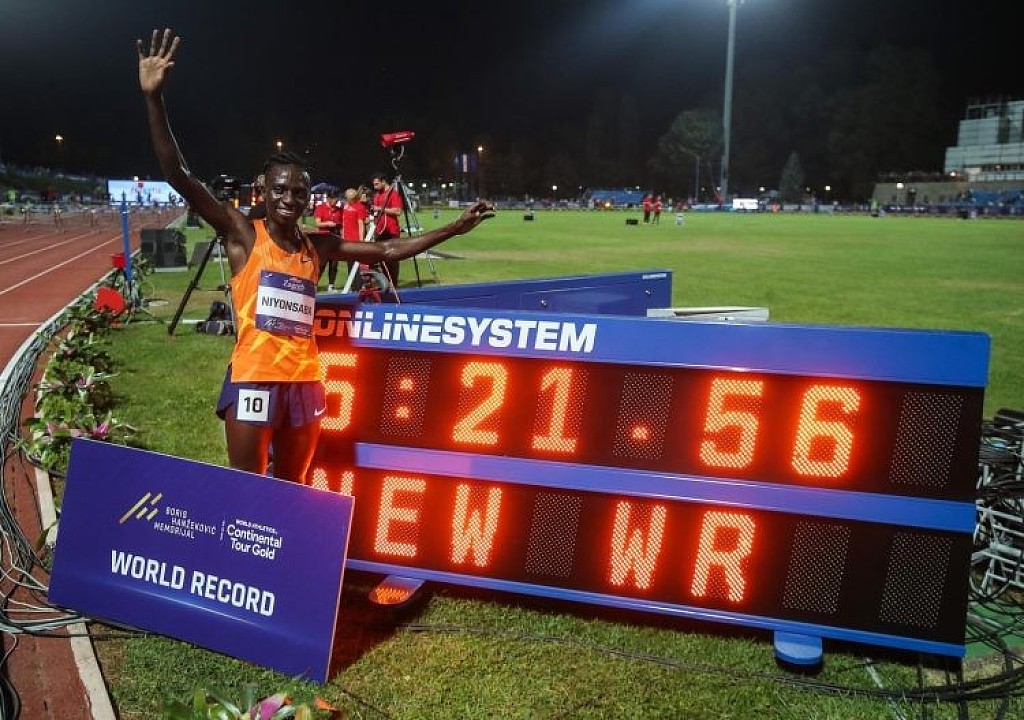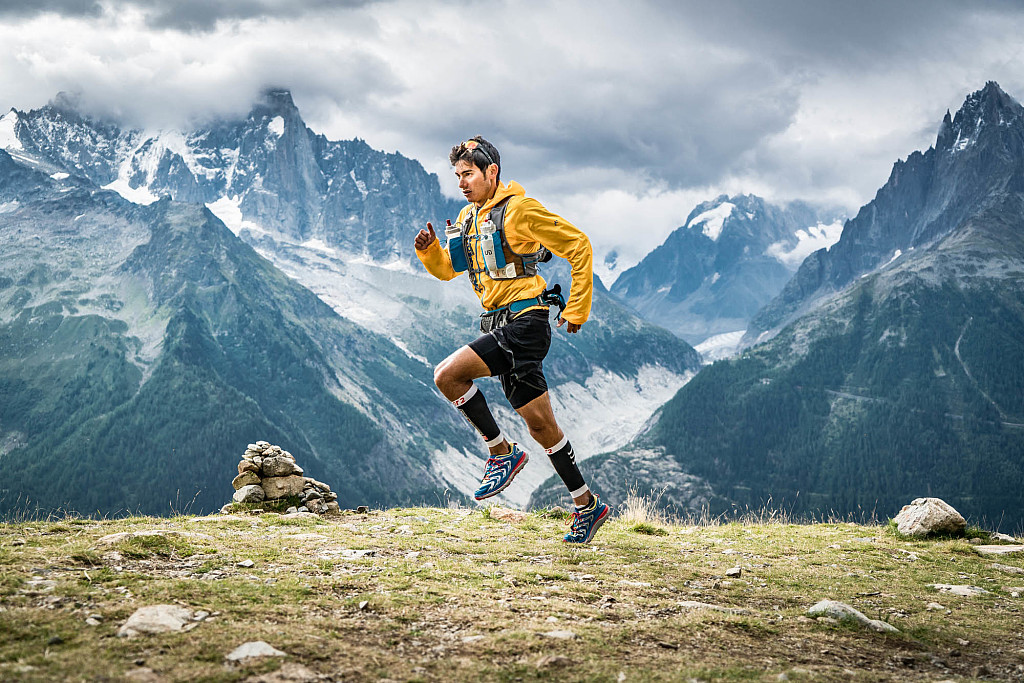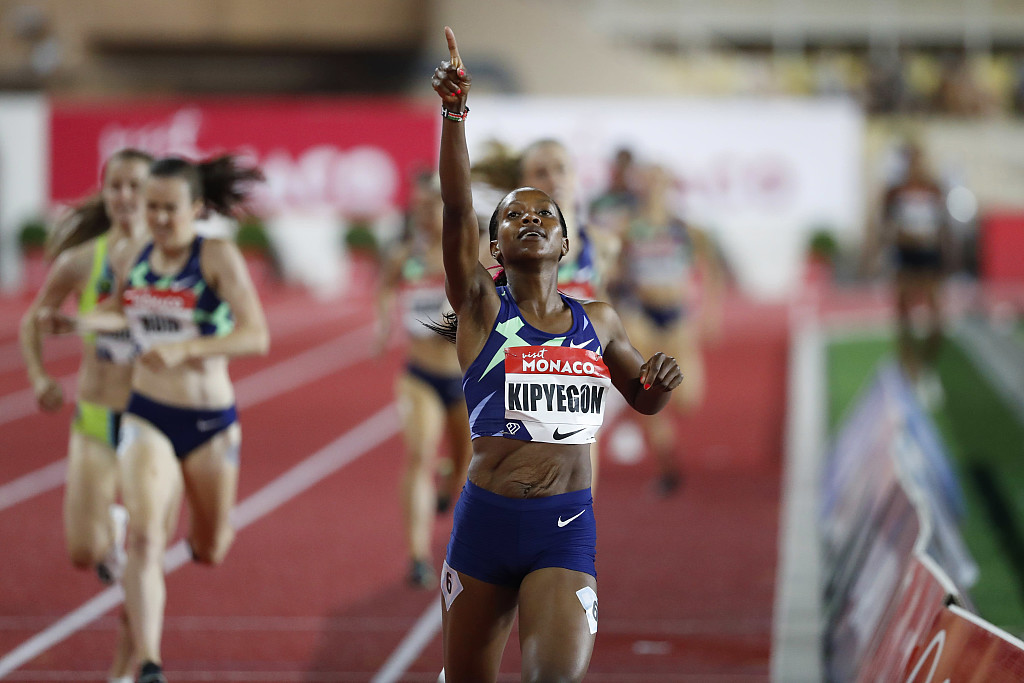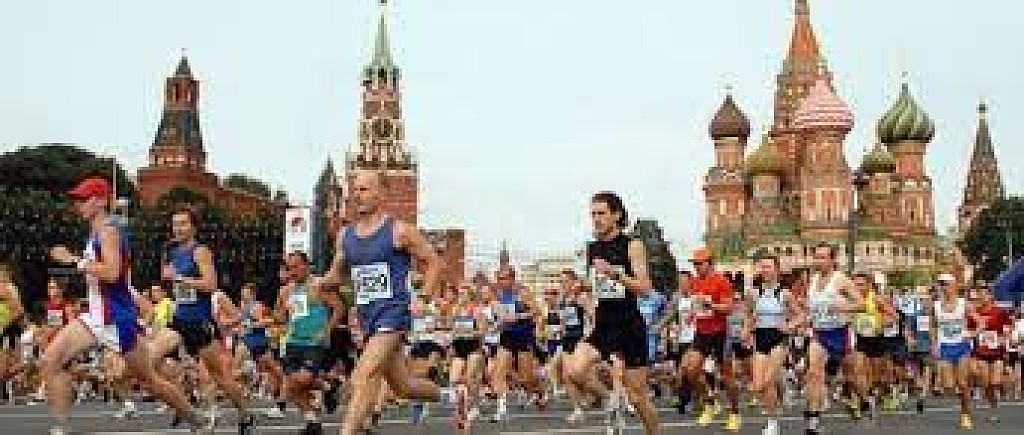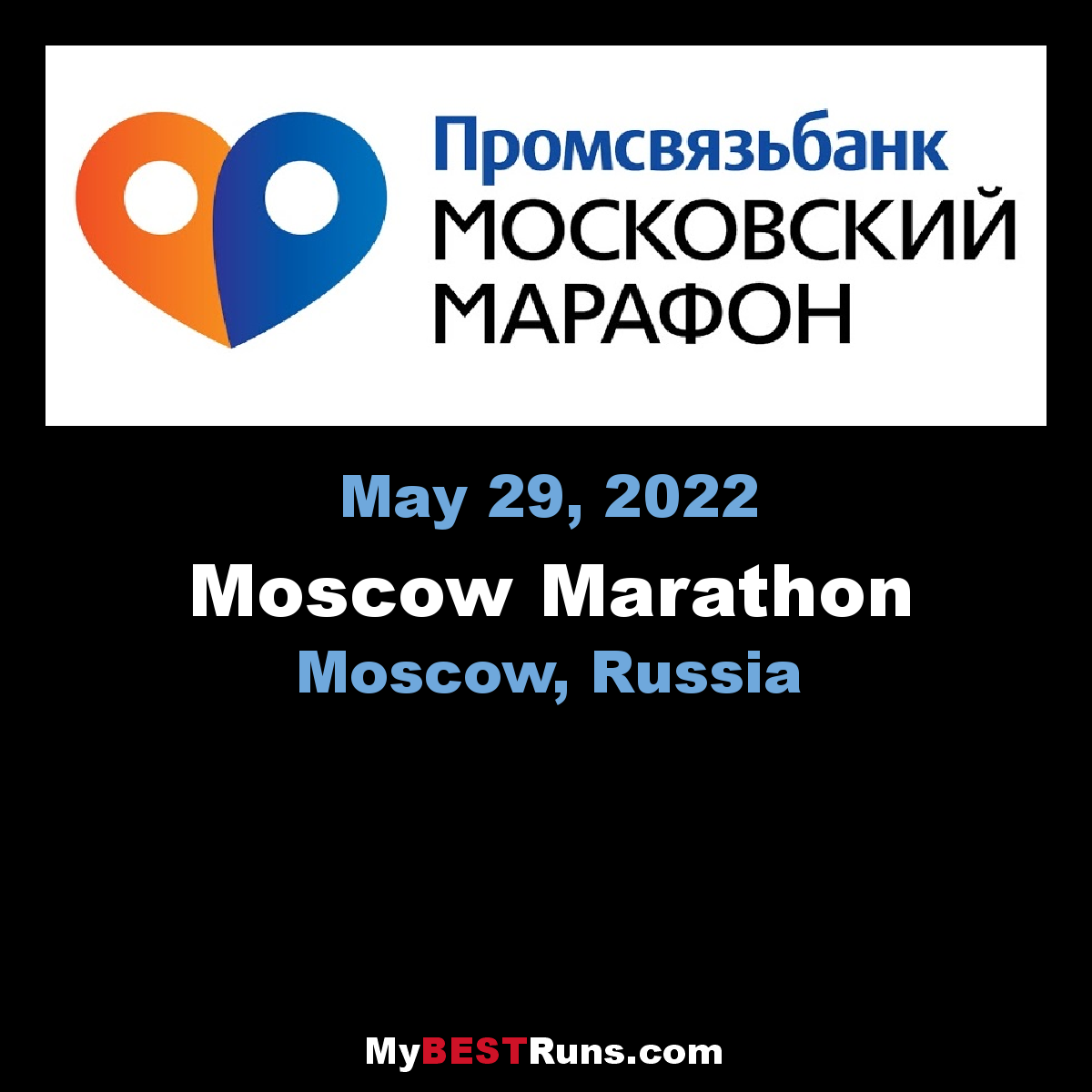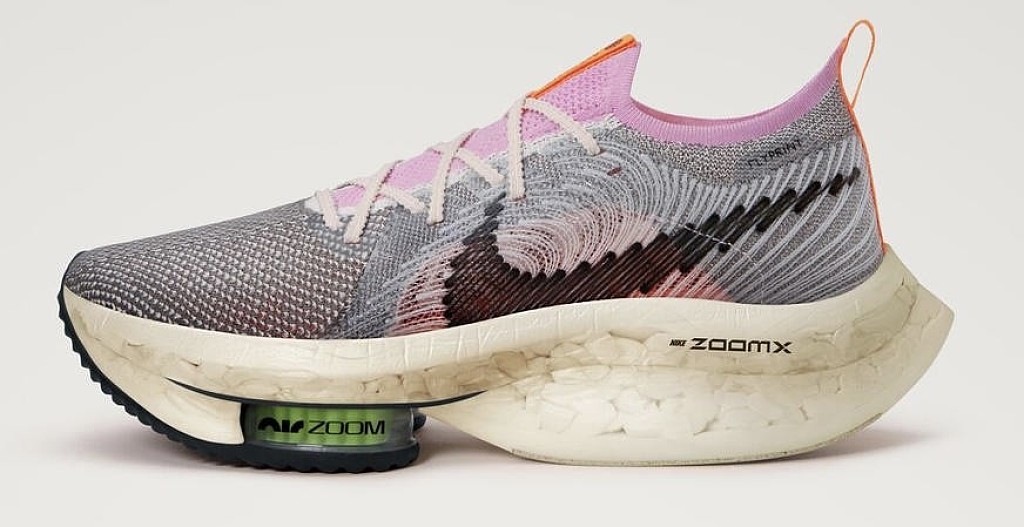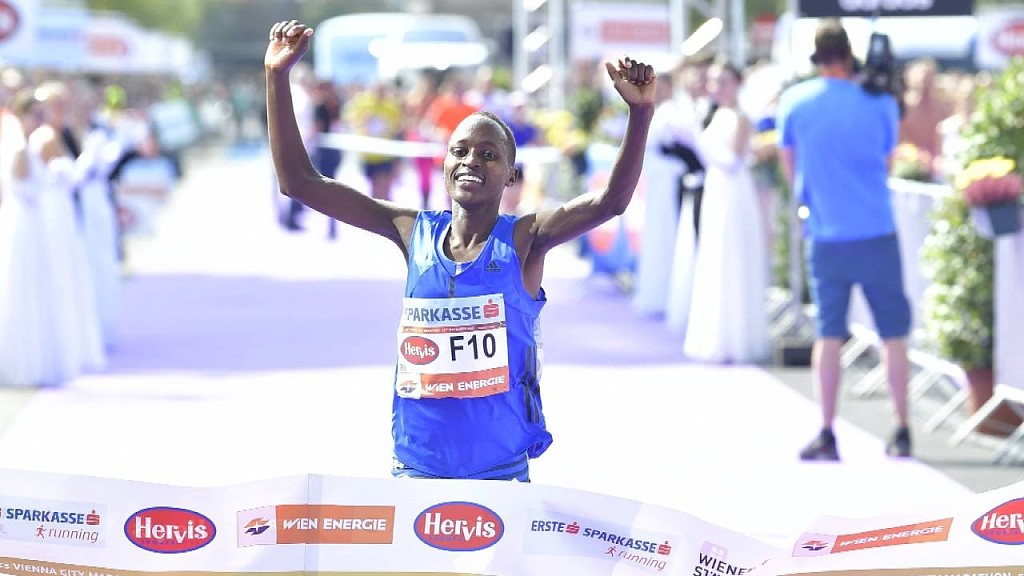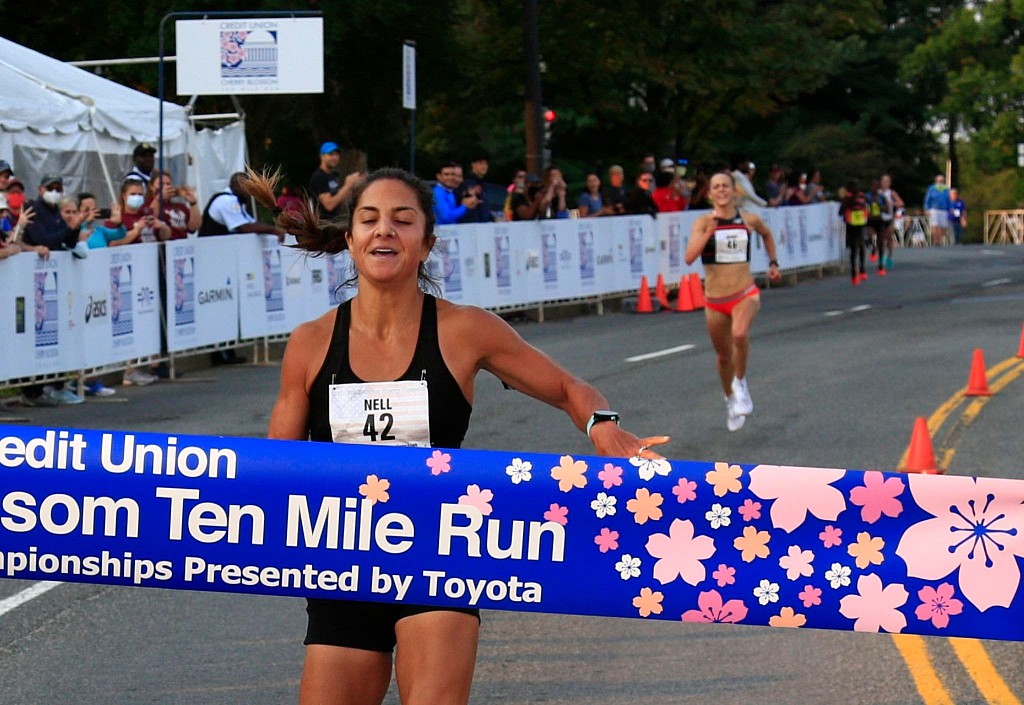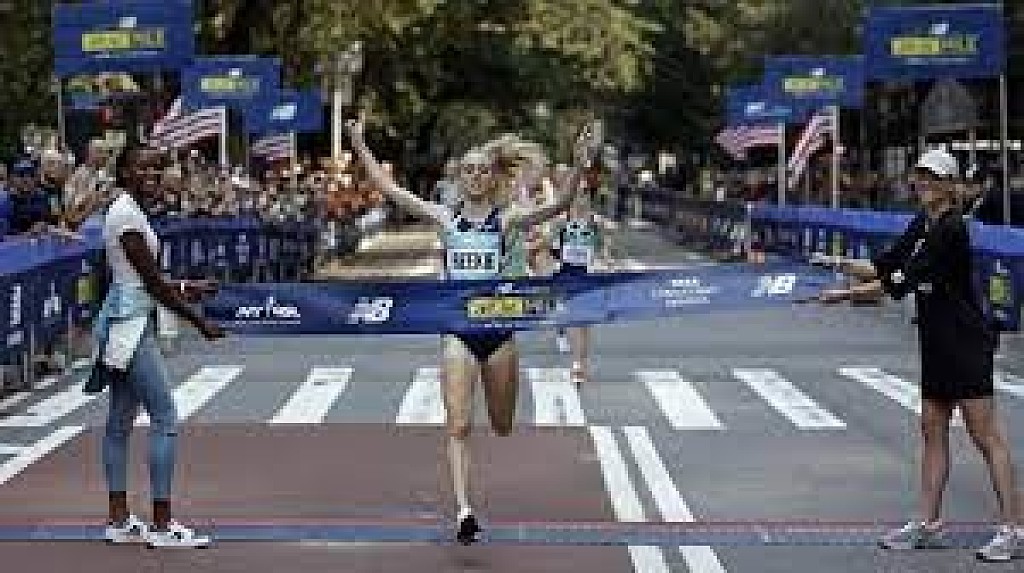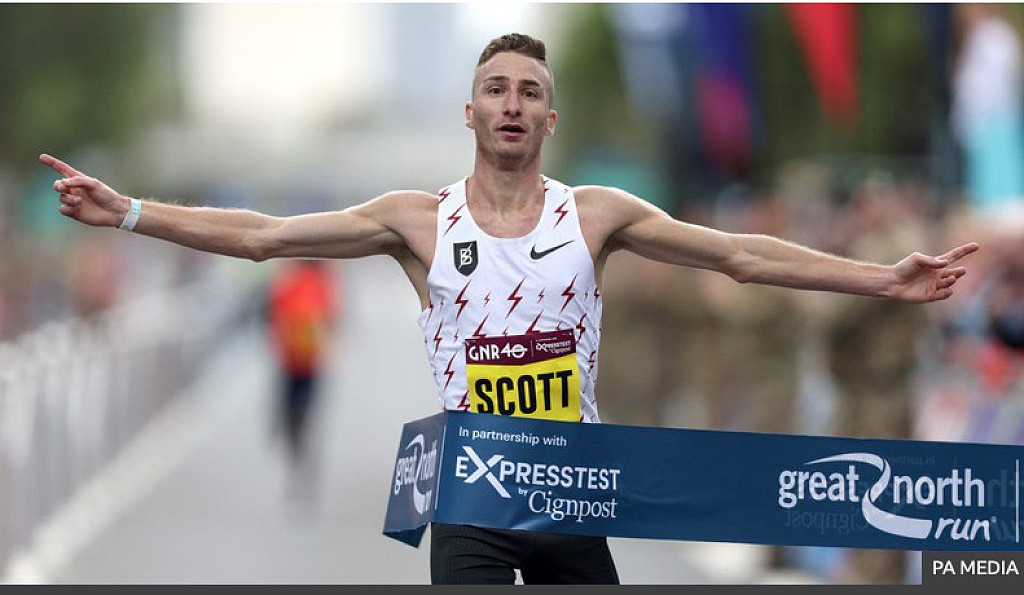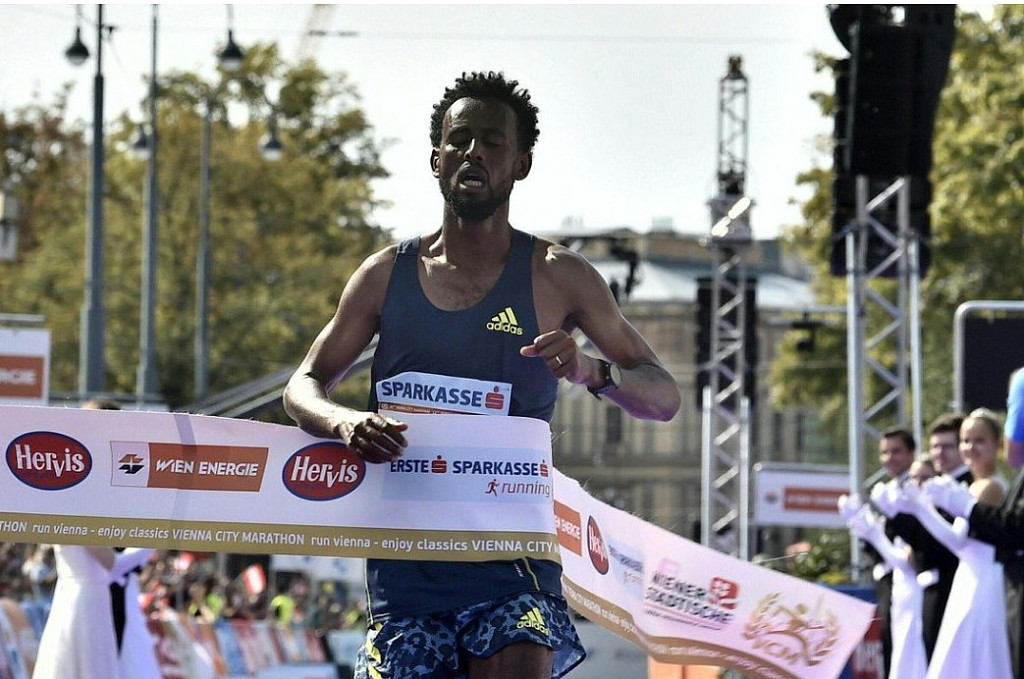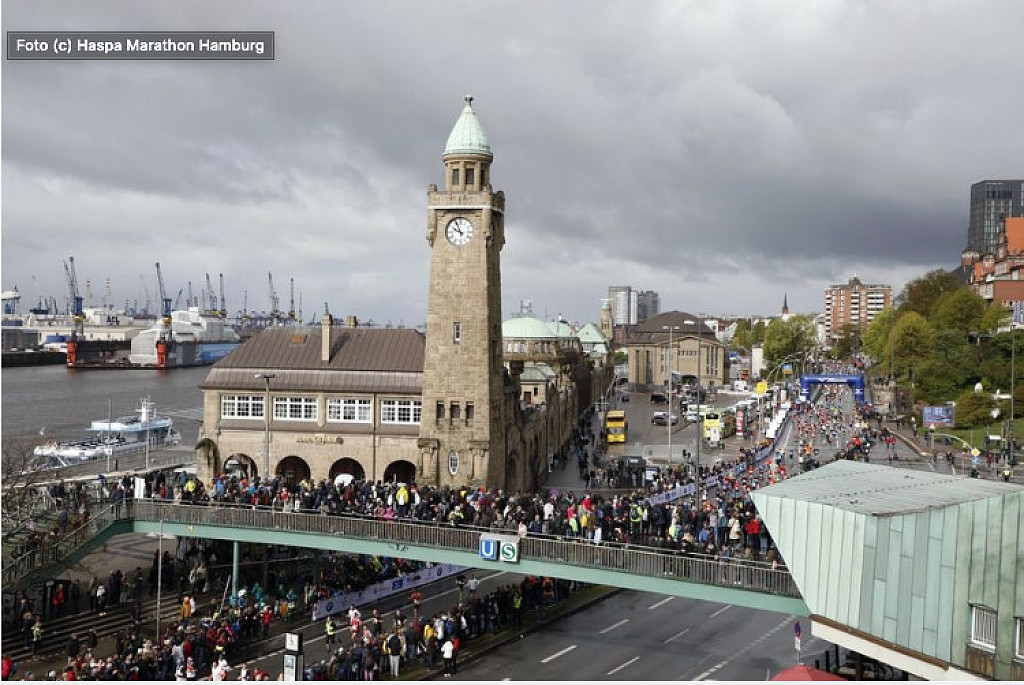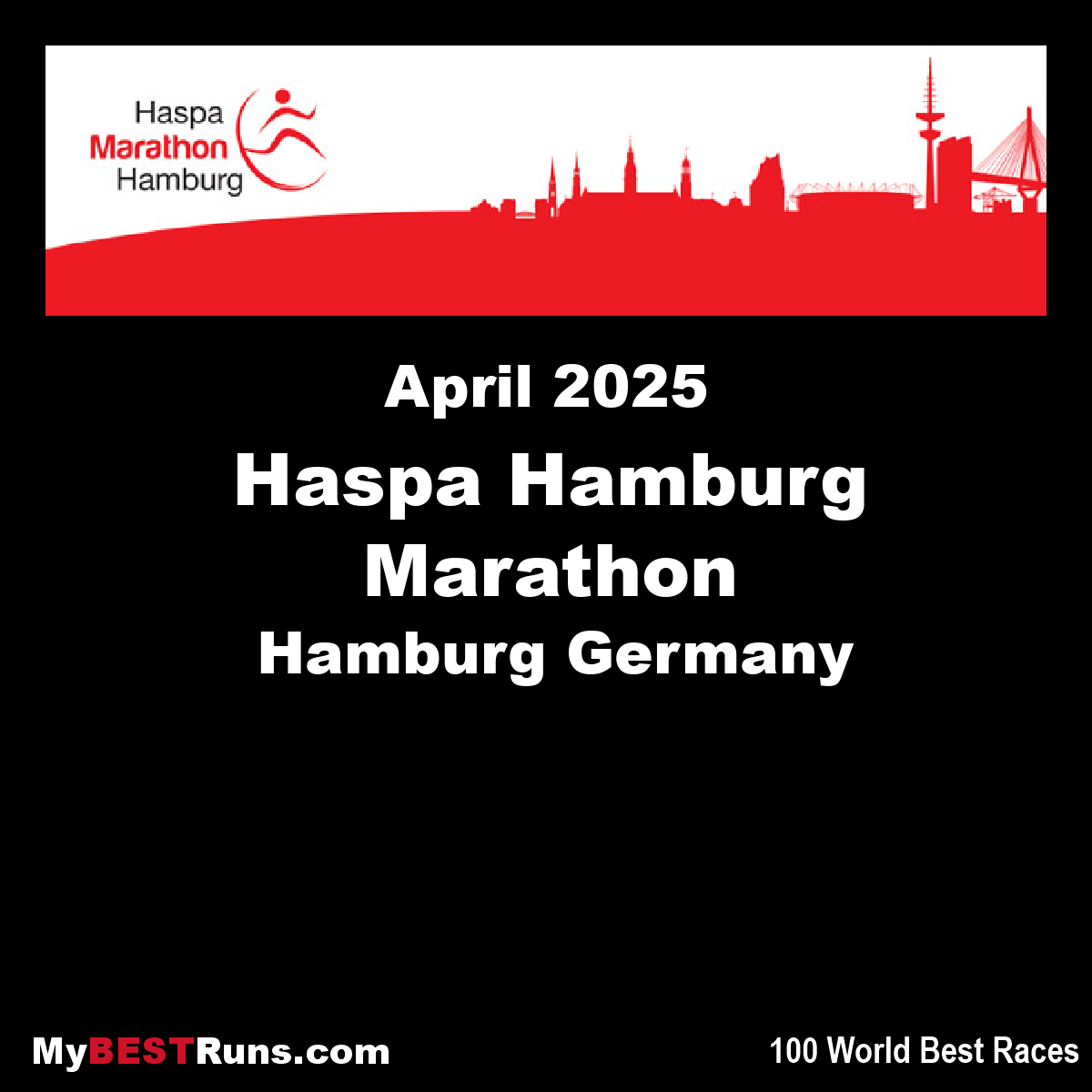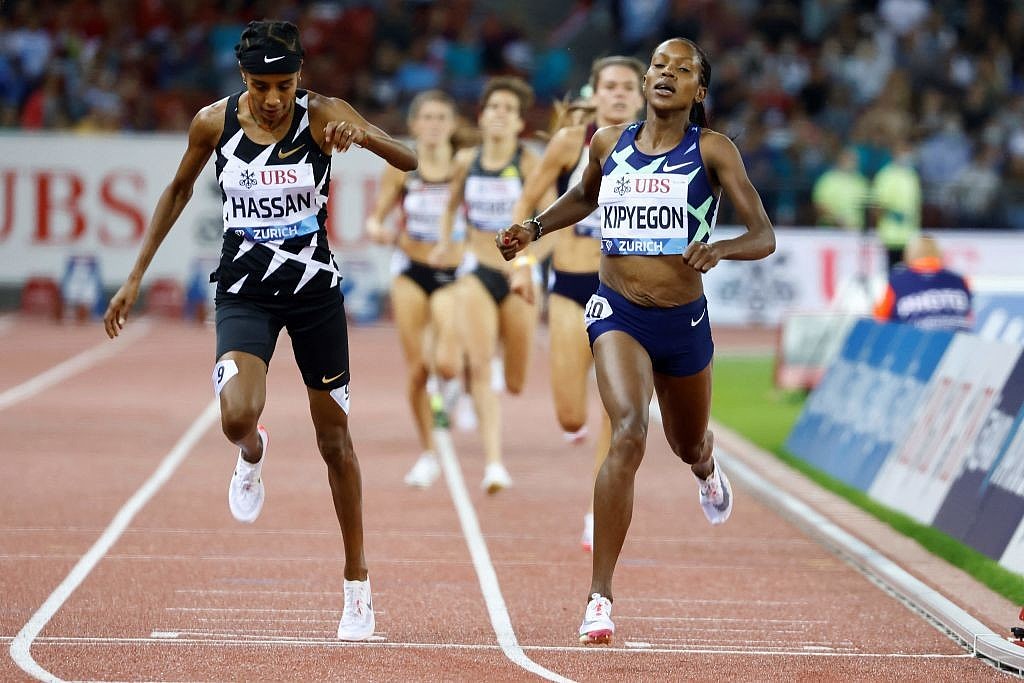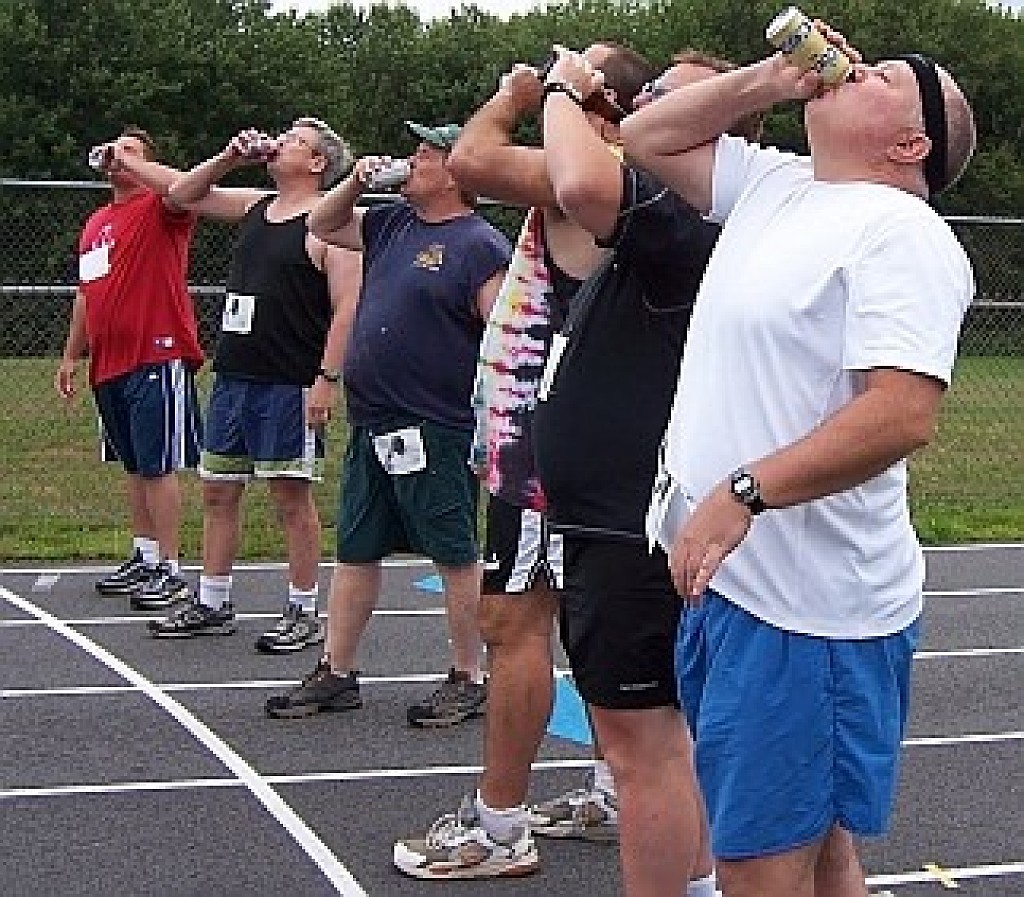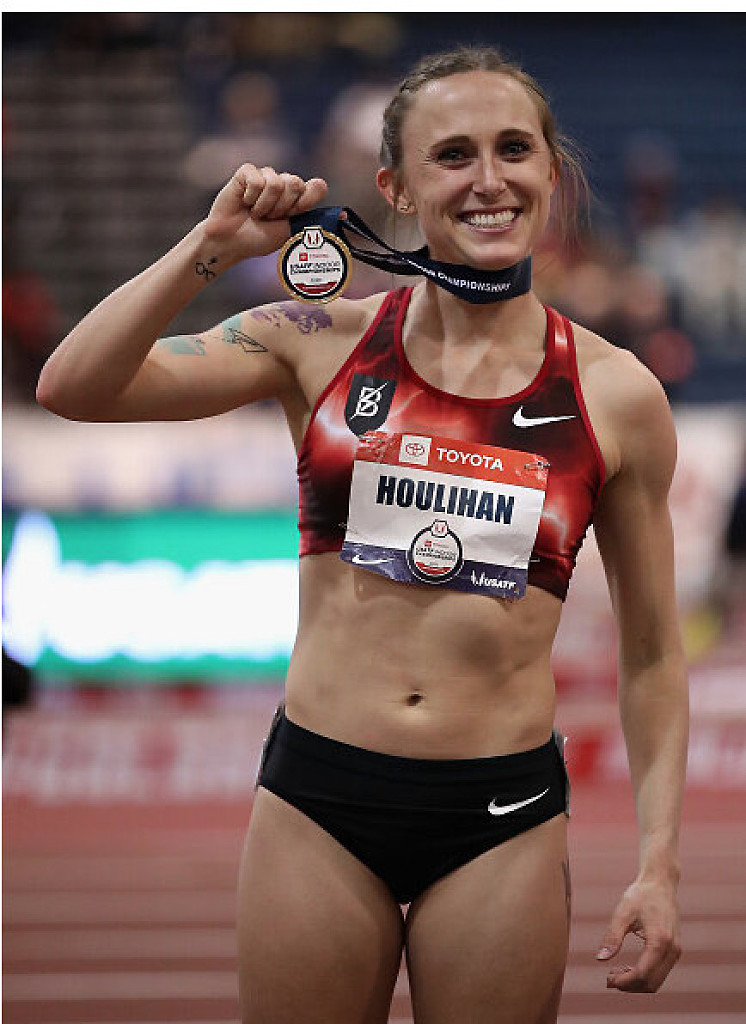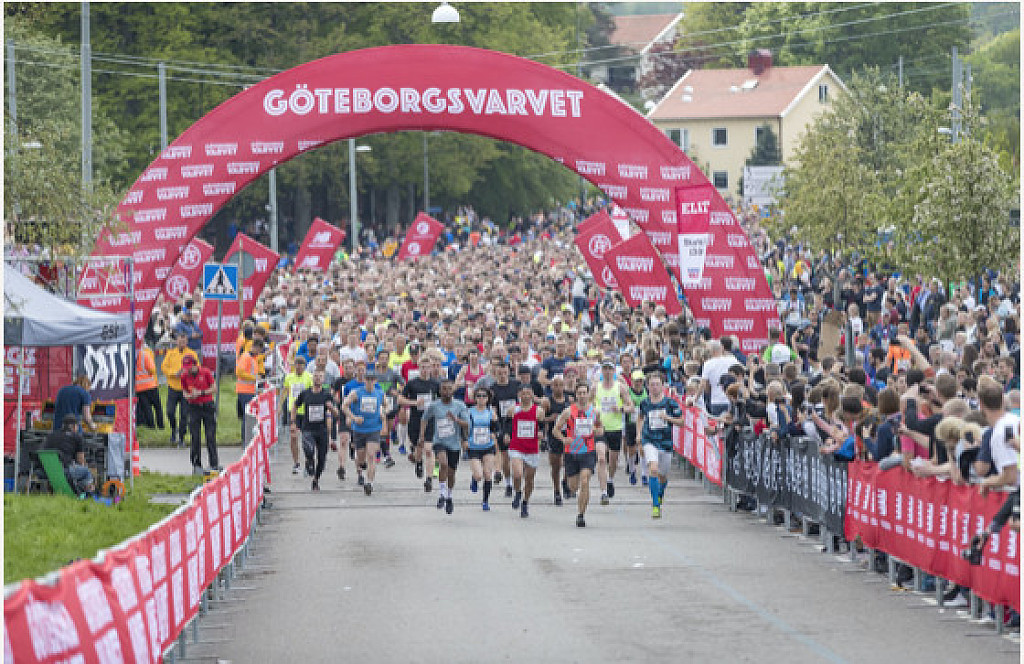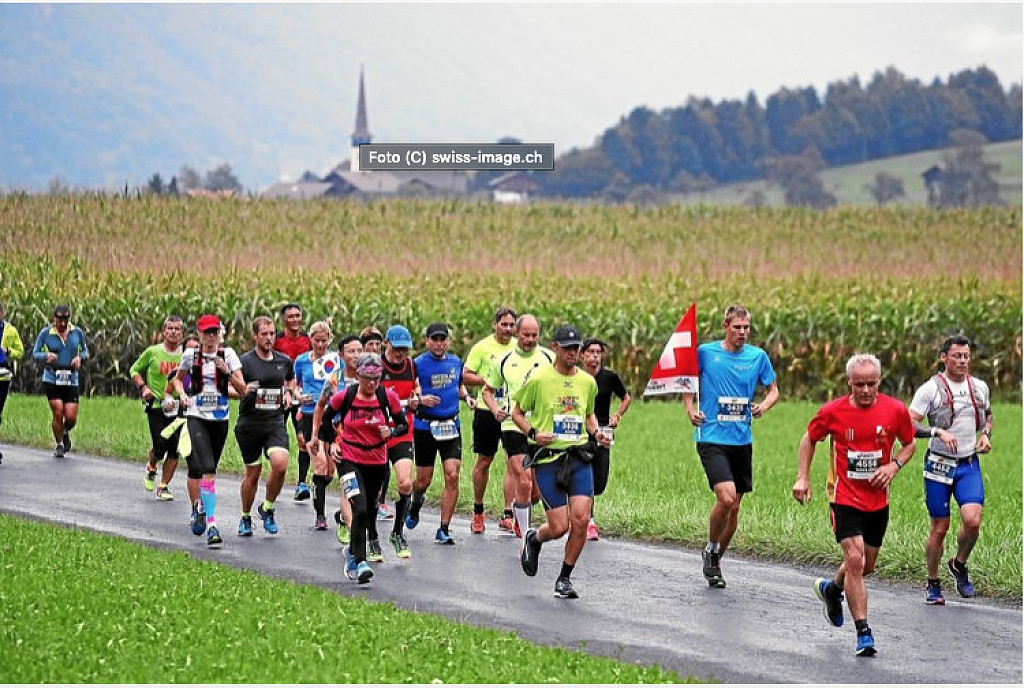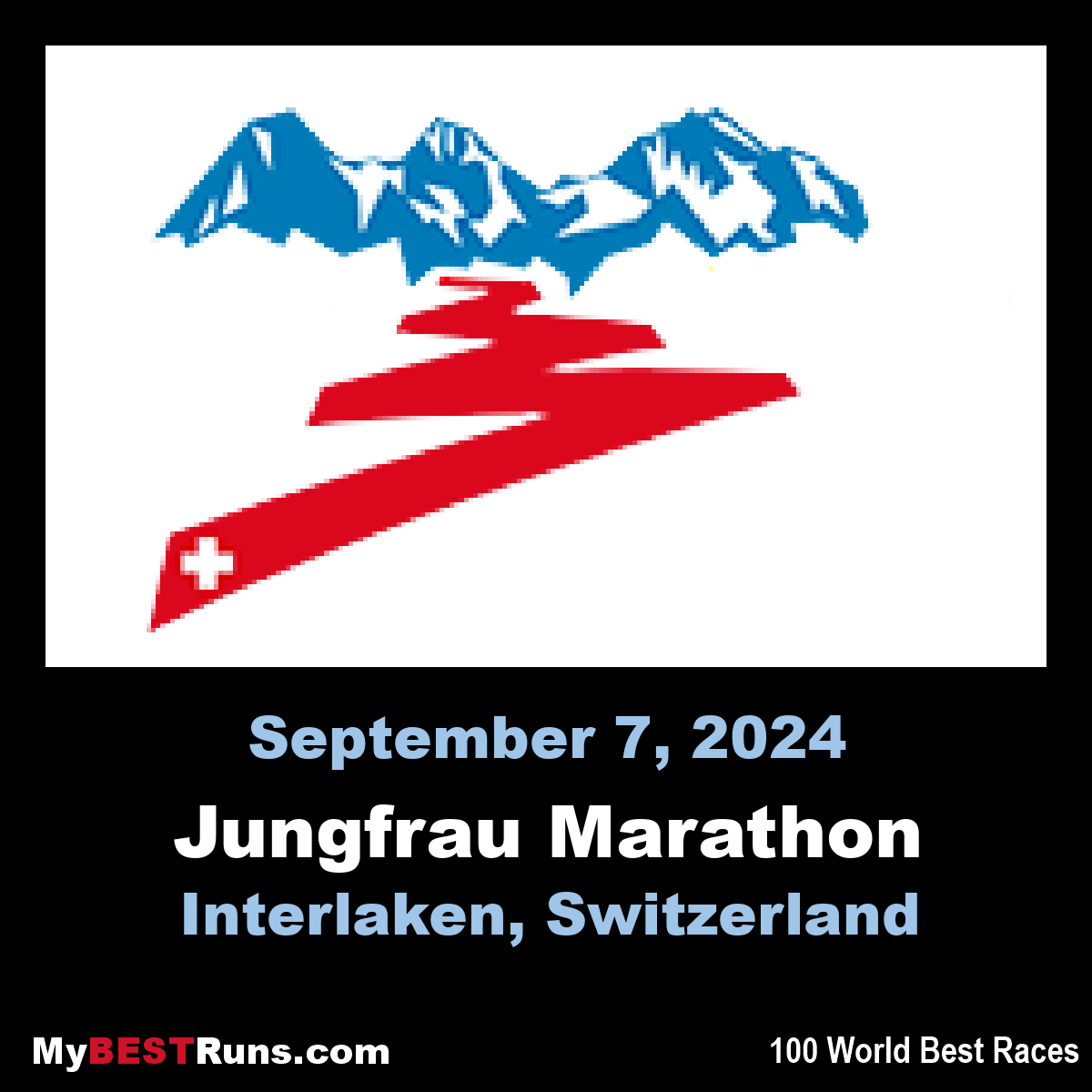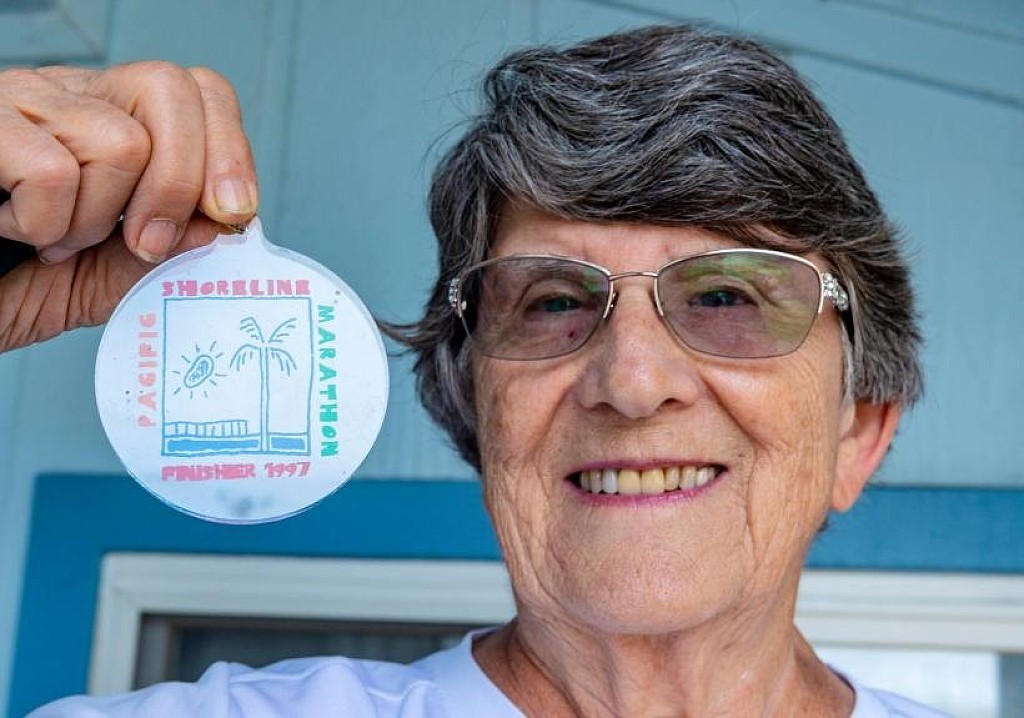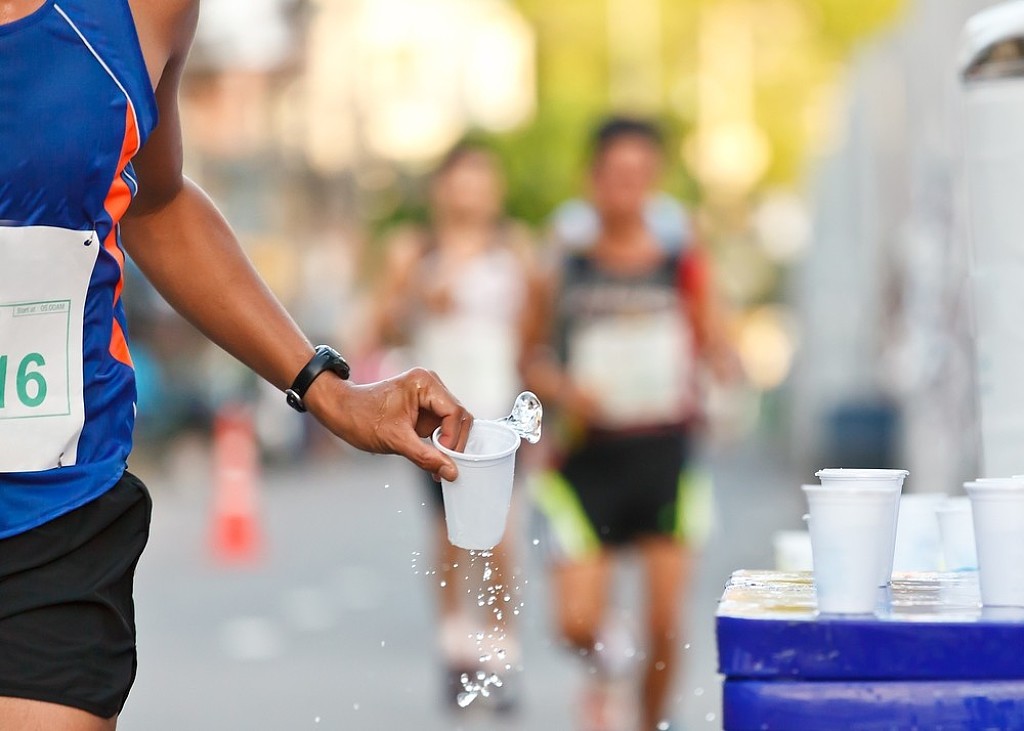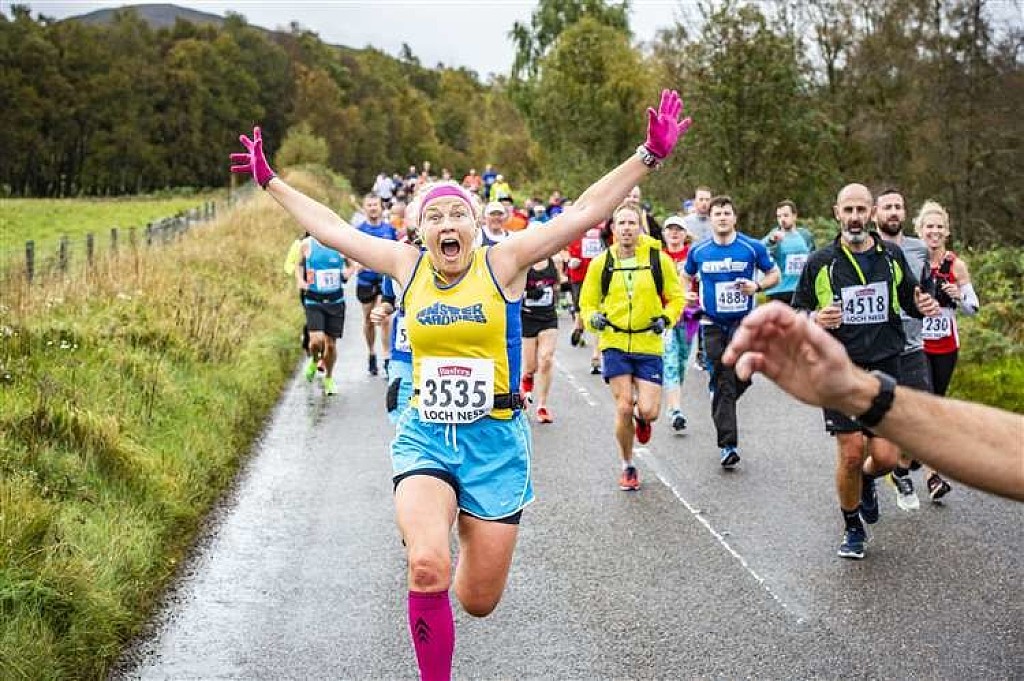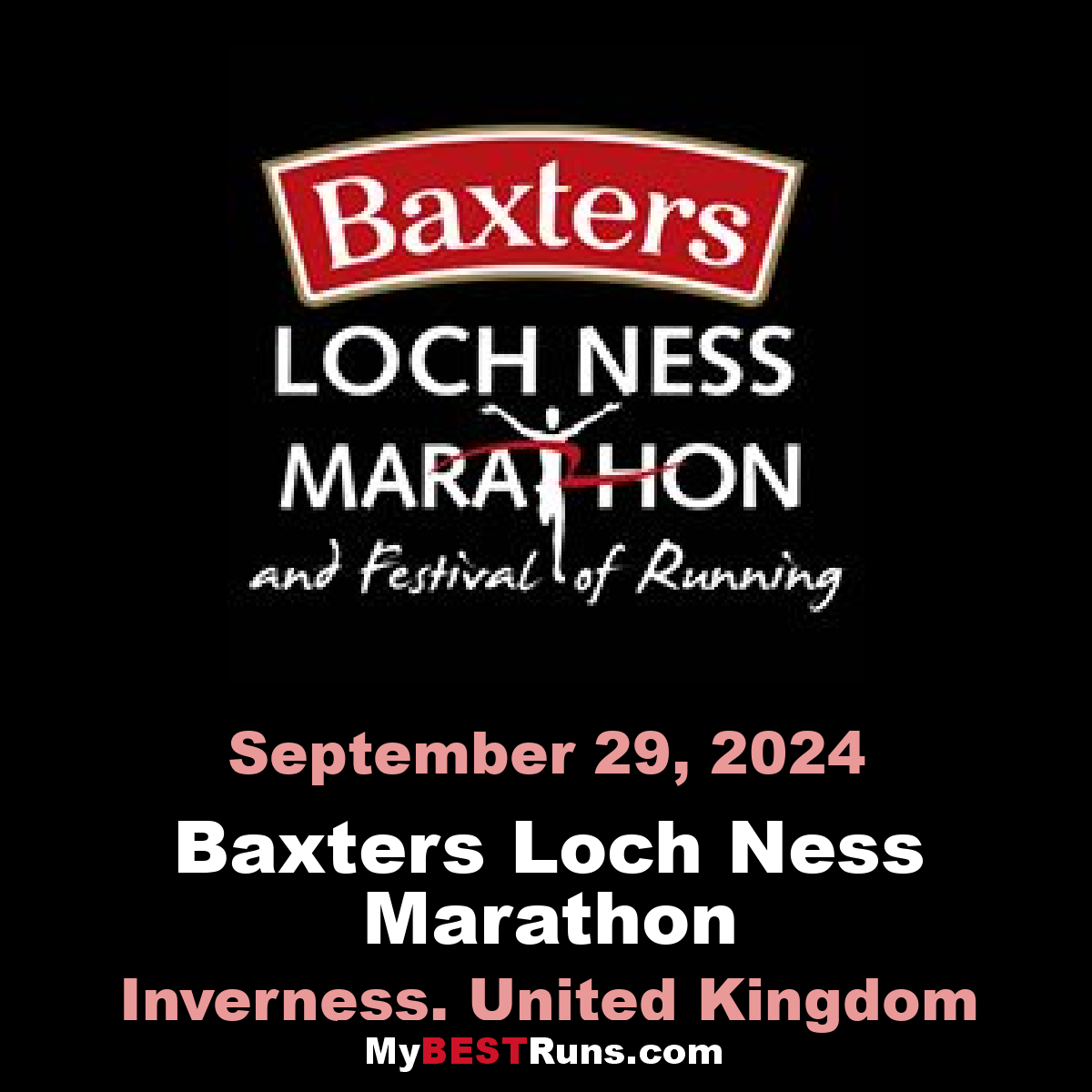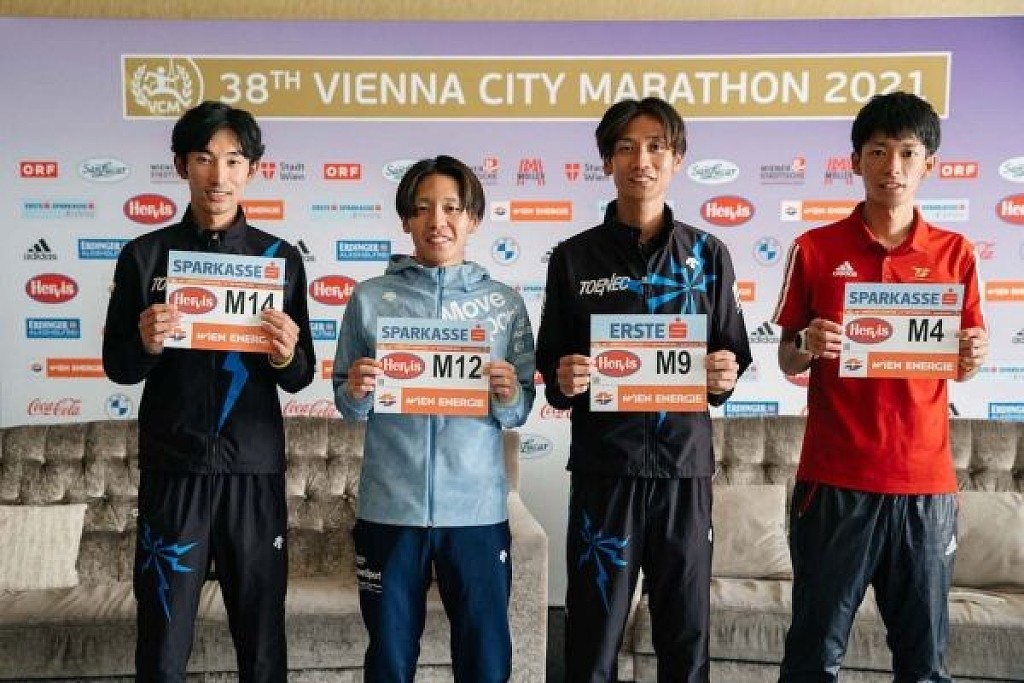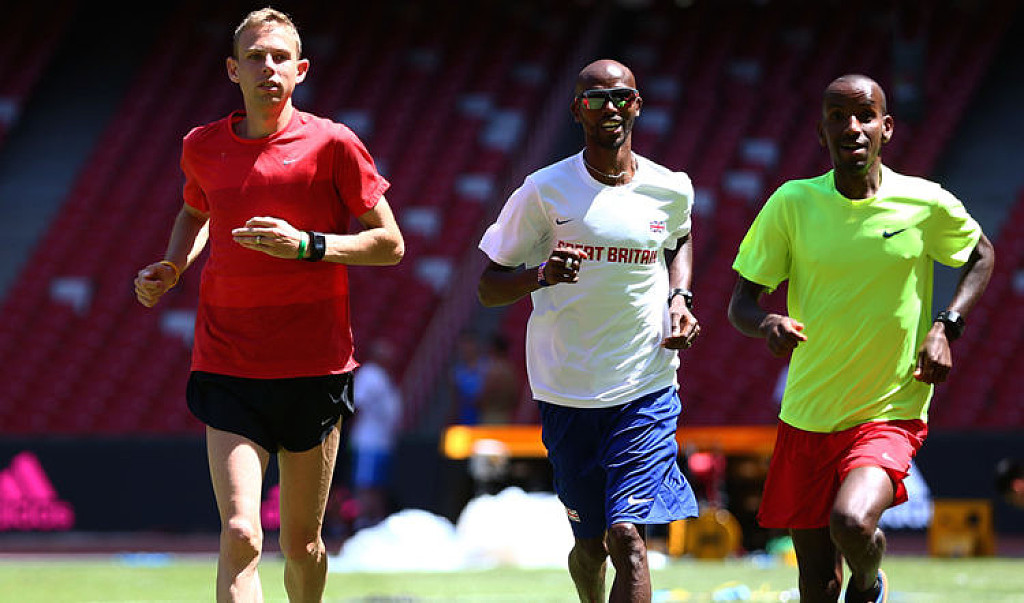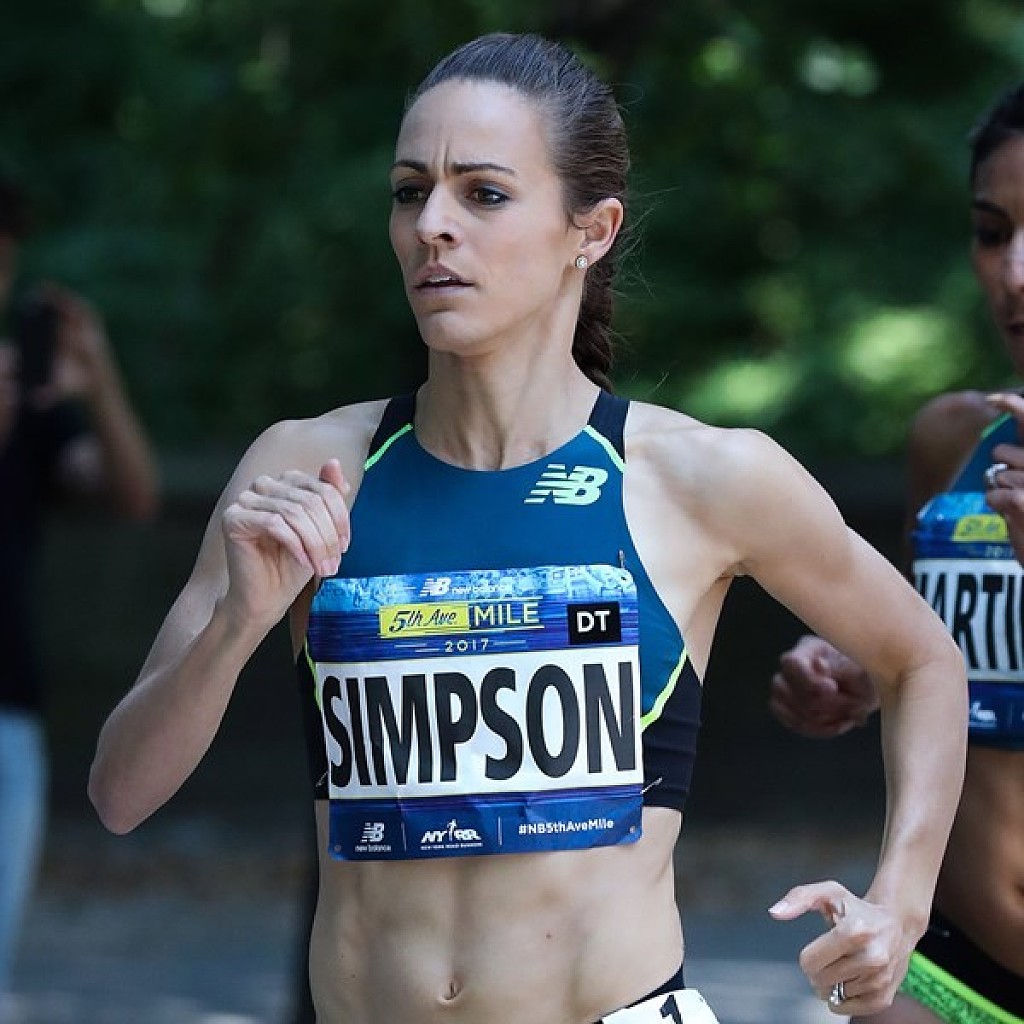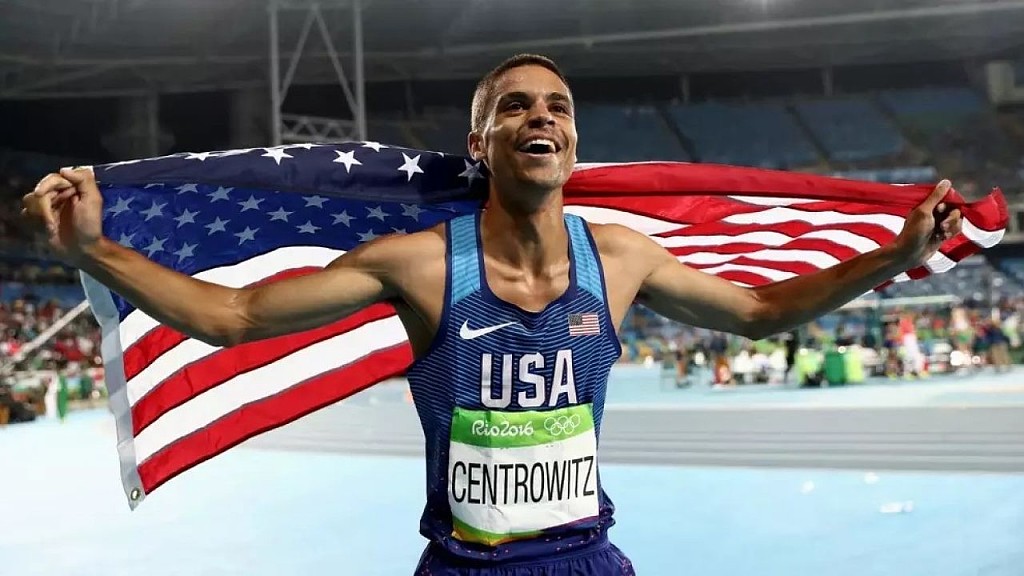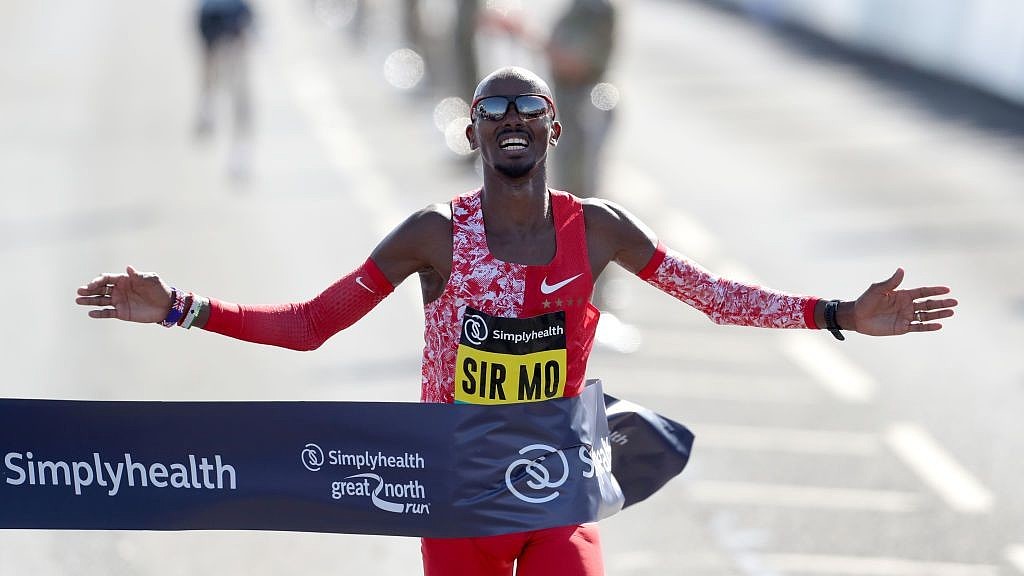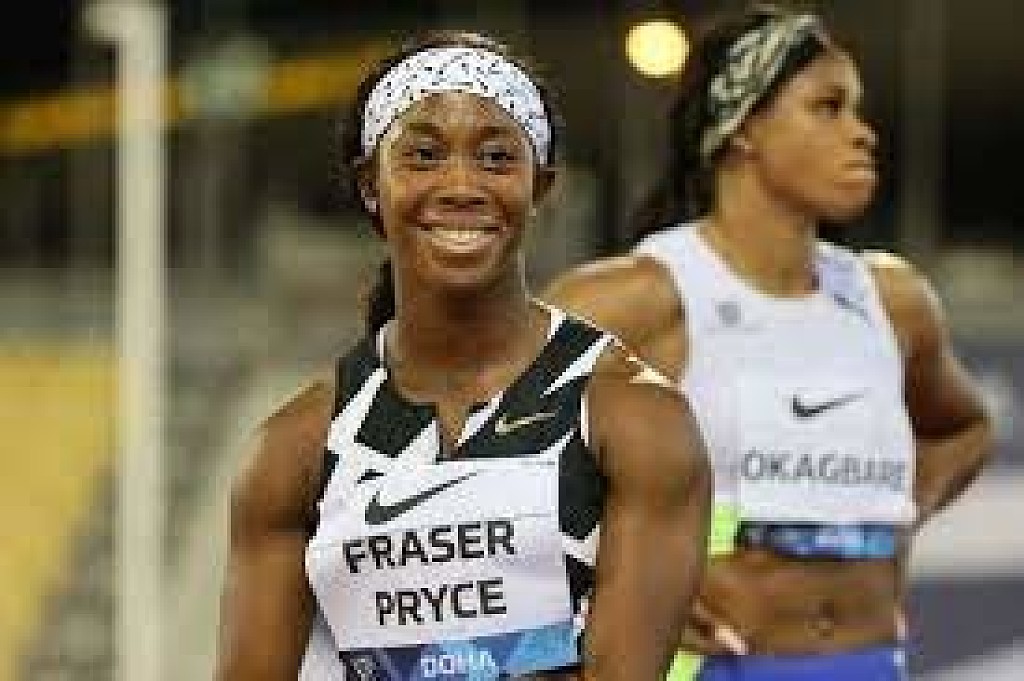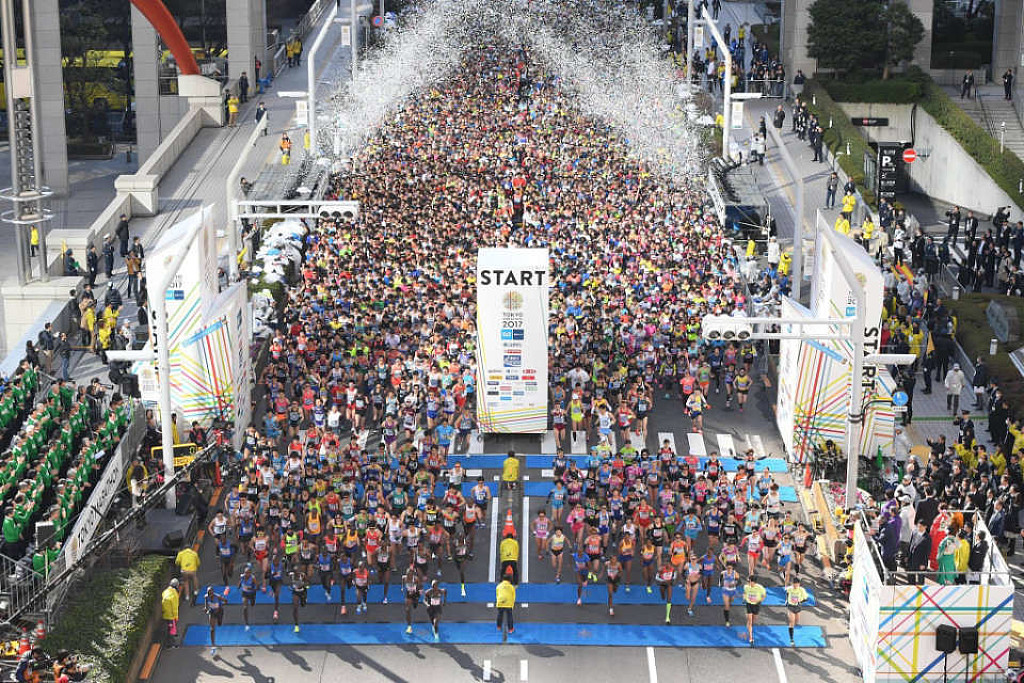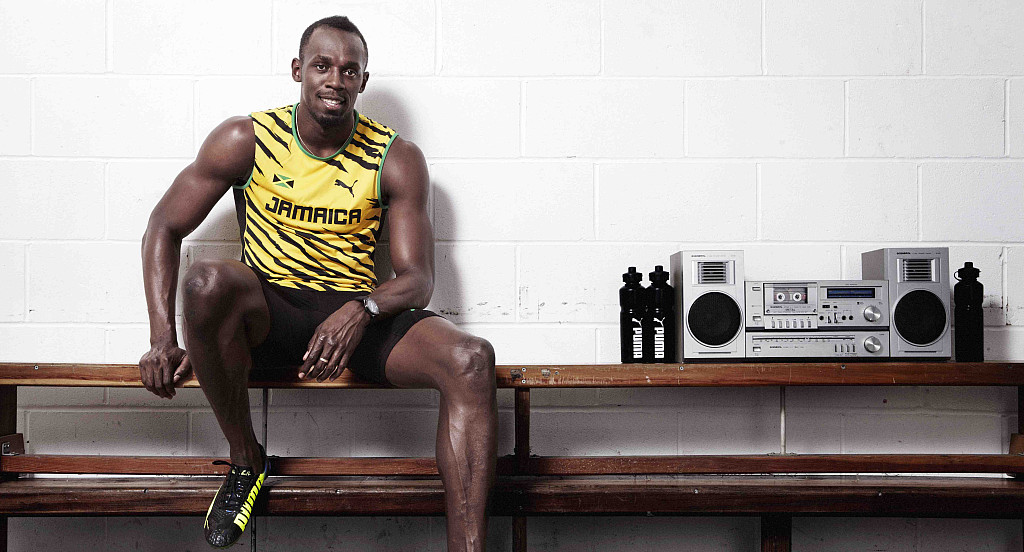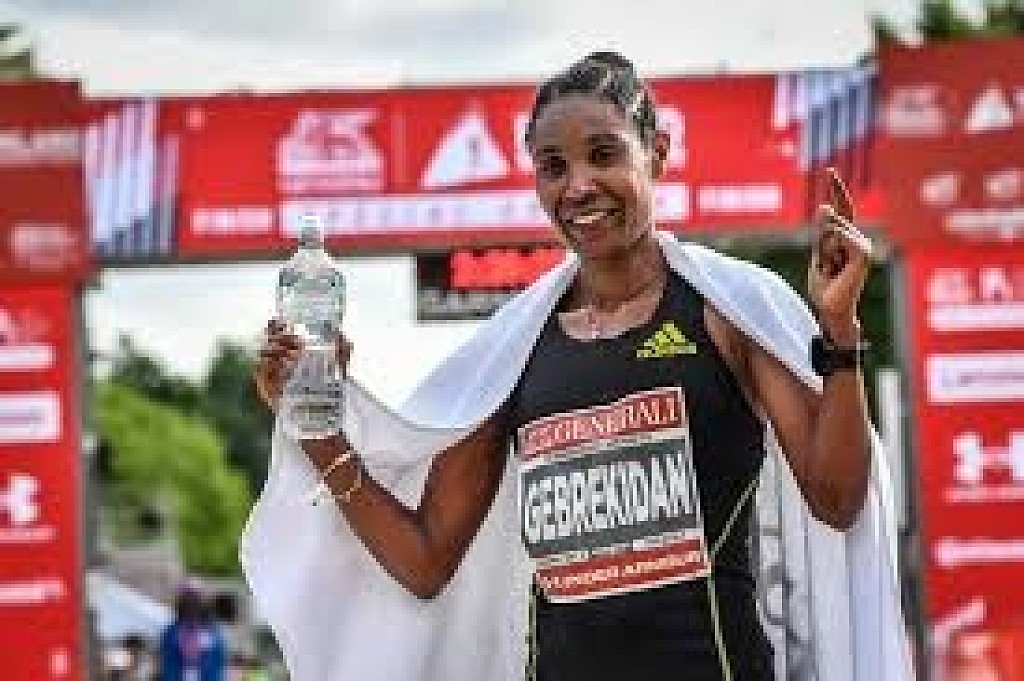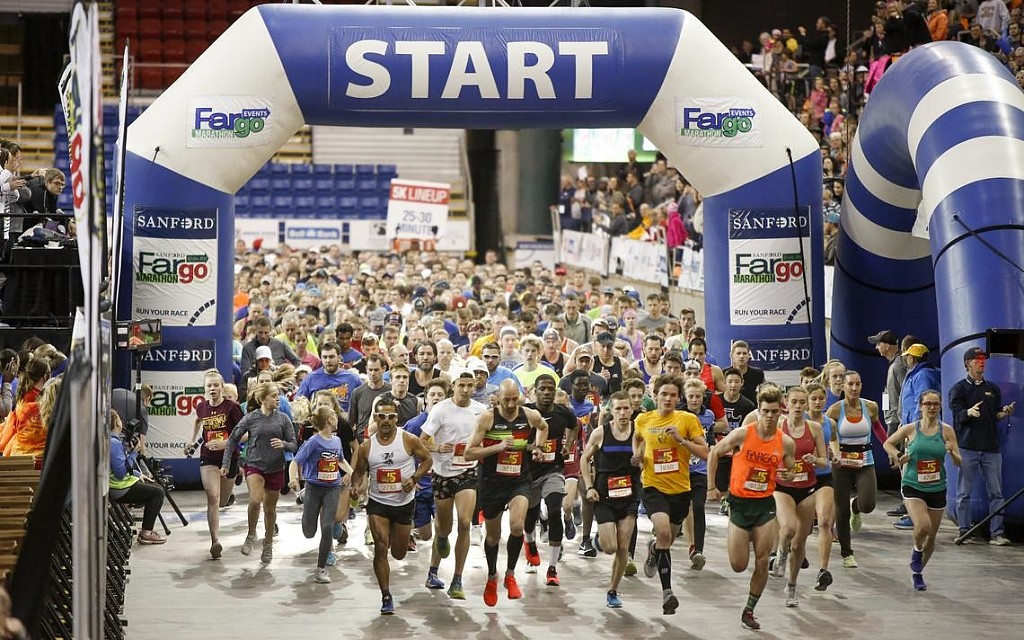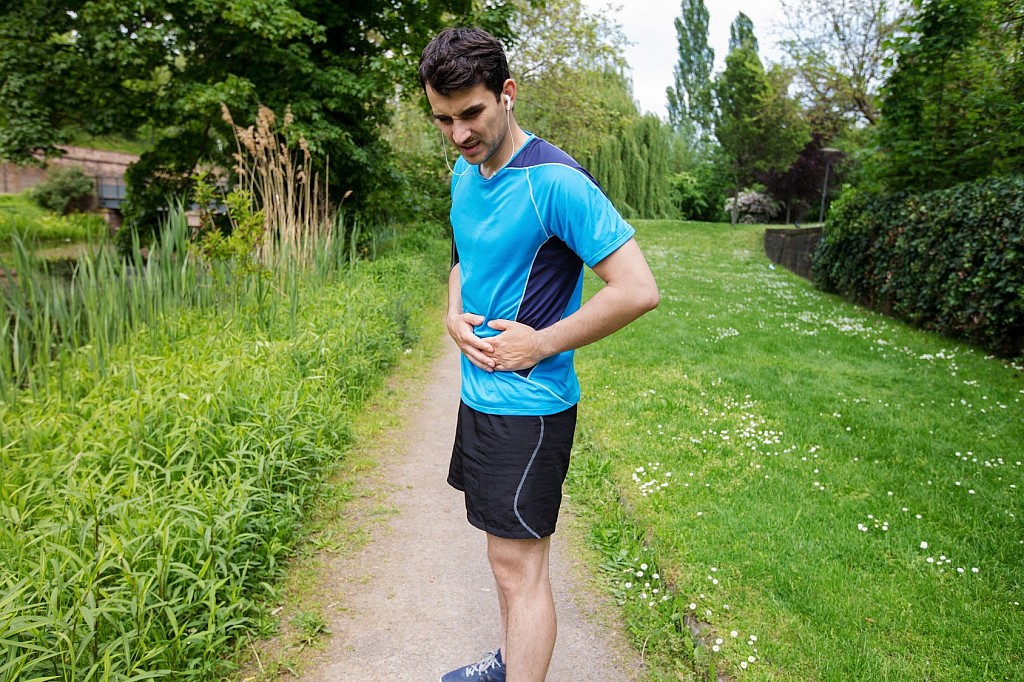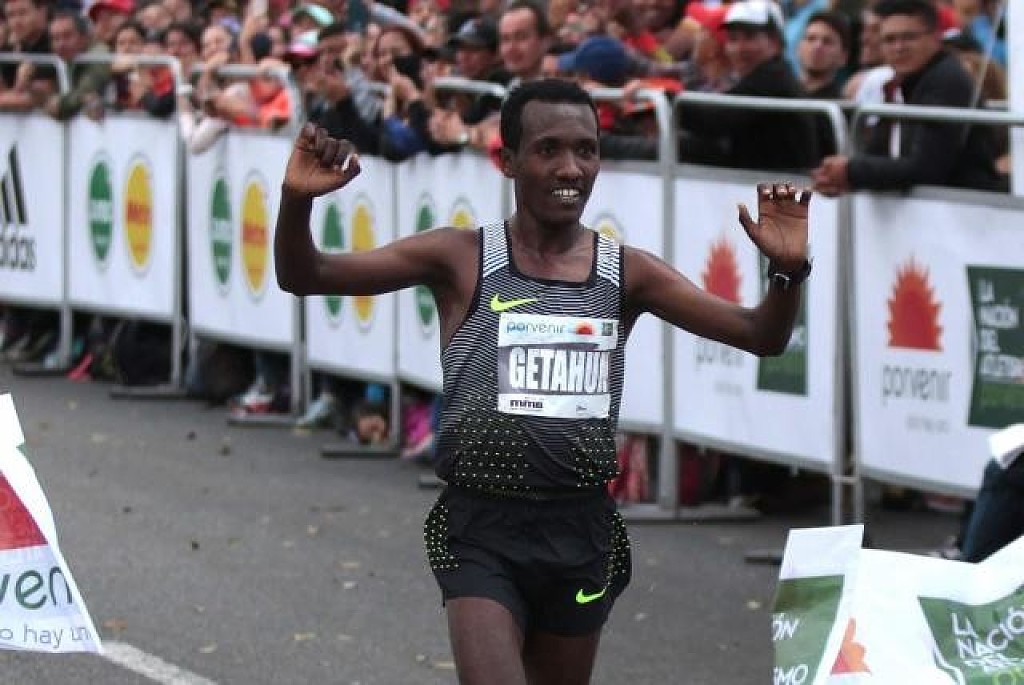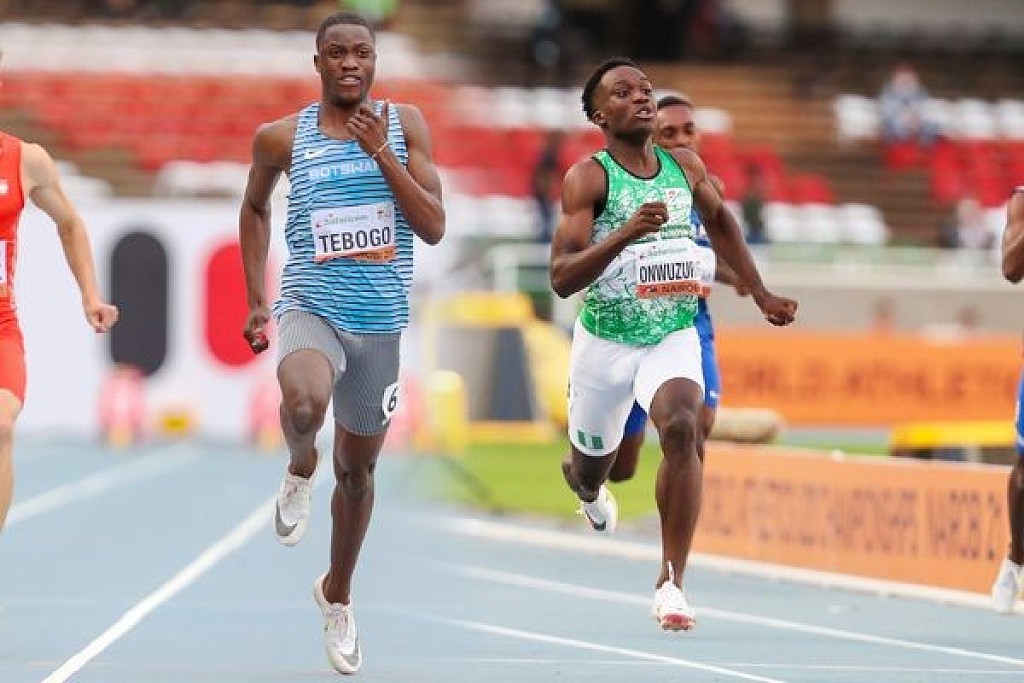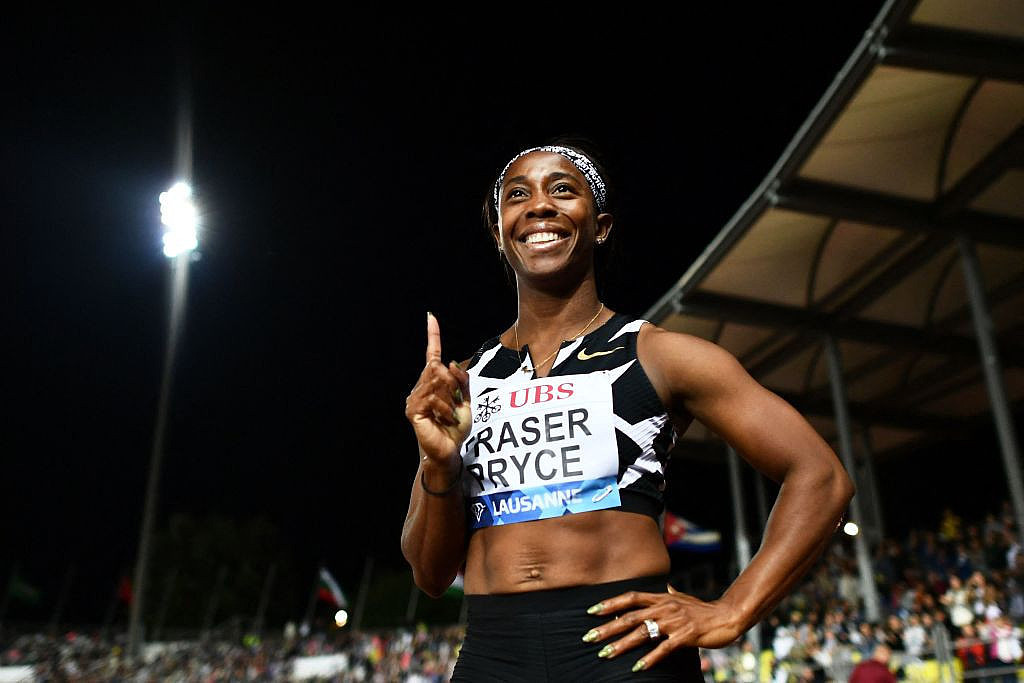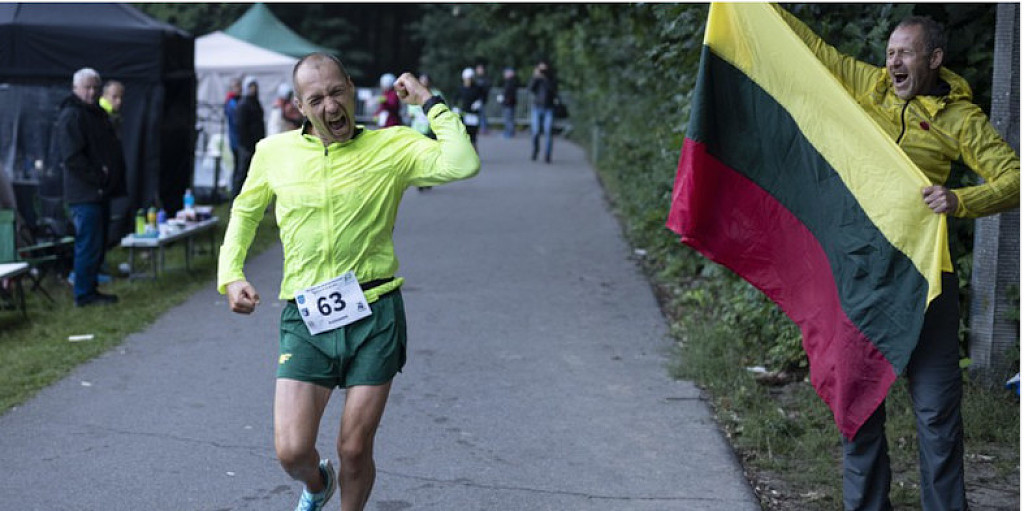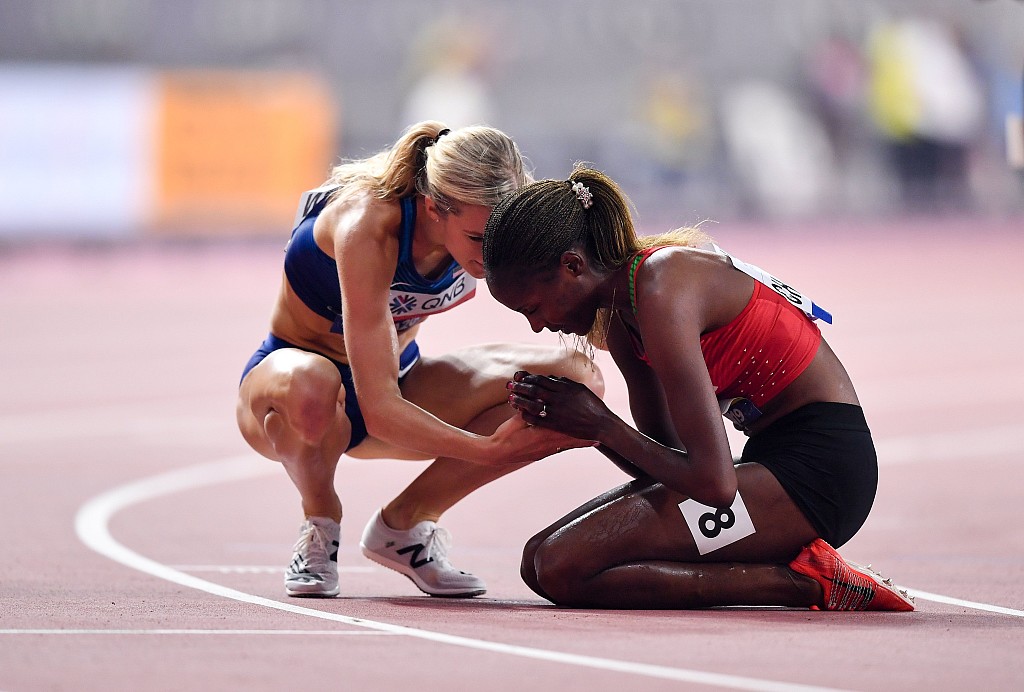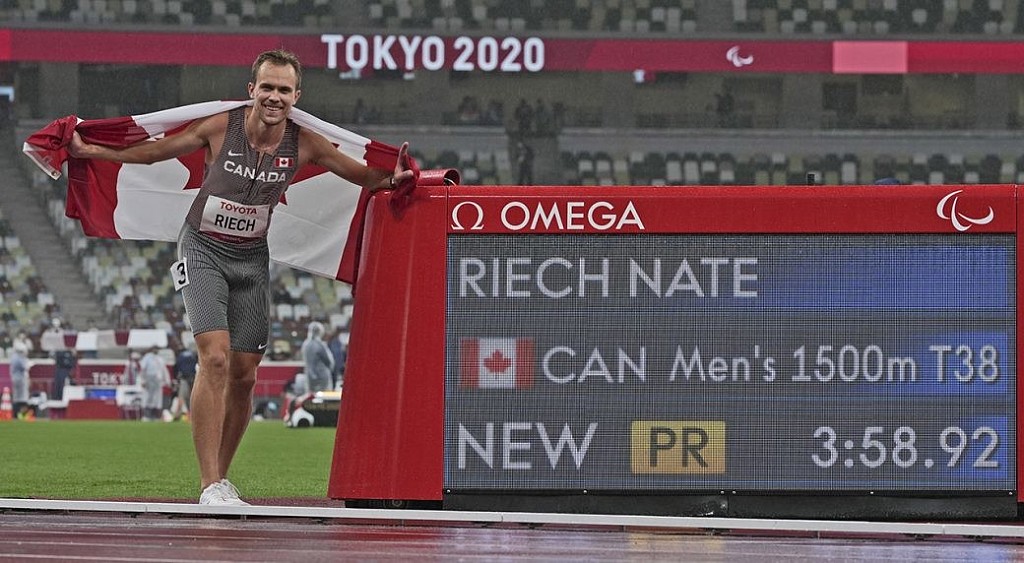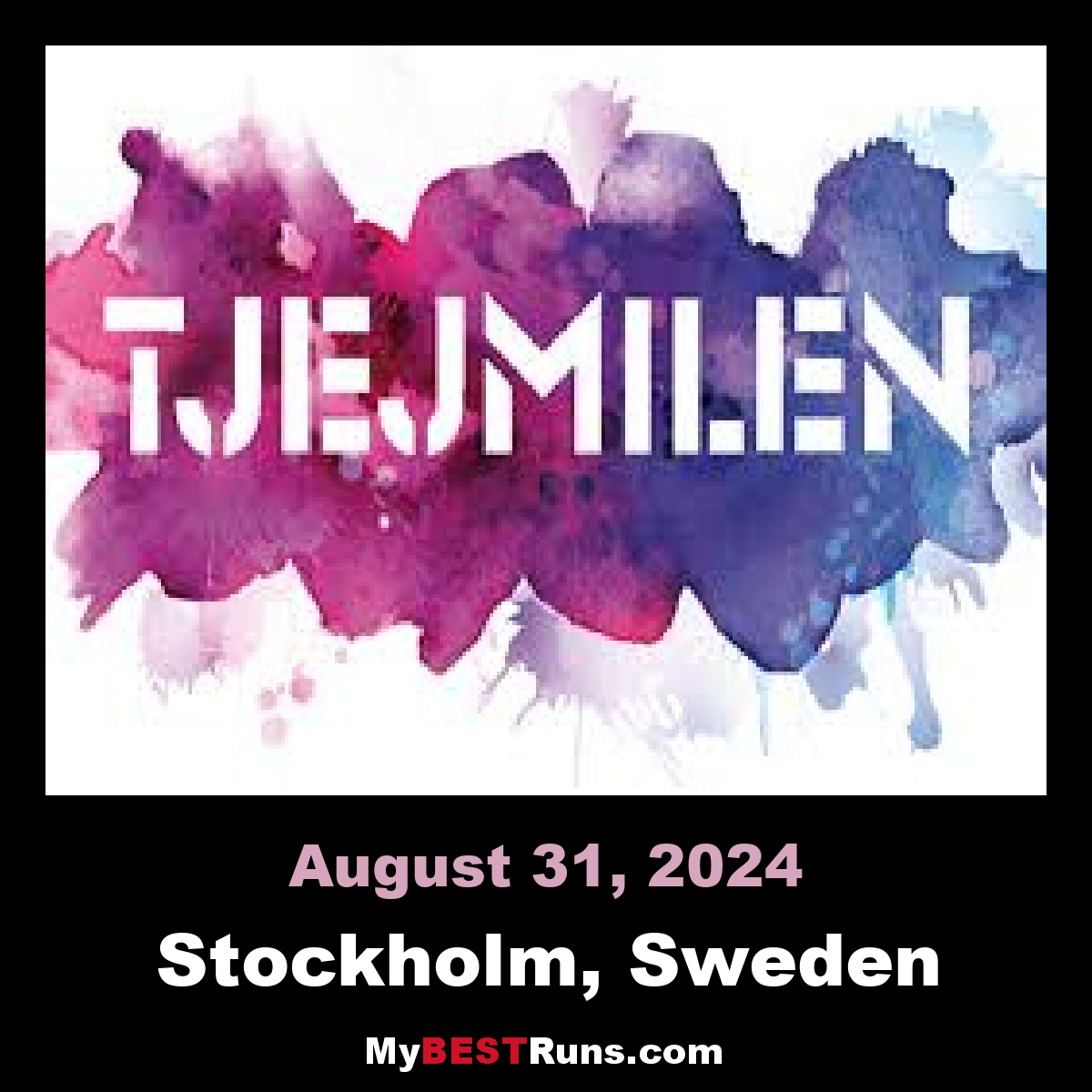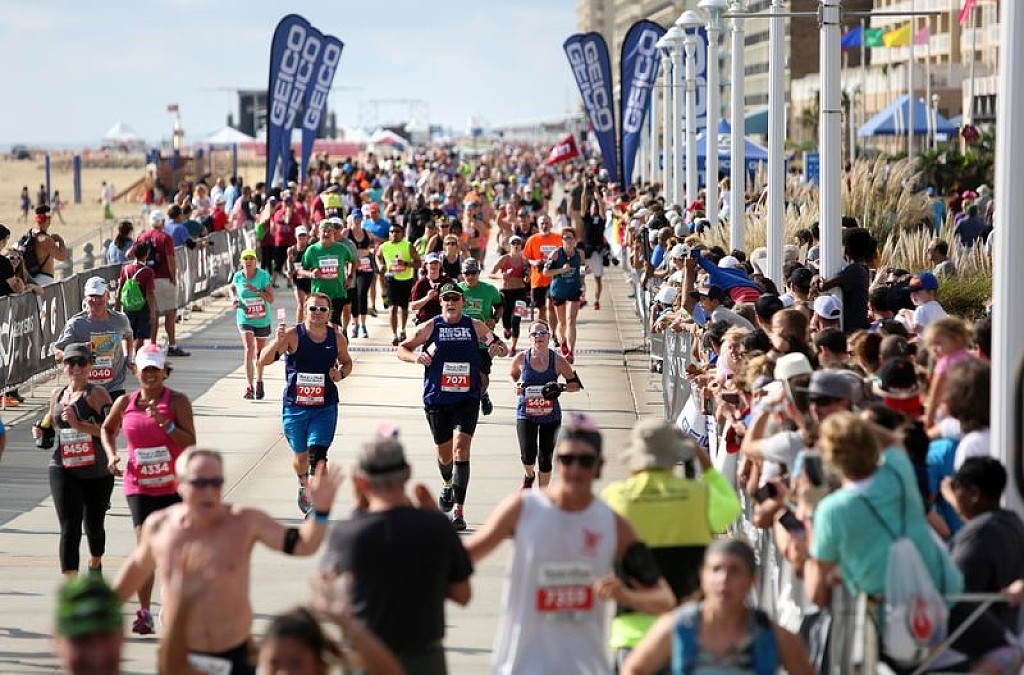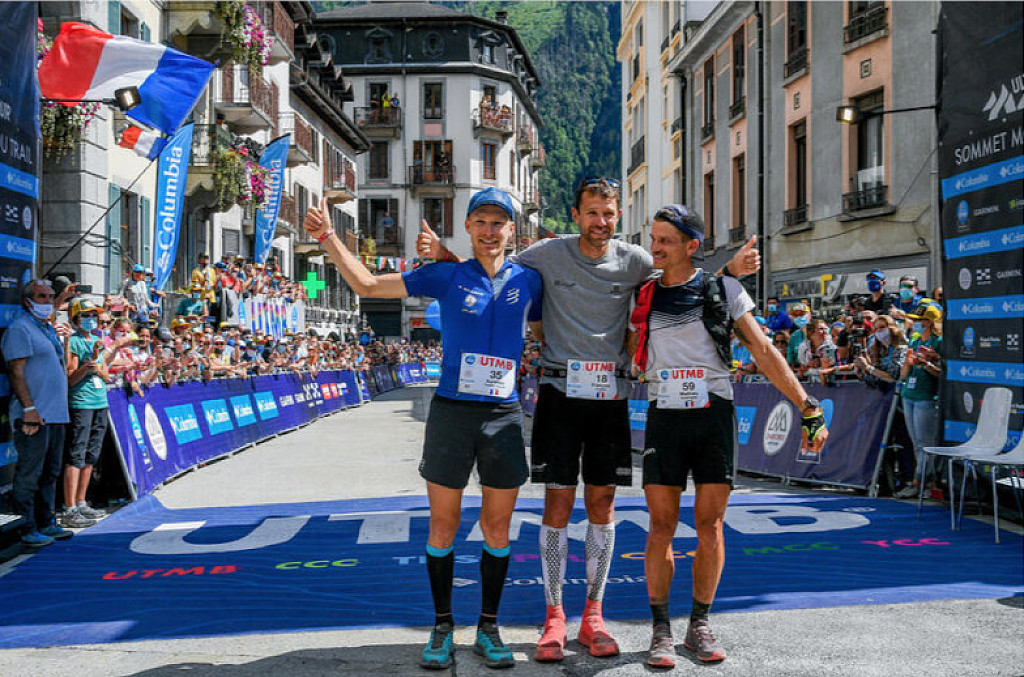Running News Daily
Running News Daily is edited by Bob Anderson in Mountain View, California USA and team in Thika Kenya, La Piedad Mexico, Bend Oregon, Chandler Arizona and Monforte da Beira Portugal. Send your news items to bob@mybestruns.com Advertising opportunities available. Over one million readers and growing. Train the Kenyan Way at KATA Running Retreat Kenya. (Kenyan Athletics Training Academy) in Thika Kenya. Opening in june 2024 KATA Running retreat Portugal. Learn more about Bob Anderson, MBR publisher and KATA director/owner, take a look at A Long Run the movie covering Bob's 50 race challenge.
Index to Daily Posts · Sign Up For Updates · Run The World Feed
YCMA is Holding their 43rd Annual Whiskey Row Marathon
Get ready to run! Last year, many were “tough enough” to do the virtual marathon. Now, it’s time to put your feet to the pavement instead of hands to the keyboard and prove it. On October 9, 2021, the James Family Prescott YMCA presents the 43rd annual Whiskey Row Marathon – the oldest continuously run marathon in Arizona and one of the toughest in the U.S. The 43rd annual Whiskey Row Marathon is proudly sponsored by Dignity Health Medical Regional Medical Center.
In the late 1800s, booze poured freely down Prescott’s Montezuma Street, which came to be known as Whiskey Row. Now in 2018, Montezuma Street hosts a slightly healthier activity, the Whiskey Row Marathon and its associated Half Marathon, 10K, 5K, and a .3 Mile Dash.
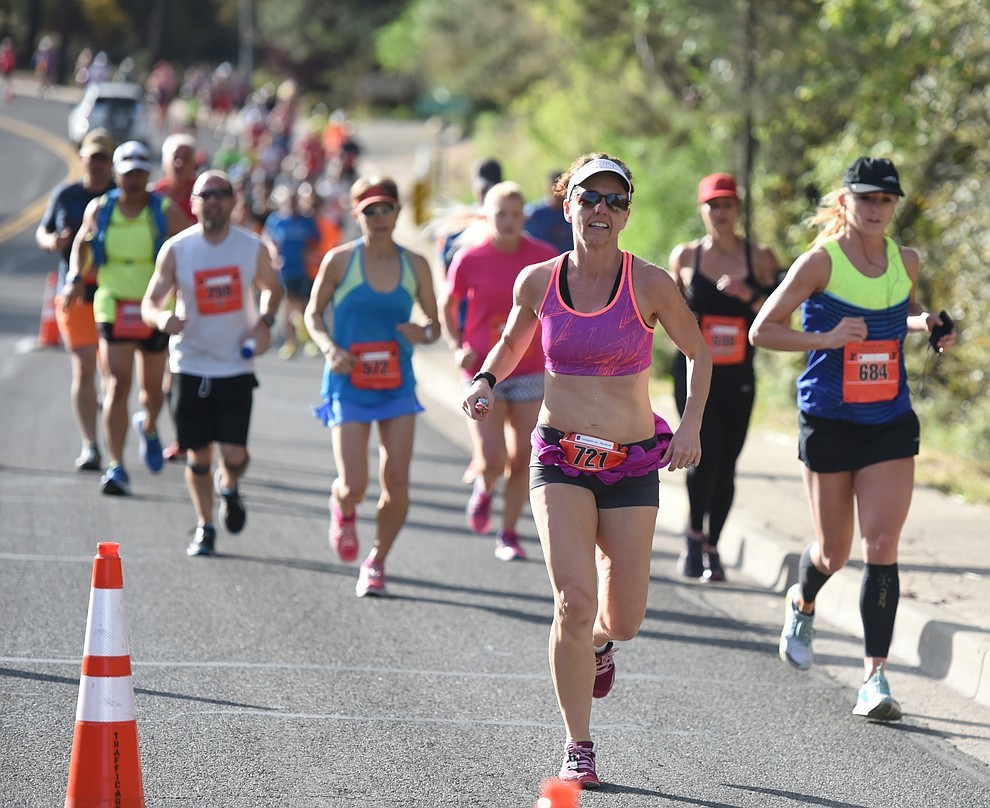
By the end of the longer races, runners will yearn for the “good ol’ days” when you could drown your pain with a glass of stiff whiskey in the neighboring saloons. Instead of whiskey, runners of the Half Marathon and Marathon will be treated to a post-race massage, delicious refreshments, and finish line Expo, which will be happening on the Mile High Middle School Football Field. The free food and massage will be welcomed after running up and down 3,000 feet or so in the thin mountain air.
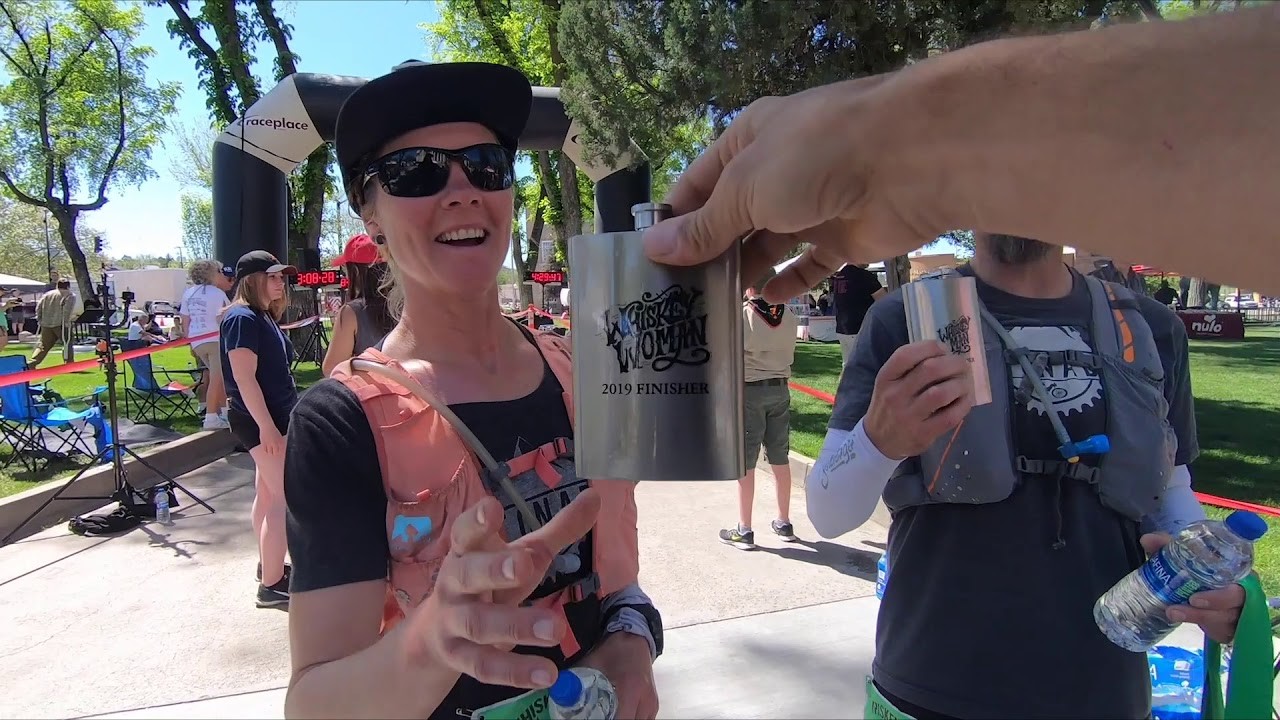
The first and last five miles are run along open, paved roads, while the remainder of the race cuts through the Ponderosa pine-covered Prescott National Forest on dirt roads.
This event spans two generations of Prescottonians, and it’s a great way to introduce newcomers to the area to see the beauty of Prescott firsthand and not whizzing along in a car at 40 miles an hour.
To make this a full weekend of fun and fitness, this year’s marathon also includes a variety of events:
Friday, October 8th
3:00 pm-8:00 pm: Packet pick-up and Sports Expo at the YMCA
Get last-minute tips from people who know the course best, meet the event sponsors, and pick-up your swag bag and commemorative shirt.
Saturday, October 9th
5:00 am-7:30 am: Saturday morning packet pick-up at Matt’s Saloon
5:00 am: Full Marathon Early Start
6:00 am: Full Marathon Start
7:00 am: Half Marathon Start
7:10 am: .5 Mile Dash Start
7:30 am: 10K Start
8:00 am: 5K Start
Finish Line Expo (at Mile High Middle School Field)
This community event would not be possible if it were not for the generous sponsors. Recognition and special thanks go to Signature Sponsor: Dignity Health Yavapai Regional Medical Center. Community Sponsors: City of Prescott, Guild Mortgage. Family Sponsors: Rox Media Group, Prescott Periodontics & Implant Dentistry. Youth Sponsors: Maggin 99.1, Damon Olsen & Family, Stacey Haggart Realtor Better Homes & Garden/Bloomtree Realty, Better Homes and Garden/Bloomtree Realty, Laura Winniford, Papa John’s Pizza, ASIS Massage, Natural Healing Garden, Sparklight Advertising, Life Line Ambulance, Pepsi, and more.
For more information about running the race or volunteering to help at the water stations, registration, finish line, and course set-up and clean up, visit whiskeyrowmarathon.com or call Jaime DeJoseph, Race Director at 928-445-7221 or jaime.dejoseph@prescottymca.org.
(09/15/2021) ⚡AMPWhiskey Row Marathon
Come join runners from all over the country in this prestigious event – and show your friends and family that you are "Tough Enough"! Are You Tough Enough? As an Arizona running tradition, the Whiskey Row Marathon is among the toughest races in the country. Featuring rugged terrain, an altitude in excess of one mile above sea level and, on...
more...Burundi Francine Niyonsaba breaks 2,000m world record
In her last race of the season, Francine Niyonsaba broke the women’s world record in the 2,000m, running 5:21.56 at the Continental Tour meet in Zagreb, Croatia. Although this distance is uncommon at most track meets, her time is outstanding, as she averaged 2:40 per kilometer during the race, hitting the one-mile marker in 4:17.
This is icing on the cake for Niyonsaba, who made a transition from the 800m to distance running to compete in the Diamond League and Olympics. She remarkably finished fifth in the Olympic 10,000m and has won her last four races, including the Diamond League 5,000m title, where she took down race favorite Hellen Obiri of Kenya.
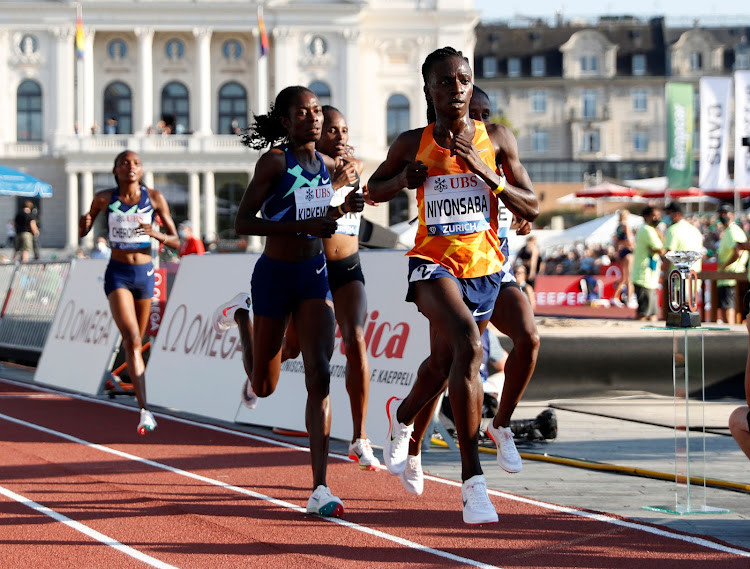
The previous outdoor 2,000m record was held by Irish runner Sonia O’Sullivan, who ran 5:25.36 in 1994.
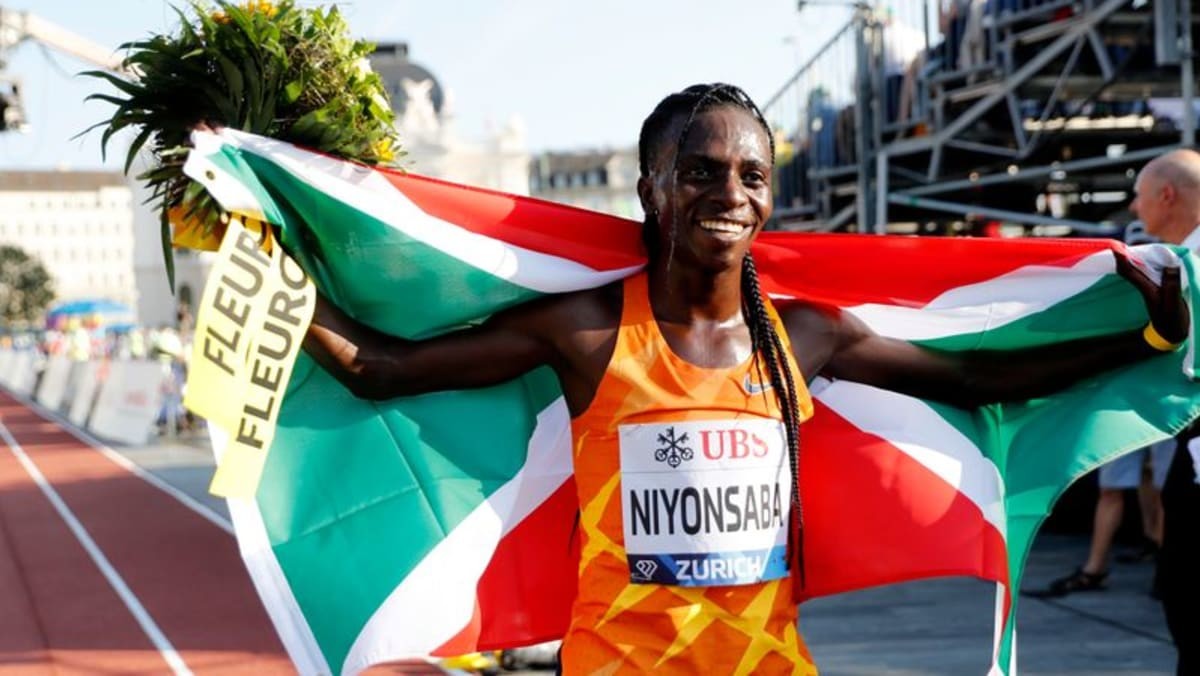
The indoor record, which is 5:23.75 (set by Genzebe Dibaba in 2017), was faster. Today Niyonsaba’s 5:21.56 today surpasses both records.
Canadian record holder Matt Hughes competed in the 3,000m steeplechase in Zagreb and finished fifth, in 8:28.14. Hughes caps off a personal best season, finishing sixth in the steeplechase at the Tokyo Olympics in August.
(09/15/2021) ⚡AMPby Marley Dickinson
Oregon’s Cole Hocker goes pro, he has signed with Nike
University of Oregon sophomore no more, as Cole Hocker announced on his Instagram on Monday that he has signed a professional contract with Nike.
The former University of Oregon Duck follows in the footsteps of other former American Oregon Ducks Matt Centrowitz, Galen Rupp and Andrew Wheating to go professional before finishing university.

Hocker has had a phenomenal season, winning the U.S. Olympic Trials as a 20-year-old and placing sixth in the 1,500m at the Tokyo Olympics, where he ran a personal best time of 3:31.40.
He is also a three-time NCAA champion on the track in one season, winning the mile and 3,000m indoors, and the 1,500m outdoors.

If Hocker chose to return to Oregon, he had three years of eligibility remaining for cross country and outdoor track. He was redshirted (held from competition) in 2019 due to the pandemic, saving him a season of eligibility.
It has not been announced which club Hocker will be training with or if he will continue training with the University of Oregon team.
(09/14/2021) ⚡AMPby Marley Dickinson
Ready, Set, Explore! Trail Running Preparation Tips
While trail running is all about enjoying the moment and having fun, taking a low-key approach to trail running doesn’t necessarily equal no preparation whatsoever.
Trail running is an easy way to explore and enjoy nature, suitable for just about everyone, but there are a few key things to keep in mind before heading out on such an adventure.
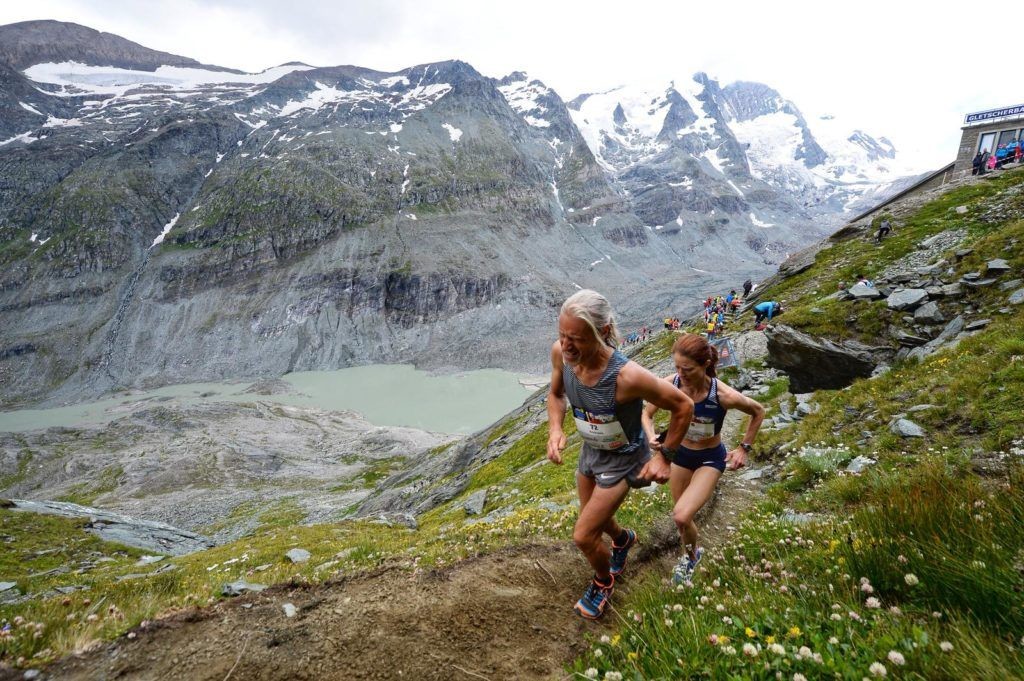
Everyone can give it a try – just make sure you’ve done the right trail running preparation.
1. PICK A TRAIL IN A FAMILIAR AREA
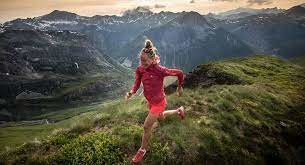
Especially if you’re new to trail running, stay in an area you’re familiar with or stick to well-marked trails and bring an offline map.
Also prepare for the possibility of getting lost by bringing along some extra water and snacks. Stick to well marked trails unless you have a solid knowledge of the area and make sure you have the gear and skill set needed for where you plan to go.
2. PREPARE FOR GETTING LOST
Whether you plan to run trails nearby or somewhere more remote you’ve never been before, make sure you know where you’re going and can find you’re way back.
Marked hiking trails are a safe way to start, but as it can be tricky to find your way around in new places. Also, the markings on trails are not always the best, so make sure you have some sort of a backup (like an offline map) in case you get lost. This is essential for trail running preparation.
3. BRING EXTRA WATER AND SNACKS
Before trail running, you don’t need any specific pre-run nutrition – fuel as you normally would. What you can do before you hit the trail is find out if there’s water in wells along the way or if the water in streams is drinkable.
If not, you’ll need to bring enough water to cover your run and then some. Same goes for nutrition – pack a lot of calories in small size, like gels or bars, and make sure you bring enough to carry you through the run and some extra calories for unexpected situations. There’s always the possibility of getting lost or the environment may slow you down and the run can get a lot longer than planned.
4. BE REALISTIC ABOUT YOUR FITNESS LEVEL
Before you head out into the wild, you need to be honest to yourself and realistically assess your experience and fitness level.
Exposed and extreme environments require great outdoor experience and specific fitness – of course, this depends on where you plan to run.
Going for a couple of hours run on a well-marked trail in a recreational area doesn’t pose quite as much challenge as climbing some serious mountains.
5. ADJUST THE LENGTH OF YOUR RUN
If you plan to run in a hilly area, it will be harder than running on flat road. But, the beauty of trail running is that it’s about enjoying the experience so keep in mind that you’re not in a hurry and just take it easy.
Soft trails and hills are easier on the joints than hammering the tarmac, but you’ll still see your heart rate climbing if you’re wearing an outdoor sports watch.
The trail running metrics I track are:
Time and elevation (distance isn’t applicable in the mountains).
For speed work, I will time an ascent and try to keep improving it.
6. ADJUST YOUR EXPECTED TRAINING TIME TO THE TERRAIN
Hilly running takes time and the terrain will slow you down. Even if you’re an experienced runner, you may still need to hike some of the longest and steepest hills.
Hilly terrain is great for strengthening your running in general. The soft surface of trail running is not as tough on the joints as road running, but your heart and lungs still get to work hard (if you want).
7. TAKE WEATHER CONDITIONS INTO ACCOUNT
You also need to plan for changing weather conditions, rain and/or wind, maybe bring a jacket. This all adds up and if you plan a longer trail run a running backpack is a great option.
Remember that the weather changes quick in some places, especially in the mountains.
8. TUNE INTO THE RIGHT MOOD
Mental prep for trail running means getting ready to relax and enjoy. Don’t obsess about running pace or distance, just focus on connecting with the nature.
Trail running is a chance to experience running wild and free in a more unstructured way than on the road.
It’s a playful form of running so the way to approach it could be: You have this amazing ability to run, so put it to some fun use!
LAST, BUT NOT LEAST, ENJOY!
Most importantly, just go out there and enjoy!
Trail running isn’t supposed to be complicated or hard – you can allow yourself to let go of the pressure to perform.
Instead of thinking about the training benefit, focus on enjoying the fresh air and being outdoors alone with your thoughts (or in great company).
(09/14/2021) ⚡AMPby Mimmi Kotka
A number of Tokyo Olympic medalists, including champions Faith Kipyegon and Peruth Chemutai, will be among the athletes in action at the Kip Keino Classic
Athletes from at least 28 countries are expected to compete when the final meeting of this year’s Continental Tour Gold series is held at the Kasarani Stadium, a World Athletics Continental Tour Gold meeting, in Nairobi, Kenya, on September 18, which recently hosted the World Athletics U20 Championships.
After winning her second Olympic 1500m title and then claiming the series crown at the Wanda Diamond League final in Zurich, Kenya’s Kipyegon will make her Kip Keino Classic debut. Uganda’s Olympic 3000m steeplechase champion Chemutai, meanwhile, returns to the event after her sixth-place finish in the inaugural edition of the meeting last year.
Both Olympic steeplechase champions will be competing, with Soufiane El Bakkali of Morocco having already been announced for the men’s race. He is set to be joined on the start line by Kenya's world U20 champion Amos Serem.

Like Kipyegon, USA’s Fred Kerley claimed a Diamond Trophy in Zurich, becoming the first athlete to ever win top series honours in both the 100m and 400m. Three years after his 400m success, Kerley won the 100m in 9.87 in Zurich and the Olympic 100m silver medallist is now set to race in Nairobi.
In men's 100m action will be the USA’s world leader Trayvon Bromell, Kenyan record-holder Ferdinand Omanyala and the USA’s Justin Gatlin, while Botswana’s Isaac Makwala has been announced for the 400m.
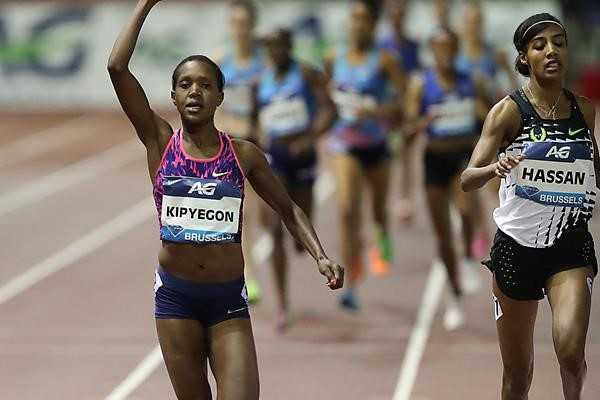
Namibia's Christine Mboma improved her world U20 record and African record to 21.78 to win the 200m Diamond Trophy in Zurich and the Olympic silver medallist returns to Nairobi, where the 18-year-old won the world U20 title last month.
The men’s hammer competition will also feature an Olympic champion, with Poland's Wojciech Nowicki among those who will be seeking more success when they compete in Kenya.
Ukraine’s world finalist Iryna Klymets will compete in the women’s event.
(09/14/2021) ⚡AMPby World Athletics
The Moscow Marathon has been postponed until 2022 amid ongoing COVID-19 restrictions in the Russian capital
The event had been scheduled to take place on September 26.
Organizers have confirmed that "due to the epidemiological situation, the city is forced not to hold mass events", resulting in the postponement of the event.

Under current restrictions in Moscow, there is a temporary ban on concerts, entertainment and sports events involving more than 500 people.
"Throughout the season, we fight for our every start and do everything possible to make the planned races take place," said race director Dmitry Tarasov, according to the Russian state news agency TASS.
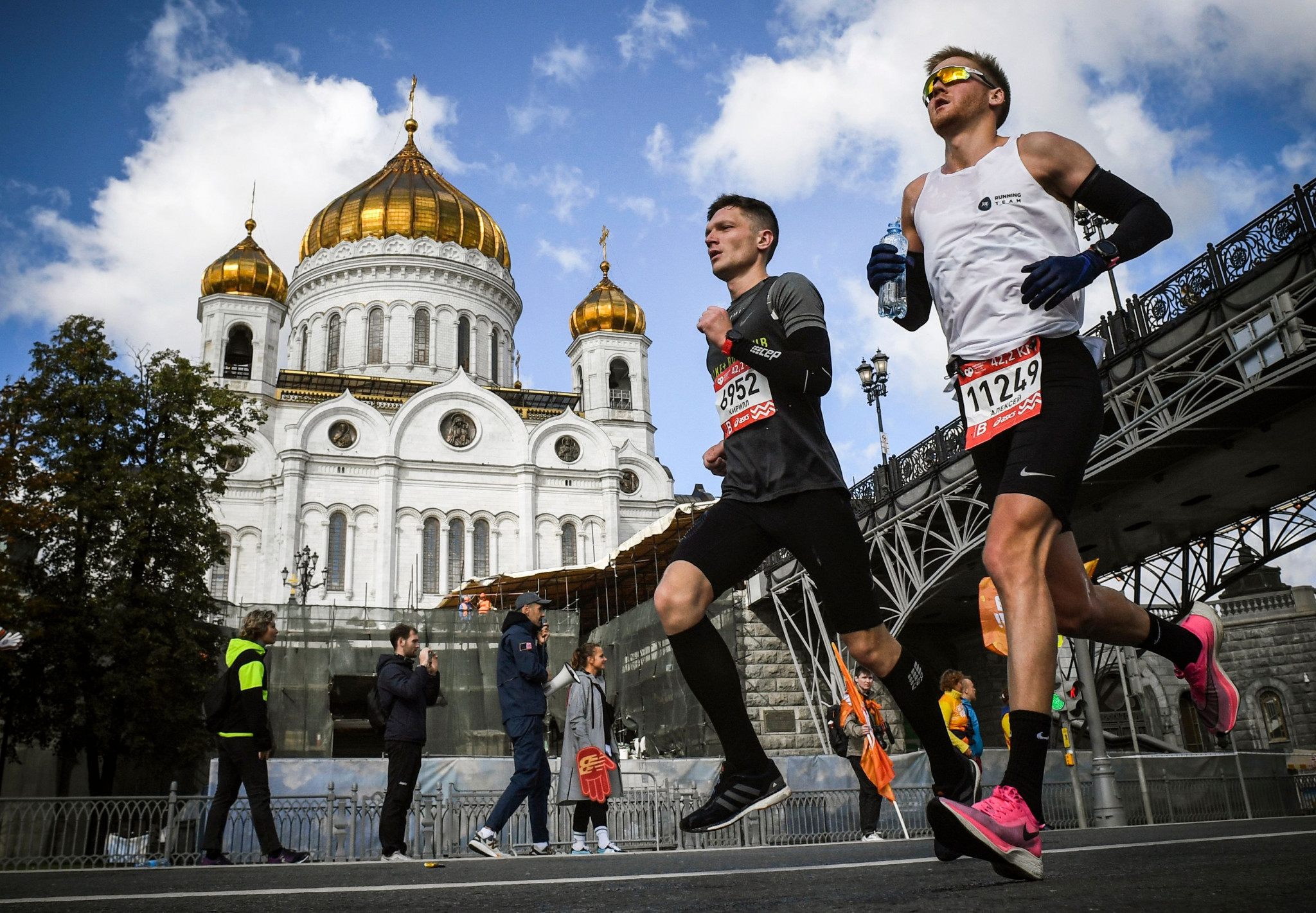
"But we live in a situation where circumstances can change every day.
"These changes concern not only sports, but also our daily life.
"The team of the running community was preparing a large-scale sports event for you, but this year it will not take place.
"We are grateful to everyone who supports us and understands the events that are taking place at the moment.
"We are looking forward to holding all the events planned until the end of the year, and we will be happy to meet you at the start."
The event would have been the ninth staging of the Moscow Marathon, which was first held in 2013.
The race takes runners across the Crimean bridge, through Tverskaya Street and Teatralniy Proezd to the walls of the Kremlin.
Organisers say the route features major landmarks in the city, including the Moscow City skyscrapers, four of the seven Stalinist skyscrapers and the Bolshoi Theater.
Despite the COVID-19 pandemic, the event took place last year.
Organisers say the event will take place next year, but remain hopeful of holding upcoming events until the end of 2021.
This includes the fast dog and fox mountain cross-country events, which are scheduled for October 2 and 3, as well as the night run on October 9.
The Moscow Half Marathon is still scheduled to take place on October 24.
(09/14/2021) ⚡AMPby Michael Pavitt
Moscow Marathon
The Absolute Moscow Marathon is the biggest event of its kind in Russia that also attracts runners from all over the world. It is a citywide celebration of sports, camaraderie and healthy lifestyle. For the last 5 years the event has grown from a small local race to an important international running event. Over 20 000 participants from all over...
more...Nike has launched the most sustainable performance shoe
On Monday, Nike launched the Air Zoom Alphafly Next% Nature, which will provide runners with the same benefits as the original Alphafly, but it is more sustainable.
The Next% Nature is a part of Nike’s Move to Zero promise, which is the brands’ journey toward zero-carbon manufacturing.
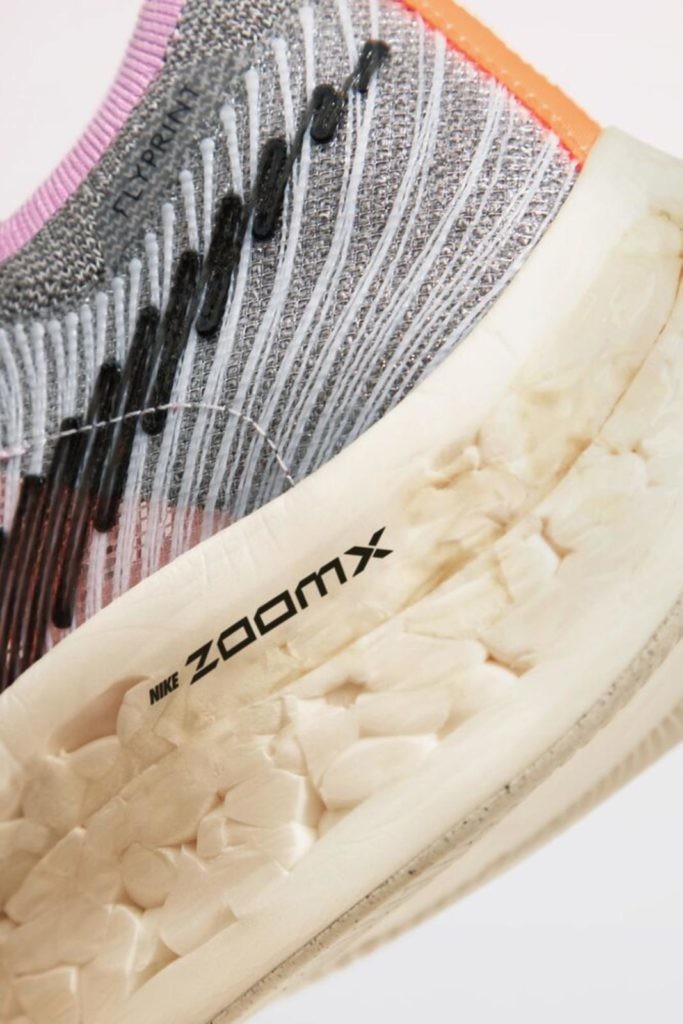
Manufactured materials make up about 70 per cent of Nike’s total carbon footprint, and right now they are innovating and scaling to lower their use of carbon material. Nike plans on taking a circular approach to achieve its goal, by focusing on eliminating waste and creating products that are better for our planet and athletes.

The midsole of Next% Nature is constructed of 70 per cent of recycled foam, and the propulsive, stiff Flyplate is made of 50 per cent recycled carbon fibre. The upper is made of Flyknit, which features at least 45 per cent recycled polyester (through a process that reduces waste by 60 per cent compared to a traditional upper).
Nike athletes logged 600 kilometres of product testing simply to examine every aspect of this shoe and found that it will continue to make a big impact on their performance, while significantly reducing runners’ impact on the environment.
Each of the adjustments they made during the production of the Air Zoom Alphafly Next Nature move Nike closer to its goal of diverting 100 per cent of the waste it sends from landfills back into our extended supply chain, with at least 80 per cent recycled back into Nike products by 2025.
The Alphafly Next% Nature will be released with Nike’s full running line on Sept. 13.
(09/13/2021) ⚡AMPby Marley Dickinson
Kenyan Vibian Chepkirui: From sleeping on the floor in Doha to triumph in Vienna City Marathon
The 38th edition of the Vienna City Marathon delivered a great comeback for major international city marathon running during the pandemic. One of the stories of the day written in Austria’s capital was that of Vibian Chepkirui, who won her debut marathon in 2:24:29.
The 27 year-old Kenyan was clearly not among the hot favorites when she arrived in Vienna. She had never run a marathon before and in the past twelve months Vibian Chepkirui was only able to compete in a single international race due to the corona pandemic. It was a 10,000 m track event in Stockholm, where she finished eighth with a personal best of 31:09.42.
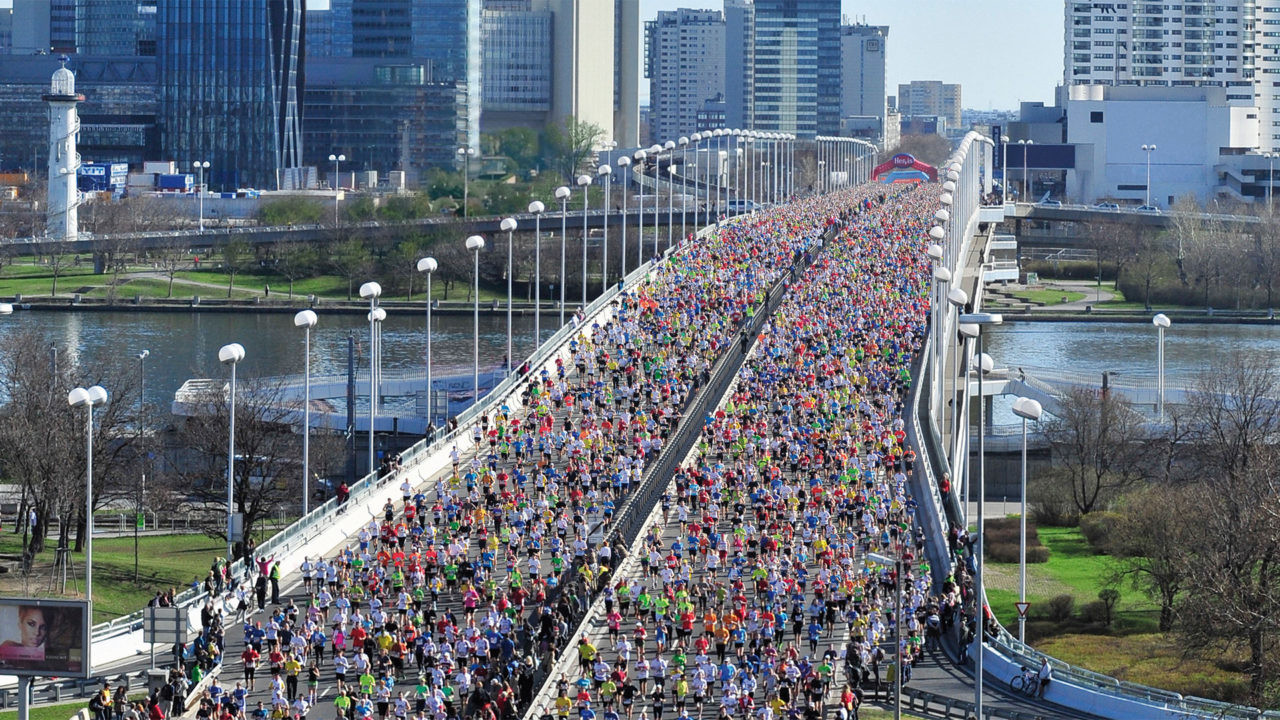
„It was a tough time because of Corona. I tried to qualify for the Olympics in Stockholm, but I did not manage. After that I decided to concentrate on a marathon,“ said Vibian Chepkirui, whose half marathon PB of 69:09 did not indicate either that something spectacular might be on the cards for her in Vienna.
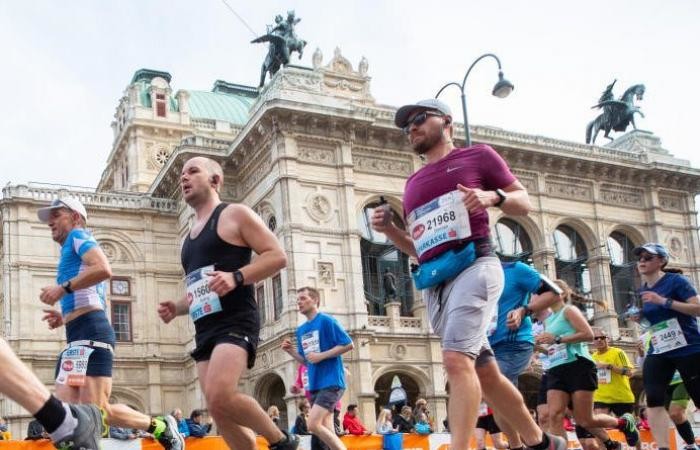
Additionally she had to cope with a major obstacle on her way to Vienna. Flying via Doha from Nairobi Vibian Chepkirui and a group of Kenyan runners - among them Vienna’s men’s winner Leonard Langat as well - missed their connecting flight. The plane from Kenya had been delayed. „They were stuck in Doha and the airline did not care. So they had to sleep on the floor,“ explained Vibian Chepkirui’s coach Julien di Maria. „Obviously this is not ideal two days before a marathon.“
Despite all this Vibian Chepkirui ran a brilliant marathon debut and dominated a strong field. At 30 k she was well in the lead and her split time of 1:40:37 pointed towards a 2:21:30 finish, well inside the course record of 2:22:12. „I was surprised to win the race, but I started to believe by the half way mark. Of course this is the biggest win in my career,“ said Vibian Chepkirui, whose husband Wesley Kangogo was her pacemaker. „The heat was a problem though. In cooler conditions I could have run at least two minutes faster. Additionally I got problems with a calf muscle with around four kilometres to go.“ She finally finished in 2:24:29.
It was only in 2020 when Vibian Chepkirui ran her first international races. She clocked her half marathon PB in Prague, the home of her management group Ikaika. In Kenya she trains in Iten and one of her training partners is the three-time winner of the Vienna City Marathon and course record holder Nancy Kiprop. Vienna’s record winner could not return to the race due to a back injury. „Nancy gave me advice on Vienna. I was trying to break her course record,“ said Vibian Chepkirui, hoping that both of them will be on the start line at the next Vienna City Marathon on 24 April 2022. One thing is sure: They will avoid flying to Vienna via Doha.
(09/13/2021) ⚡AMPVienna City Marathon
More than 41,000 runners from over 110 nations take part in the Vienna City Marathon, cheered on by hundreds of thousands of spectators. From the start at UN City to the magnificent finish on the Heldenplatz, the excitement will never miss a beat. In recent years the Vienna City Marathon has succeeded in creating a unique position as a marathon...
more...Nell Rojas Outkicks Jenny Simpson at 2021 Credit Union Cherry Blossom Ten Mile
On a warm and crystal clear late summer morning in our Nation’s Capital, American Nell Rojas won a thrilling race among the top women runners at this year’s Credit Union Cherry Blossom Ten Mile (CUCB), while Kenyan Edwin Kimutai left the rest of the men’s field in his footsteps 25 minutes into the race to handily win the men’s race.
With his 33-second victory, Kimutai honored the recent passing of his wife, while Rojas surprised all the pundits when she sprinted away from Jenny Simpson with less than one half mile left in the race to win the 2021 USATF Women’s 10 Mile Championship Presented by Toyota.
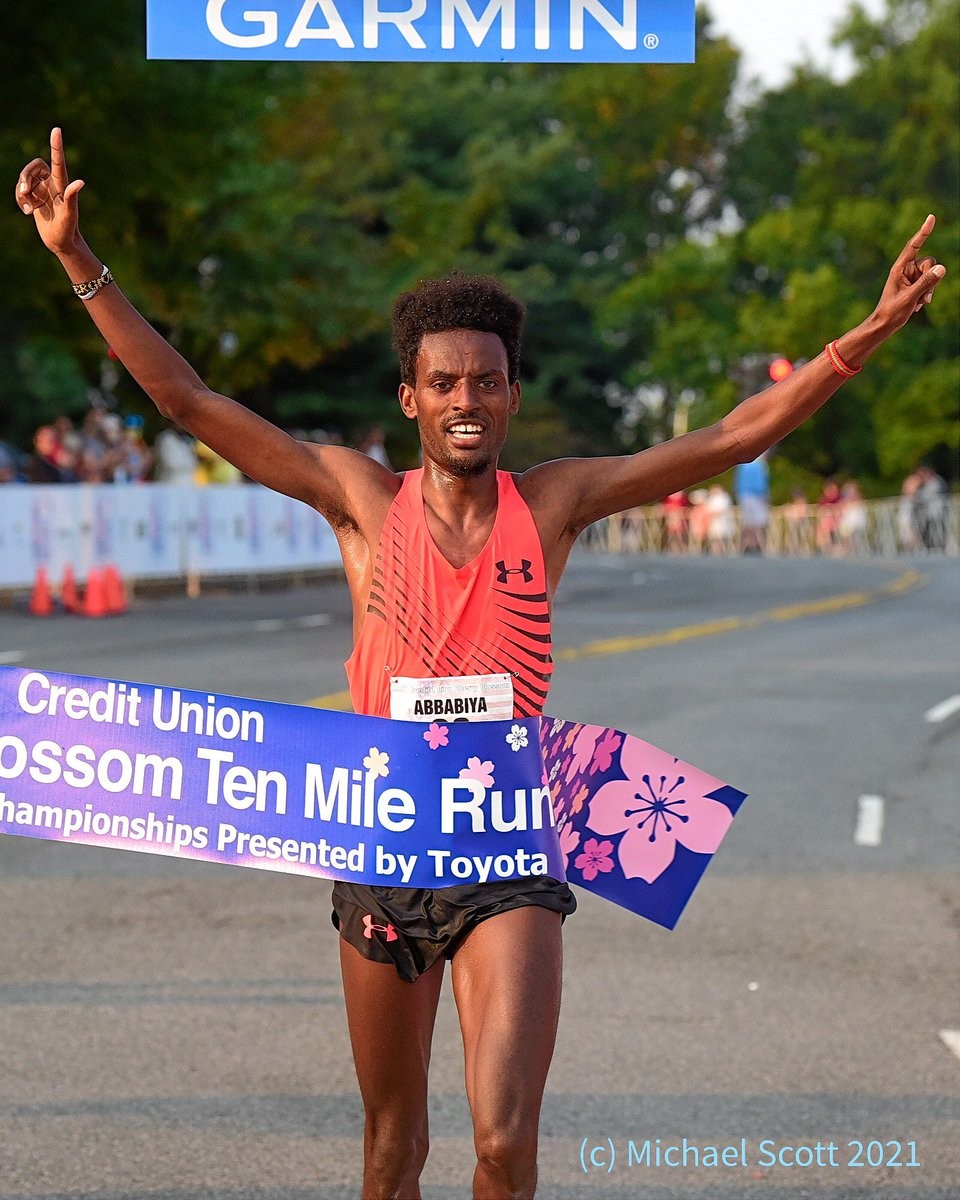
“I had zero expectations on place or time,” said Rojas in a post-race interview. “At seven or eight miles, I could tell Jenny and the others were working hard, and I was like ‘I’m not working hard.’ At that point I was OK letting myself believe I could win.”
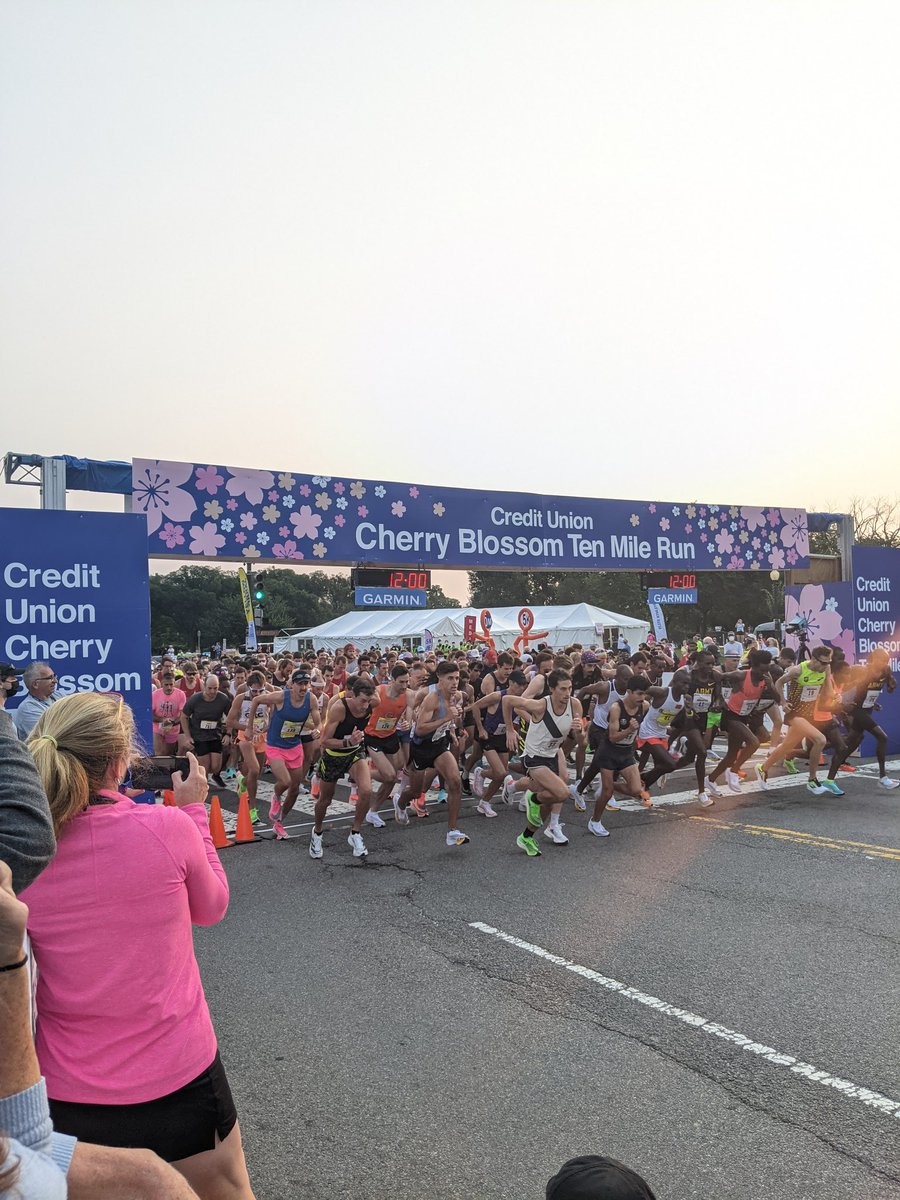
Rojas added: “With 800 to go, I knew Jenny was right there, I was really scared. I kicked around 600, and made that decision because I couldn’t let Jenny have the last 50-meter sprint. At that point, I was like ‘I’m fine with second, but just let me do this.’”
While she may have been a novice on the roads at anything longer than one mile, Simpson displayed confidence and savvy from the start. In fact, USATF.tv webcast commentator Carrie Tollefson remarked that Jenny cut the tightest tangent in the women’s lead pack of 14, going into a roundabout on the Virginia end of Memorial Bridge at a little more than 1 ½ miles into the race. Throughout the race, Simpson could be seen moving around the dwindling lead pack — side to side, forward and back — while eventual third place American Annie Frisbie oftentimes found herself in the lead, pushing the pace, or sharing pacesetting duties with Rojas and overall third place finisher Antonina Kwambai.
“When Nell pushed it up the last hill, once she got separation, I just couldn’t respond,” said Simpson. “She was really strong.”
Simpson added: “Sometimes the best thing that can happen with a new experience is to get second. I’m finishing hungry. Overall, the entire experience was 10 times better than I expected.”
In the men’s race, American Frank Lara —who would eventually finish fifth overall as fourth American — charged out hard from the start, and the men’s field quickly strung out. By 5K four men had broken away: Kimutai, Lara, and his fellow Americans Abbabiya Simbassa and Augustus Maiyo. By 10K, Kimutai had established a 17-second lead over the Maiyo and Simbassa, with Lara a few seconds adrift of his compatriots. As Kimutai’s lead grew, Maiyo and Simbassa continued to run side-by-side through 15K. Two minutes later, the 28 year-old Simbassa began to pull away from 38-year-old Maiyo, building himself a five second margin by the finish.
When asked if he felt guilty taking the 2021 USATF Men’s 10 Mile Championships title from the 38-year-old Maiyo, Simbassa replied: “I respect those guys, they know more than I do. I’m just out to do my best.”
Well, today, Simbassa’s best earned him the title of America’s best after so many recent second-place finishes in USATF Championship races, and elicited this comment: “It feels good. I’ve been hunting for a long time, and it finally happened today.”
Here’s a compilation of place, times and money earned by the top-10 American women and men as well as open prize money winners, and RRCA Roads Scholar-RunPro Development Award winners.
(09/13/2021) ⚡AMPby Running USA
Cherry Blossom Ten Mile Run
The Credit Union Cherry Blossom is known as "The Runner's Rite of Spring" in the Nation's Capital. The staging area for the event is on the Washington Monument Grounds, and the course passes in sight of all of the major Washington, DC Memorials. The event serves as a fundraiser for the Children's Miracle Network Hospitals, a consortium of 170 premier...
more...Scottish runners Jemma Reekie and Jake Wightman win 5th Avenue Mile
Athletes took to the streets of New York City on Sunday morning for the 5th Avenue Mile, one of the final races of the summer racing season.
It was the two Scottish runners who took the win, with Jemma Reekie taking the women’s race in 4:21.6 and Jake Wightman winning the men’s race in 3:49.6.
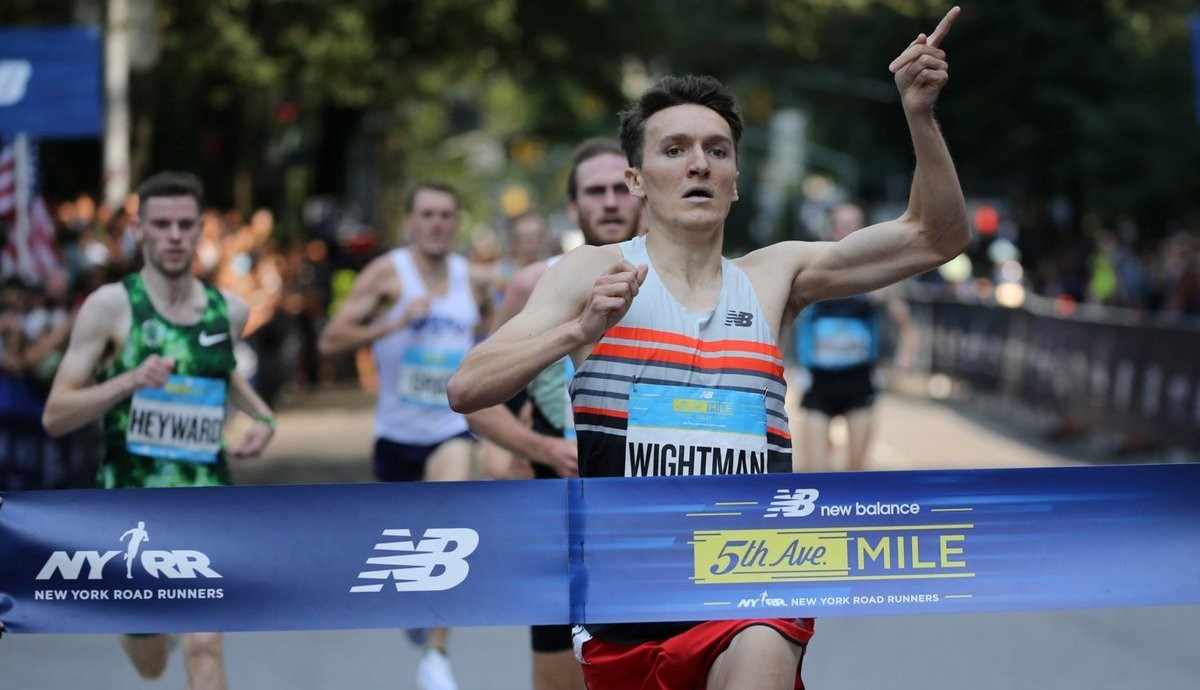
The women’s race
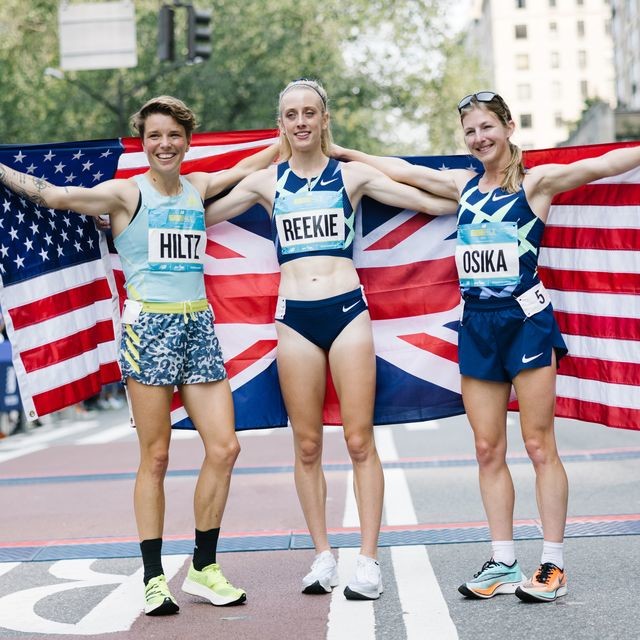
Alicia Monson took the lead early in the women’s race, gapping the field by several metres in the first half. The pack eventually reeled her in, and with one minute to go, Reekie, Hiltz and Van Buskirk began making a push for the finish.
With only a few metres left in the race, Reekie took over the lead, and after finishing 4th in Tokyo and 4th in the Diamond League final, she finally got her win. Hiltz finished in second place in 4:23.0 and Shannon Osika came third in 4:23.3. After making a strong push for a podium spot, Van Buskirk crossed the line in fourth in 4:23.9. Monson ended up in sixth in 4:25.4. Canada’s Julie-Anne Staehli finished in 11th in 4:29.1.
The men’s race
Wightman was the winner in a hotly-contested men’s race, where there was plenty of jostling for the lead over the 20-block race. Australia’s Oliver Hoare led in the early stages, but the rest of the pack were right on his heels. At about the 800m mark, Matthew Centrowitz made an aggressive move and created a sizeable gap on the field, but was unable to hold onto the lead.
Wightman cranked the pace up in the final meters of the race to take the win, followed by Hoare and Jake Heyward, also from the U.K., both in 3:50.4. Canada’s Charles Philibert-Thiboutot finished ninth in 3:53.2, and Centrowitz ended up in 14th in 3:56.4.
(09/13/2021) ⚡AMPby Brittany Hambleton
New Balance 5th Avenue Mile
The New Balance 5th Avenue Mile opens a beautiful 20-block stretch of 5th Avenue to runners of all ages and abilities who want to run their best mile in New York City. Special races include a youth mile, the George Sheehan Memorial Mile for runners age 60 and over, the NYRR Road Mile Championships, and Olympic-caliber professional men's and women's...
more...Tirop and Teferi smash world records in Herzogenaurach
Kenya’s Agnes Tirop took 28 seconds off the long-standing women-only world record for 10km*, while Ethiopia’s Senbere Teferi set an outright world 5km record of 14:29* at the adizero Road To Records event in Herzogenaurach on Sunday (12).
Tirop, the world 10,000m bronze medallist, put in a decisive surge with little more than two kilometres to go in the 10km, breaking away from fellow Kenyan Sheila Chepkirui before eventually winning in 30:01.
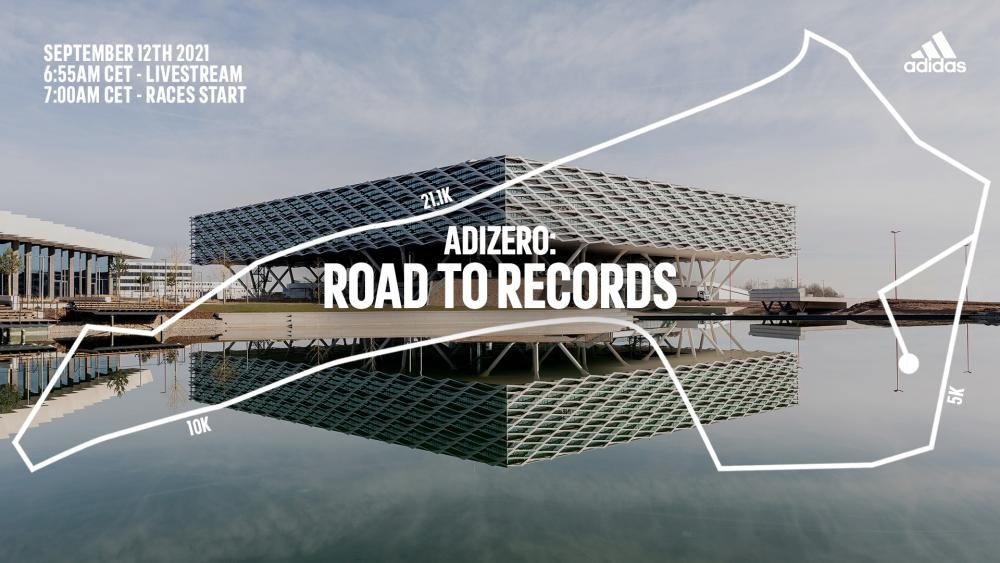
Teferi, the 2015 world 5000m silver medallist, ran away from her opponents after the first kilometre with an incredible solo effort, winning the 5km in 14:29.
Tirop and Chepkirui were part of a five-woman lead pack during the early stages of the 10km and passed through 4km in 12:07. A couple of minutes later, Tirop and Chepkirui had broken away from the rest of their opponents, reaching the half-way point in 15:00 after coving the fifth kilometre in a swift 2:54.
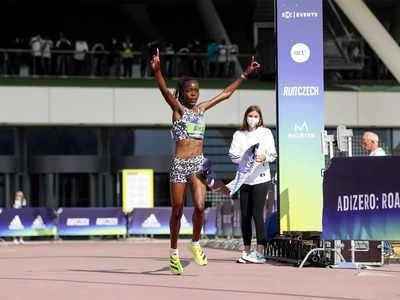
Chepkirui then moved in front of her compatriot and tried to force the pace but was unsuccessful in making a break. The duo continued to run side by side for the best part of three kilometres, but Tirop started her long run for home with about six minutes to go.
Tirop, who won the senior world cross-country title as a teenager back in 2015, passed through 9km in 27:07 with a comfortable lead and was still comfortably inside world record pace. She didn’t ease back for the final kilometre, though, and covered it in another 2:54 to reach the finish line in 30:01.
Chepkirui finished second in 30:17, also inside the previous mark of 30:29 set by Morocco’s Asmae Leghzaoui back in 2002. Nancy Jelagat was third in 30:50.
“I’m so happy to have broken the world record,” said Tirop. “I felt the pace was good and Sheila assisted me a lot. The course was very good too.”
Teferi, contesting the final race of the day, ensured the event ended on a high as she smashed the world 5km record with 14:29, winning by 25 seconds from Ethiopian teenager Melknat Wudu.
Six weeks after her sixth-place finish over 5000m at the Olympic Games, Teferi ran with the pack for the first kilometre, covered just inside three minutes. Then, sensing that the pace wasn’t quite fast enough to challenge the world record, set off on her own and covered the second kilometre in 2:49.
By 3km, which she reached in about 8:43, Teferi had an eight-second lead over the chase pack. She continued to forge ahead, passing 4km in 12:07 and then ended with a 2:52 final kilometre to cross the finish line in 14:29.
Not only did it break the women-only world record of 14:44 set by Beatrice Chepkoech and the 14:43 outright world record set by Sifan Hassan in a mixed race, she also bettered the fastest 5km clocking in history of 14:32, set by Joyciline Jepkosgei before the distance became an official world record event.
“I'm so happy,” said Teferi. “After the Olympics, I knew I was ready to go after this world record. I'm so happy.”
Wudu, a double medallist at the World U20 Championships, took second place in 14:54, just ahead of compatriot Nigisti Haftu.
In the day’s other races, world record-holder Rhonex Kipruto won the men’s 10km in 26:43, the fourth-fastest time in history, while recently crowned world U20 champion Tadese Worku was second in 26:56, an Ethiopian U20 record.
Abel Kipchumba was a convincing winner of the men’s half marathon in 58:48 with fellow Kenyan Alexander Mutiso Munyao taking second in 59:20, and Brenda Jepleting added to the Kenyan success with a dominant 1:06:52 victory in the women’s race.
Jacob Krop won the men's 5km in 13:06, breaking away from two-time world 5000m champion Muktar Edris in the second half to finish three seconds ahead of the Ethiopian.
Leading results
WOMEN
5km
1 Senbere Teferi (ETH) 14:29
2 Melknat Wudu (ETH) 14:54
3 Nigisti Haftu (ETH) 14:54
4 Agnes Jebet Ngetich (KEN) 15:02
5 Dawit Seyaum (ETH) 15:10
10km
1 Agnes Tirop (KEN) 30:01
2 Sheila Chepkirui (KEN) 30:17
3 Nancy Jelagat (KEN) 30:50
4 Betty Chepkemoi (KEN) 31:09
5 Dorcas Kimeli (KEN) 31:22
Half marathon
1 Brenda Jepleting (KEN) 1:06:52
2 Besu Sado (ETH) 1:08:15
3 Brillian Jepkorir (KEN) 1:08:28
4 Tgise Haileselase (ETH) 1:08:30
5 Irene Jepchumba (KEN) 1:09:02
MEN
5km
1 Jacob Krop (KEN) 13:06
2 Muktar Edris (ETH) 13:09
3 Hosea Kiplangat (UGA) 13:13
4 Geoffrey Kimutai (KEN) 13:22
5 Daniel Kinyanjui (KEN) 13:27
10km
1 Rhonex Kipruto (KEN) 26:43
2 Tadese Worku (ETH) 26:56
3 Kennedy Kimutai (KEN) 27:09
4 Nicholas Kimeli (KEN) 27:22
5 Bayelign Teshager (ETH) 27:24
Half marathon
1 Abel Kipchumba (KEN) 58:48
2 Alexander Mutiso Munyao (KEN) 59:20
3 Amos Kurgat Kibiwot (KEN) 59:34
4 Raymond Magut (KEN) 1:00:00
5 Phenus Kipleting (KEN) 1:00:08
(09/12/2021) ⚡AMPby World Athletics
Great North Run 2021: Thousands take part as event returns
Thousands of people have taken to the streets of Tyneside for the 40th staging of the Great North Run.
Last year's event was cancelled due to the coronavirus pandemic and organisers changed the half-marathon's route this year to aid social distancing.

Participants started and finished in Newcastle rather than making their way to South Shields.
Staggered timeslots replaced the traditional mass start for the world's biggest half-marathon.
About 57,000 people were registered to take part - raising millions of pounds for charity, The Great North Run Company said.
The new route saw runners cross the Tyne Bridge twice and make their way through Newcastle city centre before finishing on the Great North Road.
BBC commentator and former winner Paul Radcliffe said the event's return had been "emotional".
"Looking down the road and seeing all the runners, a lot of hard work has gone into making this happen.
"It was so needed just to see this step back towards people getting together, having fun and connecting."
Four NHS workers were invited to start the race in recognition of the health service's efforts during the pandemic.
Speaking afterwards, occupational health worker Deborah Southworth said it had been "absolutely amazing" and a "privilege".
Jade Trewick, a nurse who also helped get the event under way, said it came after a "difficult but really rewarding" 18 months treating coronavirus patients.
Sir Brendan Foster, who helped launch the event in 1981, said it had been "a tough task" organising this year's run but it had turned into an "incredible" success.
"It's been really difficult. For the last 18 months, the whole nation and world have had awful times.
"The pandemic has separated people, but the Great North Run is all about being together.
"When the vaccine came around we started thinking maybe we can [stage it this year] so we made all kinds of contingency plans.
"Here we are. It's different. It's a one-off."
The elite women's race was won by Kenyan Helen Obiri in a time of 1:07:42, ahead of Great Britain's Eilish McColgan, who was six seconds behind.
Scotland's McColgan was aiming to repeat her mum Liz's three victories at the event in the 1990s. Great Britain's Charlotte Purdue finished in third.
Marc Scott, also of Great Britain, was victorious in the men's elite race, clocking a time of 1:01:22 to finish nine seconds ahead of Kenya's Ed Cheserek.
Galen Rupp of the United States was a further 20 seconds behind in third place.
Sean Frame won the men's wheelchair race in 49:52 with fellow Briton Shelly Woods first across the finishing line in the women's event in 57:01.
The elite wheelchair and women's races began at about 09:20 BST, with the elite men and first of the staggered starts at 09:45.
(09/12/2021) ⚡AMPGreat North Run
Great North Run founder Brendan Foster believes Britain is ready to welcome the world with open arms after the launch of the event's most ambitious plan to date. The Great World Run campaign seeks to recruit one runner from every country in the United Nations – 193 in total – to take part in the iconic half marathon in...
more...Vienna City Marathon winner disqualified for wearing shoes that are one centimetre too thick
Derara Hurisa is disqualified after winning the marathon by three seconds for wearing shoes not sanctioned by the event
Vienna is where Eliud Kipchoge ran his sub-two hour marathon
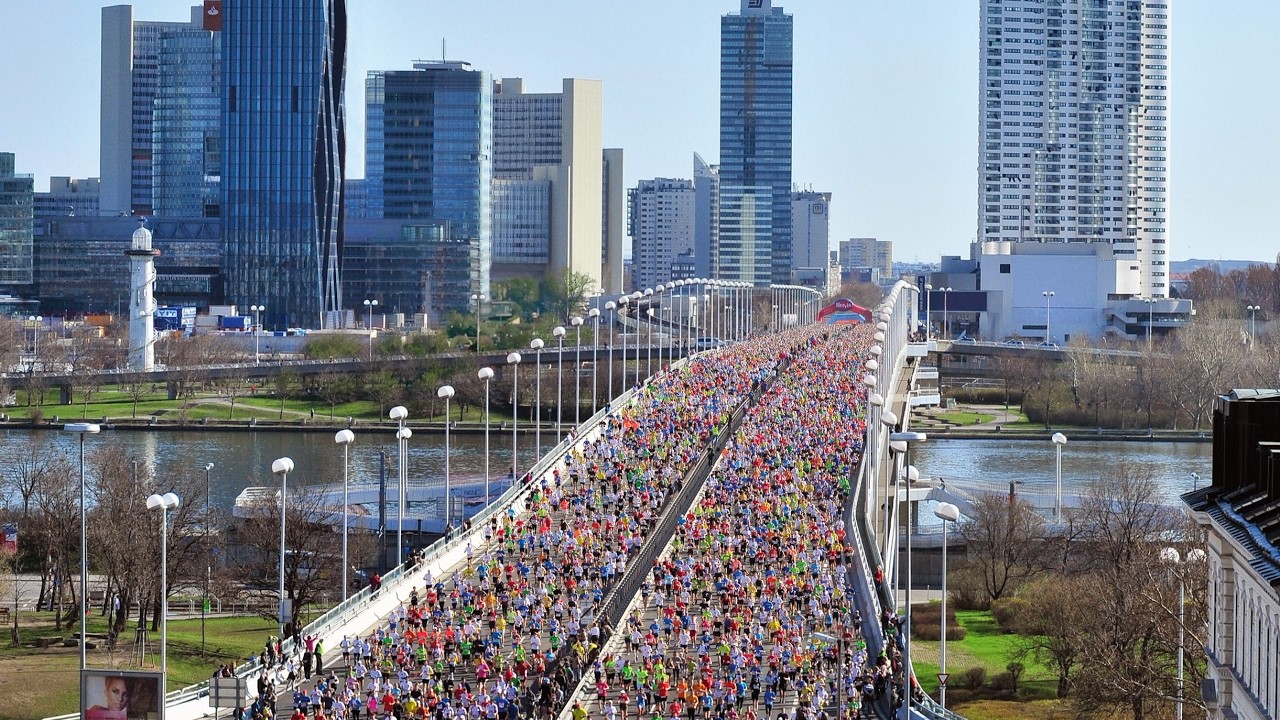
The winner of the Vienna City Marathon has been disqualified for wearing shoes that do not fit the race rules. Derara Hurisa ran the race in two hours, nine minutes and 22 seconds, but was stripped of his title when it was discovered the soles of his shoes is 5cm thick. It is one centimetre thicker than allowed in the race.
“Winner disqualified: The initial winner of the Vienna City Marathon had to be disqualified for wearing shoes which are not compliant with the rules. Ethiopia’s Derara Hurisa crossed the finish line first after 2.09:22,” the race Twitter account said.
“The sole of road running shoes has to be no thicker than four centimetres. Hurisa was running with a model that has a sole thickness of five centimetres.”
“Kenya’s Leonard Langat is now the winner of the Vienna City Marathon with a time of 2.09:25,” the account posted.
Hurisa, 24, made a name for himself last year by setting the Mumbai Marathon record, in 2.08:08.
Running shoes have been the centre of debate in the athletics world. Nike were the first to add a carbon plate into their sole, which in theory helped spring athletes forward. Fans and commentators alike wondered if getting an additional boost from shoes is within the ethos of running, where it is a test of fitness and not technology.
Since Nike’s invention, other brands have followed suit. Many records, including Eliud Kipchoge’s sub-two hour marathon, which was run in Vienna, have been set in carbon plated shoes.
The so called “technology doping” prompted the Olympics to set out guidelines for shoes allowed. In January 2020, the Olympics announced shoes with more than one carbon plate were banned, and so were soles thicker than 4cm.
live stream of event
https://live.s3.ap-south-1.amazonaws.com/vienna-city-marathon.html
(09/12/2021) ⚡AMPVienna City Marathon
More than 41,000 runners from over 110 nations take part in the Vienna City Marathon, cheered on by hundreds of thousands of spectators. From the start at UN City to the magnificent finish on the Heldenplatz, the excitement will never miss a beat. In recent years the Vienna City Marathon has succeeded in creating a unique position as a marathon...
more...Hamburg Marathon 2021 recap
After a two and a half year break, the Hamburg-Marahton could finally take place again on September 12, 2021.
Today at 9:00 am, the starting signal for the 35th edition of the Haspa Marathon Hamburg was given. Over 10,000 runners had registered for the event this year - many of them also over the half marathon distance and the relay marathon.
The distance
The fast route led past many sights and beautiful spots in the city of Hamburg. In addition to the marathon, there was also a relay marathon. The half marathon, which was held for the first time in 2018, was also part of the event.
In the footsteps of Eliud Kipchoge
In Hamburg, by the way, none other than Eliud Kipchoge holds the course record. In 2013 he ran 2:05:30 hours as a rather little-known runner. He is now a world record holder and the first marathon runner to cover the marathon distance in under two hours. Two years ago, the Ethiopians Tadu Abate (2:08:25 hours) and Dibabe Kuma (2:24:41 hours) won the race.
This year, only people vaccinated against Covid-19 were allowed to take part in the Hamburg Marathon. These measures caused horror among many interested parties in the run-up to the event.
The winners in 2021
A total of 5,157 runners competed this year, 2,417 of them over the marathon distance, 1,668 over the half marathon distance and 1,072 relay runners. There were only a few international top runners due to the requirements. A total of five runners and two runners with ambitions to win had come from Ethiopia and Uganda.
The fastest over the marathon distance was Martin Musau. The athlete from Uganda won his marathon debut with a time of 2:10:14 hours ahead of Masresha Bisetegn and Belay Bezabh (both Ethiopia). Benjamin Franke was the best German with 2:32:21 hours in 7th place. In the women’s category, the Ethiopian Cadise Demissie achieved a superior victory with 2:26:19 hours. She was more than 17 minutes ahead of the Swede Camilla Elofsson. 4th place went to the best German Angela Moesch (2:58:15 hours).
Carsten Hoenig (1:14:25 hours) and Stephanie Strate (1:16:47 hours) won the half marathon.
(09/12/2021) ⚡AMPHaspa Marathon Hamburg
The HASPA MARATHON HAMBURG is Germany’s biggest spring marathon and since 1986 the first one to paint the blue line on the roads. Hamburcourse record is fast (2:05:30), the metropolitan city (1.8 million residents) lets the euphoric atmosphere spill over and carry you to the finish. Make this experience first hand and follow the Blue Line....
more...Kenyan Faith Kipyegon wins 1500m showdown for Diamond League success in Zurich
From the moment that Olympic 5000m and 10,000m champion Sifan Hassan declared that she would race fellow Tokyo gold medallist Faith Kipyegon in the 1500m at the Wanda Diamond League final in Zurich, the race had the makings of an all-time classic.
And so it was.
Their first meeting this year was in Florence in June, where world champion Hassan had Kipyegon’s measure. But Kipyegon took back the initiative in Monaco in July and claimed a dominant victory at the Tokyo Olympics in August, as Hassan fought through the fatigue of her extraordinarily ambitious race schedule to secure the bronze medal.
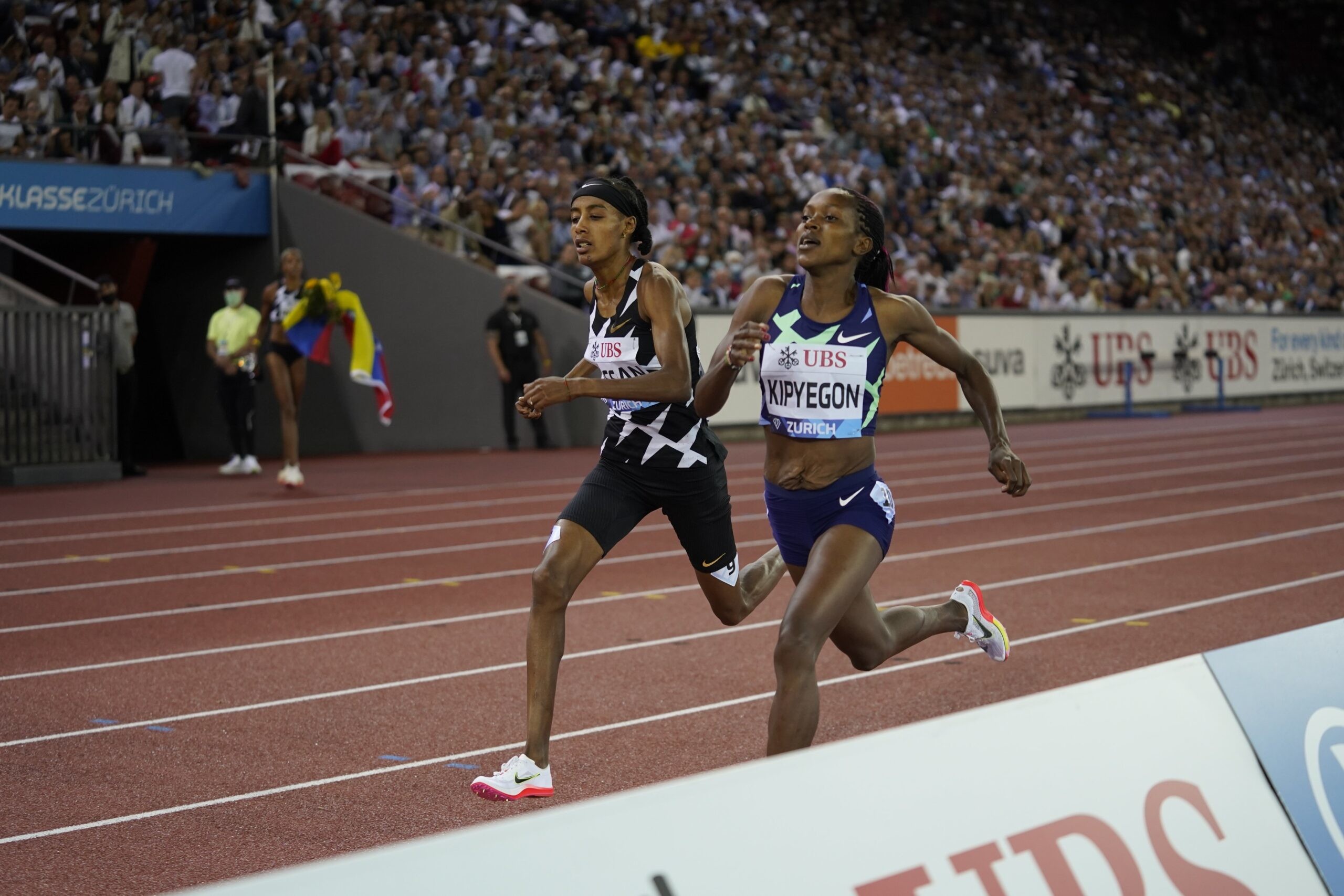
But with two such exceptional talents – Hassan led their head-to-head record 9-8 before tonight’s race – each battle must be fought anew.
From the first lap, each only had eyes on the other. The pacemaker was forgotten as they both waited and watched for the inevitable showdown.
Kipyegon moved into the lead just after the bell, with Hassan shadowing her every step. The Kenyan surged down the back straight and then stepped up the pace around the final bend, but Hassan would not concede.
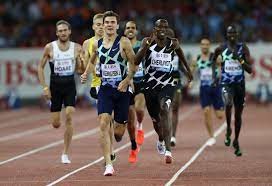
The Dutchwoman moved out of the Kenyan’s slipstream as they entered the straight and drew level. For a moment with 50m to go it appeared that Kipyegon might buckle under the pressure but her strength held and it was Hassan who faded slightly in the final metres.
Kipyegon stopped the clock in 3:58.33, just a metre ahead of Hassan in 3:58.55. The USA's Josette Norris came through for third in 4:00.41.
“I knew it would be a tactical race today," Kipyegon said. “I was confident that in the last lap I could do better and it worked.”
Hassan declared Kipyegon was “really one of the greatest athletes” but vowed to keep challenging her.
“Today was my last race (of the season) and I wanted to give everything, and I did that and I am happy about it," Hassan said before warning: “Next year, I will train my speed and I will be amazing.”
Close finishes were the order of the evening as the men’s 1500m followed an eerily similar script.
This time the protagonists were the world champion Timothy Cheruiyot and the Olympic champion Jakob Ingebrigtsen.
Until the Tokyo Olympic Games, the young Norwegian had lost 12 straight races to Cheruiyot but he finally turned the tables on the biggest stage of them all. However, Cheruiyot gained a measure of revenge in Zurich.
Cheruiyot employed the same tactics as his compatriot Kipyegon, forcing Ingebrigtsen to chase him from the bell. He tightened the screws gradually until he entered the home straight and lit out for home.
Like Hassan, Ingebrigtsen had the strength to challenge in the straight but not to draw ahead. Cheruiyot hung tough and took the glory (and his fourth Diamond League trophy) by 0.08 – 3:31.37 to 3:31.45. Australia’s Stewart McSweyn (3:32.14) completed the podium, one place ahead of his compatriot Ollie Hoare (3:32.66).
(09/11/2021) ⚡AMPby World Athletics
Athletics Canada mandates full vaccination at all events
Athletics Canada announced today that all athletes, coaches, and fans over the age of 12 who are planning to attend Athletics Canada events must be fully vaccinated against the COVID-19 virus. This new mandate will also apply to volunteers, media and event staff on-site for Athletics Canada events.
The new vaccination policy will take effect immediately, and will apply to events and in-person meets.
This mandate will apply to anyone who was registered for the 2021 Canadian 10K Championships as part of the Scotiabank Toronto Waterfront Marathon on Oct. 17, as well as the 2021 Canadian Cross Country Championships in Ottawa on Nov. 27.
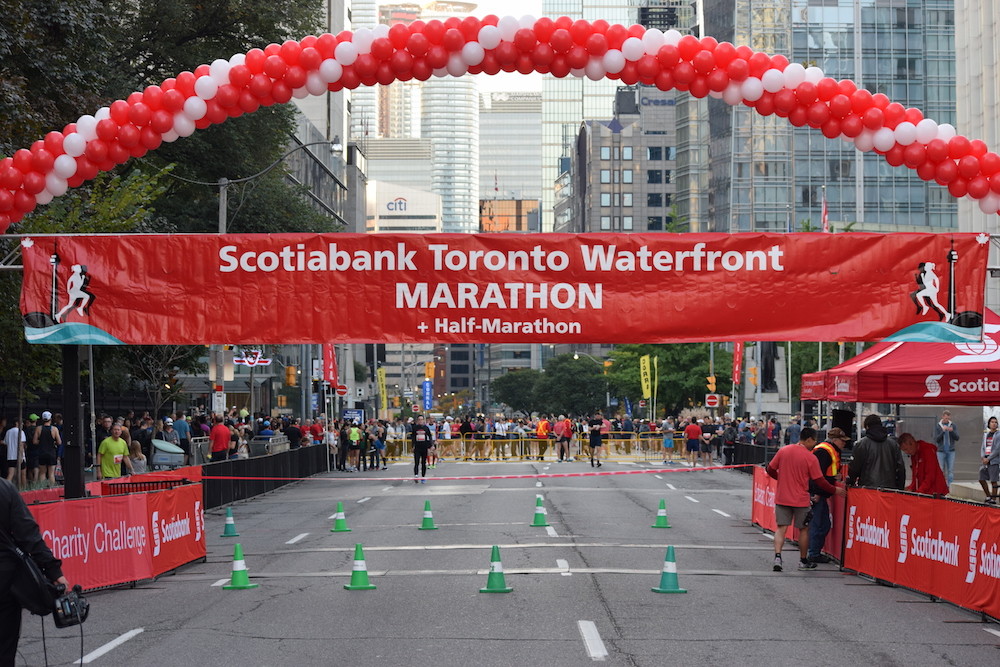
“Since we began organizing events in 1986, we promised our community an accurate and safe course,” said Alan Brookes, Race Director, Canada Running Series, in the Athletics Canada press release. “This has been a core value for more than four decades. As we look forward to a return to in-person racing this fall, the health and safety of our participants, staff, and volunteers remain of utmost importance.” This mandate will apply to anyone who was registered for the 2021 Canadian 10K Championships as part of the Scotiabank Toronto Waterfront Marathon on Oct. 17, as well as the 2021 Canadian Cross Country Championships in Ottawa on Nov. 27.
“Since we began organizing events in 1986, we promised our community an accurate and safe course,” said Alan Brookes, Race Director, Canada Running Series, in the Athletics Canada press release. “This has been a core value for more than four decades. As we look forward to a return to in-person racing this fall, the health and safety of our participants, staff, and volunteers remain of utmost importance.”
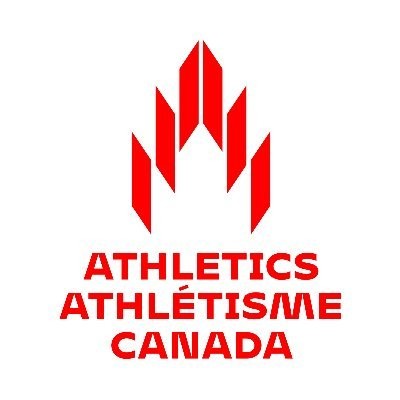
“We share Athletics Canada’s commitment to require full vaccination for participants, staff and volunteers as the best way forward to restart in-person road racing. We’re excited to get back to what we love and see thousands of people cross that finish line on Oct. 17,” says Brookes.
This Athletics Canada mandate does not apply at provincial athletics sanctioned events yet. Each provincial athletics institution has the right to make its own jurisdiction regarding in-person events and activities.
Further details will be shared on the implementation of the policy, per Athletics Canada.
(09/11/2021) ⚡AMPby Marley Dickinson
The Truth About Alcohol And Endurance Sports
Just like Sunday brunch with friends and happy hour with coworkers, the post-run drink has become a uniting ritual for runners. An Instagram search for hashtags #willrunforbeer and #runforwine reveals thousands of photos of smiling, sweaty runners-many of them women-downing frosty pints of beer or clutching super-sized glasses of wine. Promotion for everything from casual neighborhood brewery runs and Rose 5Ks to large-scale destination races like the Napa-to-Sonoma Wine Country Half Marathon only amplify the message: alcohol is a justifiable reward for hard-run miles, and alcohol and exercise go hand-in-hand for many.
Many of the races, like the Zooma series and Disney Princess Half Marathon Weekend, explicitly bill themselves as girls' weekend getaways, complete with luxury accommodations, elaborate swag bags, and post-event parties with free flowing wine, beer, and other libations. In addition, much of the running merchandise targeted to women is branded with catchy, alcohol-related slogans like "Run All the Miles, Drink all the Wine" and "Will Run for Beer." Not to mention all the other ways alcohol and exercise are becoming entwined: think beer yoga and wine hikes; FitVine's collab with Barry's Bootcamp; Sunday sip and spins with mimosa bars post-spin class.
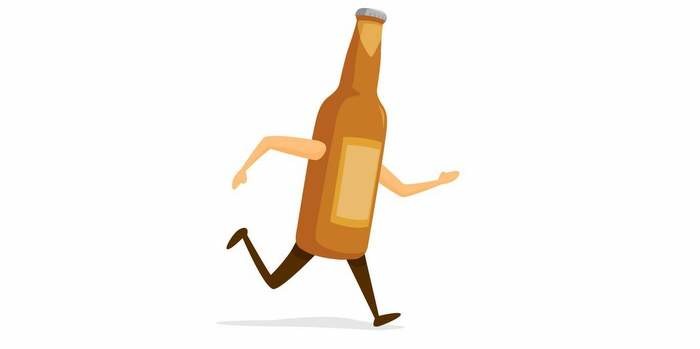

But just as women are closing the gender gap in road race participation, comprising just over 60% of all race finishers in 2019, recent studies also show that women are closing the gender gap when it comes to alcohol consumption-and not in a good way. According to a 2019 study, women in their late teens and early 20s now report drinking and getting drunk at higher rates than their male peers, and pandemic-related anxiety, depression and stress have only exacerbated unhealthy drinking patterns for many.
And while for most people, a celebratory drink with friends after a group run or at the finish line is no more harmful than a sugar doughnut or indulgent brunch, how did alcohol-a mood-altering drug-become such an integral part of a sport that promotes health and wellness?
Racing as an experience
Just as running's second wave in the late 1990s and early 2000s dramatically increased women's participation in the sport, it also increased demand for destination and experiential races. From the launch of the pioneering Rock 'n' Roll series in the late 1990s to the women-centric Zooma and Disney Princess events that followed in the early 2000s, races became bigger and bolder, with on-course live music, branded merchandise, elaborate medals, and themed post-race parties serving everything from hot chocolate and cheese to bacon, pancakes, and of course, alcohol.
These unique race experiences appeal to seasoned runners like Cara Turano of Portland.
"I used to be really happy with a cool medal or t-shirt, but you can only have so many medals and shirts," she explains. "Perks like finishing in a beer garden or bringing home wine glasses is a much more memorable experience."
Turano ran the Bordeaux Marathon a few years ago to celebrate her 35th birthday and honor her mom's passing.
"The race included 24 wine stops over 26.2 miles, and it was the most amazing, festive, and supportive experience with 10,000 runners from around the world, all in costume, running pretty slowly through rolling vineyards in the gorgeous South of France," she recalls, adding that destination races are "a great way to combine a passion for running with one for travel."
Similarly, Nina Santus, a board member of Athens Road Runners in Georgia, frequently travels to races, choosing an experience based on personal interests or connections to a specific cause.
"I ran the Marine Corps Marathon because my brother was in the Marine Corps," she explains. "I'm also a big wine person, so if I can find a race where I can run and see the vineyards and enjoy food and drink afterward, I will do it." Santus plans to run the Marathon du Medoc next fall and has run alcohol-centric races like the Dirty Spokes Chateau Elan Muscadine Run and the Ales for Trails Terrapin Beer 5K, closer to home.
"I don't participate in beer miles where you have to chug things or get sick or be drunk, but I do support the idea of food and beverage to help bring more folks out for camaraderie and the sport of running," she continues.
For race director Tes Sobomehin Marshall, founder of Run Social Atlanta, that camaraderie is baked into her company's mission. With runs and races that launch or end near local businesses ranging from breweries and restaurants to physical therapy studios, athletic-wear stores, and entertainment-focused venues like Top Golf, the company markets itself to "both the competitive runner and the 'I just want a shirt and a beer' person," explains Marshall.
When she first started organizing races in 2012, Marshall realized "people were coming and spending 30 minutes running the race, and then another two to three hours socializing after." She finds her laid-back, social, and neighborhood-centric approach to racing "more accessible to people who wouldn't otherwise run and more fun for people who've been running for a while."
Atlantan Audrey Ward, who started running earlier this year, appreciates low-key, social races.
"As a newer runner, just getting my shoes on and out the door can be intimidating," she says. "Having a good time with people who just like to run (and maybe to cheers with afterward) takes the pressure off what can be a super-competitive sport."
According to Santus, the 300-400 member Athens Road Runners keeps its events approachable to make runners like Ward feel included.
In addition to Saturday morning training runs and Wednesday morning track workouts, the group regularly runs to local breweries or restaurants with events branded as "Taco Tuesday" and also gathers informally for popsicles, beer, or fizzy waters.
The social activities are designed to make "everyone feel welcome, no matter their pace," and to "break down the illusion that all runners are snobby and fast," she explains.
Terri Huggins, a New Jersey-based writer and fitness instructor, understands that alcohol can be a powerful incentive to attract newcomers who may be intimidated by an unfamiliar sport or activity.
Whether a gym class or a road race, "including alcohol really helps with engagement, and one could argue that someone drinking after an event is far better than someone not working out at all," she says.
But as road races ramp up again at the same time women report drinking more alcohol to cope with pandemic-related stressors like balancing work with child-rearing, caring for sick relatives, and a massive exodus from the workforce, should organizers moderate drink-related messaging?
Tracy Green, a sub three-hour marathoner from Louisville who took an extended break from drinking alcohol last year, says yes.
"We know thinking of exercise as punishment or as a response to negative body image can be mentally unhealthy, and we know that alcohol can make issues like depression and anxiety worse-so coupling those two things together at a race is probably not the best thing we could be doing for mental health," she explains.
And while Huggins imbibes on occasion, she says that "in a time when so many people are unaware of what it means to drink in moderation, people in the fitness industry have an obligation to educate their participants on how alcohol can affect recovery, sleep, and metabolism."
The experts agree.
According to Dr. George F. Koob, director of the National Institute on Alcohol Abuse and Alcoholism, for "people who are exhausted from running, mildly dehydrated, and have empty stomachs, one serving of alcohol could be much riskier than it seems"-especially if driving home after an event.
Even if booze is an integral part of your racing group or event, Koob suggests being mindful that many people "turn to exercise as part of recovery from an alcohol use disorder," and that "these folks might be uncomfortable or left out if other runners celebrate the finish of a race with alcohol."
Keeping alcohol in a separate area of an expo or finish line celebration is one way to offer libations without explicitly excluding those who don't drink, says Back on My Feet CEO Katy Sherratt. And since alcohol is hyper-present at road races, it can provide a "real-world scenario" for those with addictions to maintain sobriety, as long as they have a strong support network.
And even those who do drink alcohol on occasion may opt to skip the post-race beer in favor of healthier beverages, like recovery shakes and smoothies, kombucha, and sparkling water.
"Give me a fancy, fizzy mineral water after a hot race instead of a beer any day," says Green.
Professional runner and Olympian Molly Seidel enjoys non-alcoholic beers from Connecticut-based Athletic Brewing Company after a hard training session.
"I love that it's hoppy and actually tastes like an IPA, plus I get some good carbs out of it without alcohol impacting my training," she says.
The rapid growth in the non-alcoholic beer and spirits market, combined with growing interest in booze-free social movements like Dry January and Sober Curious, could be a unique opportunity for the racing industry to temper its alcohol-centric messaging.
And yes, a beer at the finish line is great, but as Dr. Koob puts it, "shouldn't completing the race be reward enough?"
(09/11/2021) ⚡AMPby Trail Runner Magazine
7 rules for running longer
So you’ve been running for a while now and you’ve managed to stick to a fairly consistent routine. Maybe you’re going out for 30 minutes a few times per week, or perhaps you’ve worked your way up so that you’re able to comfortably run 5K without stopping. That’s great! If you’re considering challenging yourself with some longer runs, keep these guidelines in mind as you’re increasing your distance.
Slow down

As you’ve been running more consistently, you’ve likely been able to increase your pace. When you start trying to go longer, however, you may want to back off the speed, at least initially. The first goal when increasing your distance should be to make it through the whole thing, and getting faster can come later.
Add length gradually
If you’ve been running 5K consistently, you don’t have to go out and try to run 10K right off the bat. Most experts suggest increasing your distance by no more than 10 per cent per week, which from 5K is only about 50m. You may want to increase more than that, which is fine, but be careful not to do too much too soon, which could increase your risk for injuries.
Do it once per week
When increasing your distance, keep in mind you don’t have to run longer every time you go out. If, for example, you’re running 5K three times per week, you can continue doing that twice per week, and choose one of your runs to try going a little longer. That will also help you avoid the too-much-too-soon issue many newer runners tend to fall victim to.
Take walk breaks
Even if you normally don’t take walk breaks during your shorter runs, there’s no shame in using walk breaks as you’re increasing your distance. Sometimes, a quick break is all you need to regroup mentally and tackle those extra few kilometres.
Fuel properly
As you start to increase the length of your runs, fuelling properly before and after becomes increasingly important. Your stomach grumbling part-way through your run is never fun, and eating something healthy afterward will help you refuel so that you’re ready to go for your next run.
Take recovery seriously
As you increase the amount you’re running, all the little things that help you run better and prevent injury become more and more important. That includes getting enough sleep, eating well, drinking enough water, stretching and giving your body what it needs to recover so you can continue to run well.
(09/11/2021) ⚡AMPby Running Magazine
Time for Shelby Houlihan to come clean
Two things ought to happen now that the Court of Arbitration for Sport has issued a technically detailed but, in the end, common-sense ruling in the matter of Shelby Houlihan, the American distance runner, banning her for four years for nandrolone — through January 2025 — while thoroughly rejecting the ridiculous burrito defense.
One, Houlihan ought to come clean.
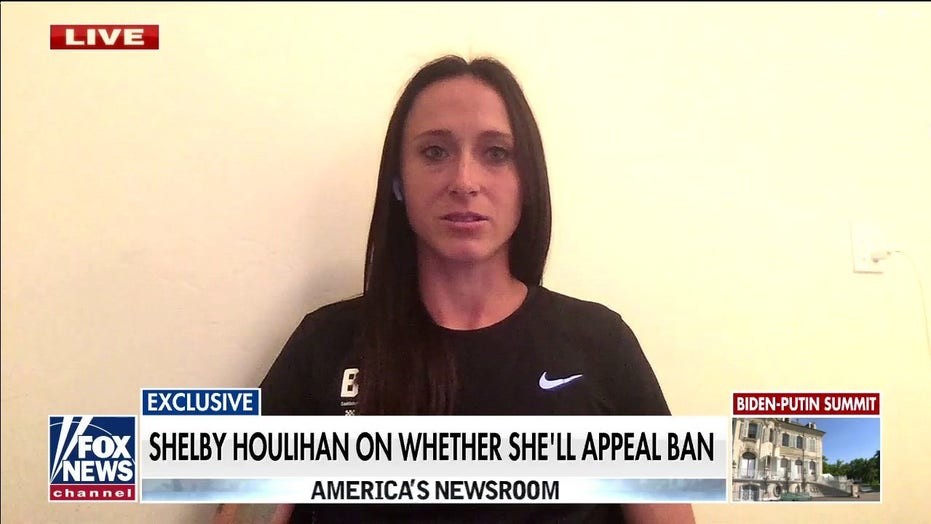
What most likely happened?
We don’t and won’t know until Houlihan admits whatever it was. But, see paragraph 128 of this very thorough 44-page ruling, citing the head of the Montreal anti-doping lab, Christiane Ayotte, who notes that oral precursors of nandrolone can readily be bought on the internet, even on Amazon, and that a chemical signature very much like the one Houlihan tested for was obtained five years ago when that very lab tested a product it had bought called “Nor-Andro Max.â€
Two, all the journalistic sheep who wanted to believe, who maybe still want to believe despite the overwhelming evidence against Houlihan, that there was no way, just no way, a white American distance runner affiliated with the Bowerman Track Club could test positive — all these people, and the readers they misled, ought to take a crash course in Doping 101 and the things people will say and do, meaning anything and everything, to avoid getting busted.
This entire saga, truthfully, has been pathetic.
This burrito defense has, from the get-go, stretched the bounds of credulity, and anyone who bought it — even for a second — needs to undergo a real-world moron test.
Do you also believe pigs can fly? (‘Pigs’ used advisedly here.) Do you think Abraham Lincoln is a vampire slayer? Are you super-confident you can beat up a grizzly bear?
Almost every single facet of Houlihan’s defense was — is — absurd.
To be clear: not blaming Houlihan’s lawyers for aggressively scheming up any and every avenue possible. That’s what they’re there for.
But the three-judge panel went to great length — again, 44 pages — to refute, carefully, virtually everything about it.
For instance:
Houlihan took a lie detector test.
She was asked, did you at any time knowingly ingest nandrolone? And answered no. She was also asked, did you intentionally ingest the drug nandrolone? And said, no.
But as the panel pointed out, here’s what she wasn’t asked: did you take doping substances at the material time?
Houlihan also submitted to hair analysis. All involved agreed that it proved that nandrolone injections could be excluded. But, the panel found, that analysis failed to take into account oral (so we’re all on the same page here, something you eat or drink) precursors of nandrolone, such as “19-nor-DHEA†and “nor-Andro.â€
Which is why it boggles the mind, truly, that an outlet such as Women’s Running would, in the second paragraph of its account of this ruling, prattle on this way:
“CAS decided that although Houlihan was a credible witness and brought ‘compelling character witness evidence in support of her defense,’ she failed to establish the source of the nandrolone that was detected in her urine.â€
This is the second paragraph?!
Who cares if Shelby Houlihan is or is not a nice person and can or cannot get through a lie detector when asked certain questions? That’s all but irrelevant when it comes to the science in this case. As for her “compelling character witness evidence?†Ha! That’s a complete misread of what is what. Offering statements or testifying on her behalf were, among others, her former boyfriend, Matthew Centrowitz, gold medalist in the men’s 1500 at the Rio 2016 Olympics, Courtney Frerichs, the surprise silver medalist in the women’s steeplechase a few weeks ago in Tokyo, and Karissa Schweizer, who competed in Tokyo in both the women’s 5k (11th) and 10k (12th), and if you don’t think the Athletics Integrity Unit took careful observation of who was in Houlihan’s inner circle, maybe you seriously do believe pigs can fly.
The first paragraph of the Women’s Running story, what in journalism circles is called the lede, also noted — accurately — the CAS observation that Houlihan’s explanation was “possible but unlikely.â€
As if that were justification.
Everything in life is possible.
But here’s what CAS also said, and be mindful that the burden of proof in this matter was on Houlihan, and so if this were a math contest, she had to get to 50.1, but instead her defense “presupposes a cascade of factual and scientific improbabilities, which means that its composite probability is (very) close to zero.â€
Herewith the cascade:
— Houlihan ordered a carne asada — that is, a steak — burrito at a food truck in Beaverton, Oregon, near Portland. For her defense to work, she would have had to have been served and eaten pork.
The entire defense rests on this premise. A wrong order. Which she then ate. But that’s not all.
— Because the pork would have not been ‘normal’ pork but, per the Houlihan defense, uncastrated boar.
— Except uncastrated boar gets into the U.S. food chain through completely different channels than pork. So for uncastrated boar to end up in the normal pork food chain, the boar must have been a specimen with undescended testicles. This is called ‘cryptorchid.’
At this point, this is already verging on bizarre if not crazy stupid. Undescended testicled boar. OK.
— Except there’s more. The cryptorchid is (or was) of a “small minority of uncastrated boars that — in addition — must have had elevated androgen levels.†That would be “abnormal†for 6-month-old pigs.
— More still. The pork product Houlihan allegedly ate, despite ordering steak, is pork stomach. Follow along here because this gets into butcher-level stuff. When people eat pork stomach, that stomach is stripped of the inner layer; only the outer muscle remains. Houlihan’s assertion was that uncastrated boars have elevated androgen levels. Except those are not found in the muscle. Those levels are found only in specific parts — the kidneys, testes or liver. Pork stomach, the panel said, has one of the lowest androgen levels.
— More science. The nandrolone metabolite levels in Houlihan’s urine were two to three times higher than the highest values in the literature after eating much more significant quantities of mature (uncastrated) boar — a product different from the alleged cryptorchid in question, which would have been slaughtered at six months.
— Agriculturally speaking, the carbon isotope signature of the metabolite in her urine was “fundamentally inconsistent†with the largely corn-based diet of commercial pigs in the United States.
— Finally, an expert witness said the chance of a cryptorchid ending up in the normal supply chain in the United States is “far less†than one in 10,000.
Beyond which, see paragraph 104 on page 30, and come on now, there’s this:
“The fact that IBP/Tyson (the plant where the food truck in Beaverton bought the pork meat from) does not operate a boar kill plant. Thus, it is ‘near zero chance’ that any boar meat would get mixed with conventional fresh pork products.â€
All this leaves the obvious question, doesn’t it:
if the slaughterhouse doesn’t operate a boar kill plant, and thus there’s essentially no chance of boar meat getting in the food chain with pork other than, hmm, aliens dropping in from Galaxy Starchaser Nebula X9 to surreptitiously teleport it in there and so the food truck had a “near zero†chance of having boar meat on the night in question and, besides, Houlihan ordered a steak burrito, anyway — what really happened here?
Time for Shelby Houlihan to come clean.
She likely will dodge this opportunity until after the Swiss Federal Tribunal issues the final no-go — understand that the SFT takes up procedural matters, not substantive, so her chance of success there is, again, “near zero†— but she would do the right thing, now, by coming clean.
Time, too, for her supporters, defenders and enablers to see the light. It’s tough when your purported heroes get tagged for doping. But before all of you go out and buy Floyd Landis’ book about how he didn’t cheat to win the Tour de France — oops.
Some of us have been down this road before. This burrito defense — this was creative, indeed. But that didn’t make it any smarter, or better.
Pigs don’t fly. That’s the truth.
(09/11/2021) ⚡AMPGöteÂborgsvarvet and the race week in SepÂtemÂber 2021 is canceled
Göteborgsvarvet 2021, which was to be arranged on September 11, is canceled. Both the classic 21km race and the other races during the race week are canceled, this due to covid-19 and the increased spread of the disease in the region.
This is extremely sad for the organization as well as for all participants, but with great respect for the pandemic, which unfortunately still is increasing, we had to make this decision, says Jahja Zeqiraj, chairman of the Gothenburg Athletics Association.
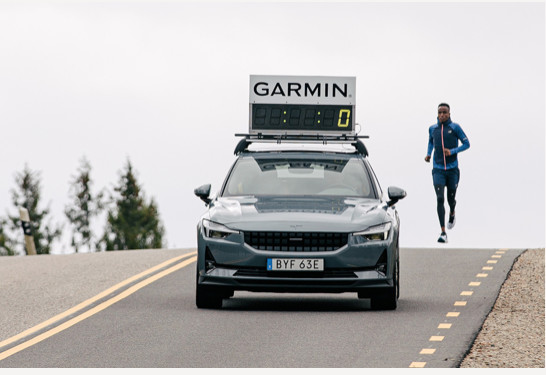
After the cancelation of Göteborgsvarvet last year, hard work has been going on for over a year in order to arrange Göteborgsvarvet 2021 in a safe way. More than 35,000 participants were registered for this year's edition.
The last couple of weeks with the increased spread of Covid-19 in the region made it impossible to arrange a safe competition with start and finish around the area of Slottsskogsvallen. The decision applies to all races planed in September.
The decision was made at an extra board meeting last night after dialogue with the disease prevention and control authorities and representatives from the health care in the region.
We have for a long period of time planned and hoped to arrange Göteborgsvarvet and our other races in a safe form this fall, and the earlier dialogue we have had with authorities and healthcare has been positive. Which made this a hard but necessary decision, we still have a strong determination and will to fight for both Göteborgsvarvet and the Athletics Association with its’ 50 track and field clubs in Gothenburg to live on. In this, we need support from Gothenburg to get through these challenging times together. We are now looking forward to 2022. A long-awaited restart of society is on everyone's agenda, including ours.
Claes Mangelus, medically responsible doctor for Göteborgsvarvet
- We have had a good dialogue with authorities, the Police and the healthcare system all the way. The forecasts for the races to be arranged have been good, but with today's reality and the recent negative development make it untenable to arrange an event of this size. The pandemic is ongoing, the spread of infection is increasing again and the burden on the public healthcare remains high, so we all agreed that the decision to cancel this year's edition is the right one.
All registered participants for Göteborgsvarvet and Göteborgsvarvet Marathon will still be able to participate digitally. Digital participation gives a medal and an official result which is approved as qualifying time for Göteborgsvarvet 2022.
- Once again, we must switch from a physical to a virtual race. We know that there will be many questions from our runners and we ask you to please bear with us as we work through the details. Our goal and ambition is still to create a memorable running event even if we cannot be in the same place, says Jahja Zeqirai.
(09/11/2021) ⚡AMPGothenburg Half Marathon
Run through the heart of one of Scandinavia's most beautiful cities. The course will be lined with over 200,000 enthusiastic and sports interested spectators. Gothenburgs central location in Scandinavia makes it easy to reach by plane, boat, train or car. Göteborgsvarvet is an annual half marathon running competition in Gothenburg, Sweden. It is the largest annual running competition in Sweden,...
more...One of the largest mountain marathons in the world celebrated its comeback
After the cancellation last year, several thousand runners were again at the start of the Jungfrau Marathon in Switzerland.
The route was adapted for this year by the organizer: Of course, nothing has changed in the fantastic panorama. The course led from Interlaken Airport to the Eiger Glacier. The runners passed Böningen, Iseltwald, Wilderwil, Zweilütschingen and Lauterbrunnen, among others. The eponymous four-thousander "Jungfrau" was, just like the mighty Eiger north face, in the immediate vicinity and in the field of vision of the athletes.
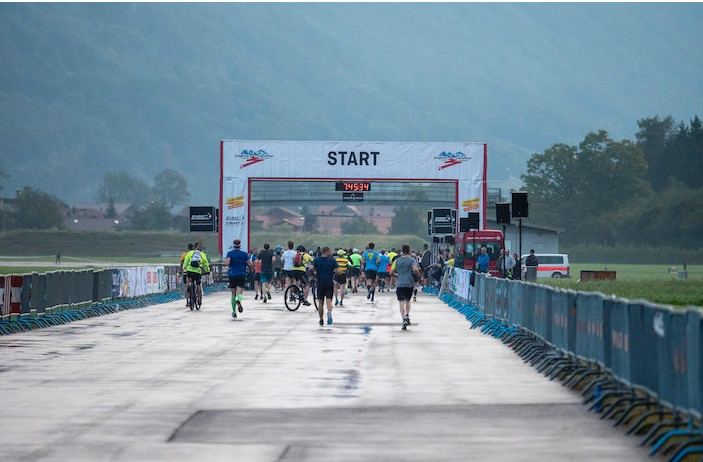
Fight for the 3-hour mark and victory
For the 42.195 kilometer marathon route with around 2,000 meters of altitude, top times of around three hours were to be expected. The winner of the last edition two years ago was the Briton Robbie Simpson, who at the time cracked the 3-hour mark in wintry conditions with 2:59:30 hours. For women, Simone Troxler is the defending champion from 2019.
Colombians triumph
The Colombian Jose David Cardona was in a class of his own that day. He was able to break away from the last pursuers after less than half of the race and clinched an undisputed victory with 3:05:01 hours. More than five minutes behind followed Stephan Wenk after a great race to catch up.
Laura Hottenrott lived up to her role as a favorite for women. The German professional runner was over 13 minutes ahead of Georgina Schwiening after 3:27:30 hours.
(09/11/2021) ⚡AMPJungfrau Marathon
The Jungfrau-Marathon presents the most beautiful marathon course in the world - marvelous mountains scenery and the excellent change of the landscape between the start in Interlaken and the finish on Kleine Scheidegg. The difference in altitude of 1829 meter (6000 feet) is a challenge for everybody. There is no Marathon in Europe with such great dimensions. Eiger, Mönch and...
more...Retired nurse Dorothy Strand 81, reigns as only athlete to run all 25 Surf City Marathons
Dorothy Strand has never been the fastest of runners. But what she lacks in speed she makes up for in consistency.
On Saturday, Sept. 11, Strand will tackle the 25th annual Surf City Marathon/Half Marathon. It’s her 25th as well.
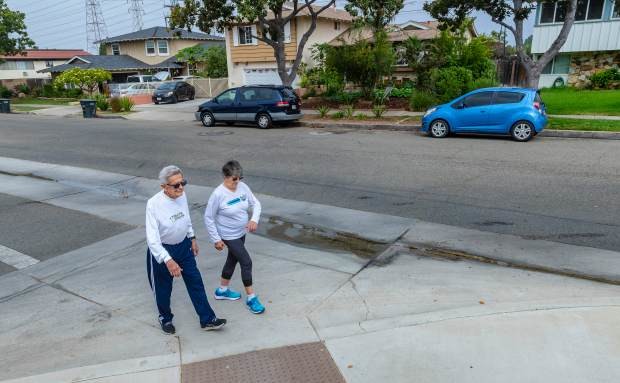
“She’s the only athlete on planet Earth who has participated all 25 years,” said Surf City Marathon spokesman Dan Cruz.
At 81, and battling back pain, Strand will walk this year rather than trot. And instead of completing the full marathon she will settle for half.
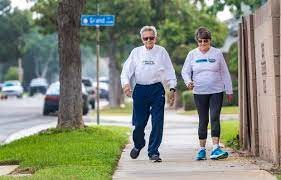
Strand, a retired nurse who lives in Orange, said she’s getting inspiration from the friends in her running group. “I might have opted out this year if not for them. There was no way they were letting me miss my 25th year. I felt that pressure of, ‘I’m a “legacy.” I’ve got to do it.’”
Originally known as the Pacific Shoreline Marathon, the city’s first race was held in 1997. Traditionally, it takes place the morning of Super Bowl Sunday. But coronavirus concerns pushed this year’s event forward seven months. Organizers hope to return to the usual routine in February of 2022.
Cruz said Strand will be celebrated at both the start and finish lines. “She is our celebrity runner this year.”
In normal times, the race attracts more than 17,000 participants, including some of the world’s best distance runners. But this year the lingering pandemic has cut that number to about 13,000 runners, who will participate in several different events: marathon, half-marathon, 10K and 5K. Almost all will be from Southern California, Cruz said.
John Strand, 87, came mighty close to sharing in his wife’s glory. However, about 15 years ago he missed a Surf City Marathon when he was off running in another state.
The Strands developed their passion for long-distance running in the 1980s when their two sons ran cross country and track at Orange Lutheran High. “It became a family thing,” Dorothy Strand said.
“My husband was a natural, but I’m not,” she added. “Some of my friends would run with me in the back. Gradually, I got better.”
She’s run in 46 marathons, with her fastest time (so far) 4:57 in 1999, in Dublin, Ireland. “It’s not great, but it’s great for me,” Strand said.
By then, the couple had started traveling to run in marathons. Now retired, physician John Strand visited all 50 states and seven continents chasing his hobby. He’s run in 118 marathons, total, with a personal best of 4:04.
When she started running, Dorothy Strand recalled, “I didn’t have much competition in my age group. Women weren’t really out there competing as much.”
John Strand also has health problems now, so his plan for Saturday is to stroll in the 5K.
“That’s life,” he said. “I can’t do everything I used to do, but I very much enjoyed that chapter of my life.”
Before he started running, Strand said, he was a “couch potato.”
“Running made me more outgoing, more of an extrovert,” he said. “Healthy body, healthy mind. Because of running, I’ve seen so many beautiful trails and met so many great people.”
Icing on the cake: His wife has shared his passion.
“It’s been wonderful to have a partner with me, to have something we can do together,” Strand said.
For her part, Dorothy Strand said running made her more adventurous.
(09/10/2021) ⚡AMPby Susan Christian Goulding
Surf City USA
The Surf City USA Marathon and Half-Marathon attracts more than 20,000 runners from around the world. The exclusive oceanfront course runs along the Pacific Coast Highway (which is more like a street than a highway in this area), past the Huntington Beach Pier and the famous Southern California surfing beaches. Weekend highlights include many Super Bowl parties, the three-day Active...
more...Why every marathon runner must avoid dehydration and over-hydration
A marathon runner’s sports performance is highly efficient when the runner is adequately hydrated. An excess or deficit of fluids can lead to fatal consequences.
Running creates excess heat. This leads to sweating- a coping mechanism of the body to cool down. The blood fluid becomes thicker as a result of the decline in fluid content in the body. Greater force is required to pump blood through the veins. This overloads the heart eventually leading to a heart attack.
“When training for a marathon, runners must drink water at regular intervals. This is to avoid dehydration especially with such variables like warm weather, running intensity, rate of sweating. Dehydration is common, leads to muscle cramps due to fluid and electrolyte loss and so must be avoided,” says Dr. Santosh Dora, Senior Cardiologist, Asian Heart Institute.“Similar to the effects of dehydration is over-hydration.
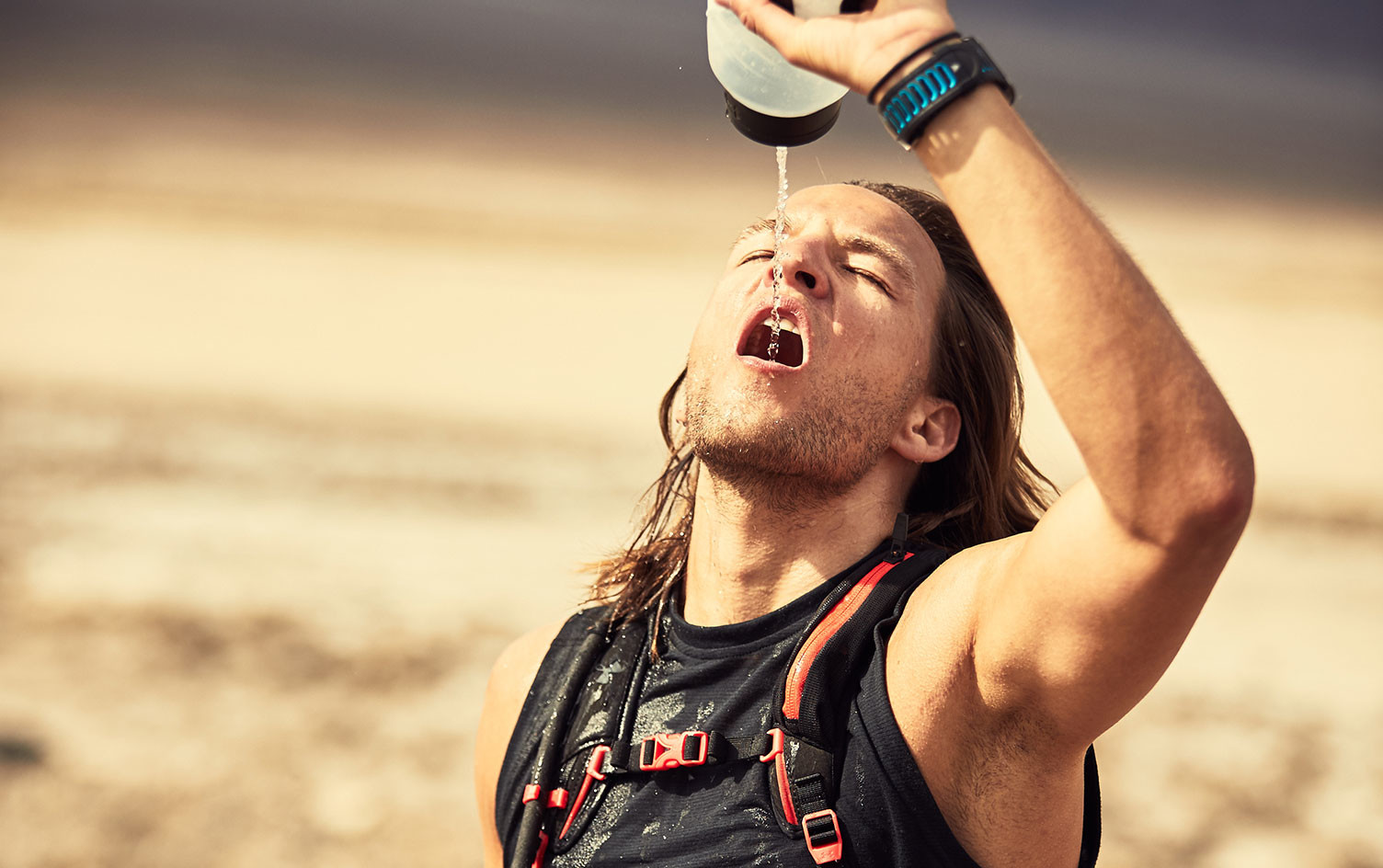
When runner’s gain weight while training, it is a sure sign of over drinking. Slow runners are more likely to over hydrate. This is a serious condition and in medical terms is called hyponatremia,” says Dr Vijay D'Silva, Director- Critical Care and Medical Affairs, Asian Heart Institute and Medical Director, Tata Mumbai Marathon.
Tips to hydrate yourself:
Consume at least 500 ml of fluid two hours before exercise so as to give your body enough time to get rid of excess ingested water.
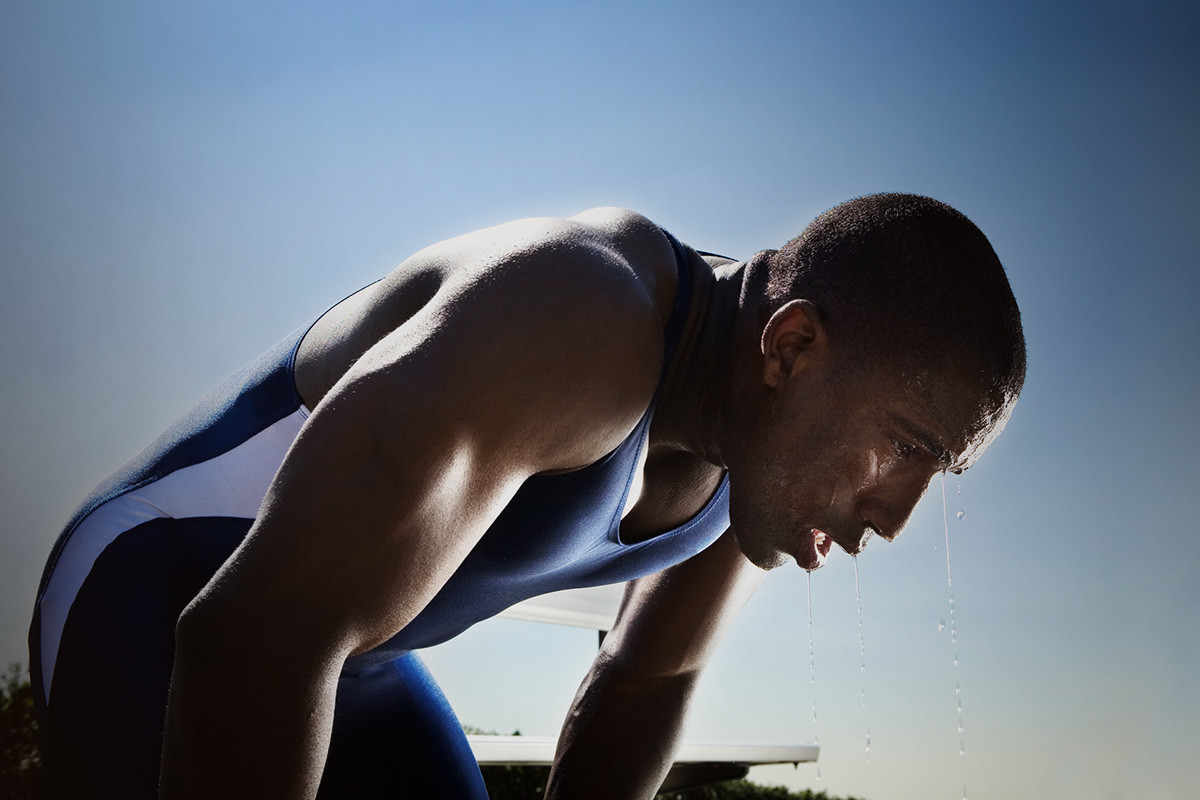
Make sure you drink water every time an aid station comes. It is ideal if one drinks water from early on and at regular intervals so as to counter the loss through sweating.
Fast runners must drink more fluids to avoid dehydration.
Tips to avoid over-hydration:
Slow runners bear the risk of over hydration. In such a case, drink fluids after longer periods. The trick is to ‘drink to thirst’ rather than ‘drink to max’.Drink only that much fluid that you lose over sweating.
Try to choose such drinks which have sugar or electrolytes so that you can easily lose it through sweating.
Some symptoms of dehydration are feeling light-headed, rapid heart rate, sunken eyes, dry mouth, thirsty, and headache.
Symptoms of over-hydration include headache, puffy or bloated hands and feet, nausea, dizziness, disorientation, and feeling sleepy.
(09/10/2021) ⚡AMP2021 Loch Ness Marathon makes final call for entries
Those wishing to take part in the Baxters Loch Ness Marathon & Festival of Running have until September 19 to sign up.
The event, which takes place on Sunday October 3 2021, includes the Marathon, Baxters River Ness 10K, 10K Corporate Challenge and Baxters River Ness 5K.
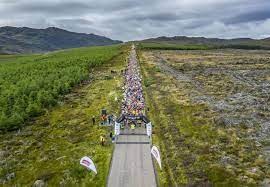
Making its return for the first time since 2019, the event will have enhanced safety measures and Covid guidelines in place. Typically attracting runners from around the globe, this year will see participants primarily from across the UK descend upon the Highland capital for one of the world’s most scenic marathons.
The Event Village will also be back for the event weekend, with highlights including a Sports Expo and a Festival on race day with street food and a pipe band.
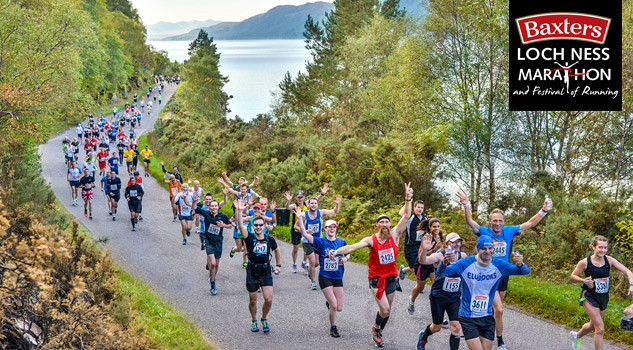
Malcolm Sutherland, Event & Race Director of Baxters Loch Ness Marathon & Festival of Running, said: “We’re so excited for the return of the Baxters Loch Ness Marathon & Festival of Running and to welcome everyone back to beautiful Loch Ness. It’s always great to see so many different people and abilities come together to enjoy the races and this year will be even more special.
“Of course, there will be Covid safety measures in place and all participants will receive guidelines outlining these measures.
“We’re now taking the last entries for the event so if you’ve been thinking about taking part in our 5K or 10K, then get involved! There are also some charity spaces still available in the marathon, which are a great way to raise money for fantastic charities, including our official charity, Macmillan Cancer Support.
“We wish all runners the best of luck with their final weeks of training and fundraising, and look forward to seeing them on the start line on October 3.”
Discounted entry for the Baxters River Ness 5K is also available for schools and youth groups and clubs and is open to all ages and running abilities.
Entries close on September 19, 2021 unless race capacity is reached sooner, with limited 5K entries available on the event weekend.
(09/10/2021) ⚡AMPby AIMS
Baxters Loch Ness Marathon
The Loch Ness Marathon is an annual marathon race in Scotland, held along the famous loch, Loch Ness, ending in Inverness. The event is part of the Festival of Running, held annually at the beginning of October. This also includes a 10K race and a 5K fun run, and attracts over 8,000 participants across all of the events. The Baxters...
more...Cheruiyot Defeats Ingebrigtsen In Diamond League 1500m Final
At tonight's talent-packed Wanda Diamond League Final at the Letzigrund in Zürich, Kenya's Timothy Cheruiyot evened the score with Norway's Jakob Ingebrigtsen by defeating the reigning Olympic 1500m champion by just 8/100ths of a second, reversing their finish places from Tokyo. With his victory tonight, Cheruiyot retained the Diamond League title he had earned in Brussels in 2019 and sent a signal that he'll be tough to beat at next summer's World Athletics Championships in Eugene where he will come in as reigning champion.
"That was good but a very tight race," Cheruiyot said. "I knew the standard was strong here, and I am happy."
In last month's Olympic final, Ingebrigtsen cleverly shadowed Cheruiyot throughout the race before overwhelming the Kenyan in the final sprint. Tonight, Cheruiyot took the lead from Australia's Stewart McSweyn at the bell, and held his lead through the final bend where Ingebrigtsen was still close behind. In the last 100 meters, Cheruiyot kept his signature forward-leaning form as he accelerated to the finish line in 3:31.37. Ingebrigtsen tied up in the final meters and had to settle for second in 3:31.45. McSweyn held on for third in 3:32.14 just ahead of his compatriot Oliver Hoare who ran a personal best 3:32.66.
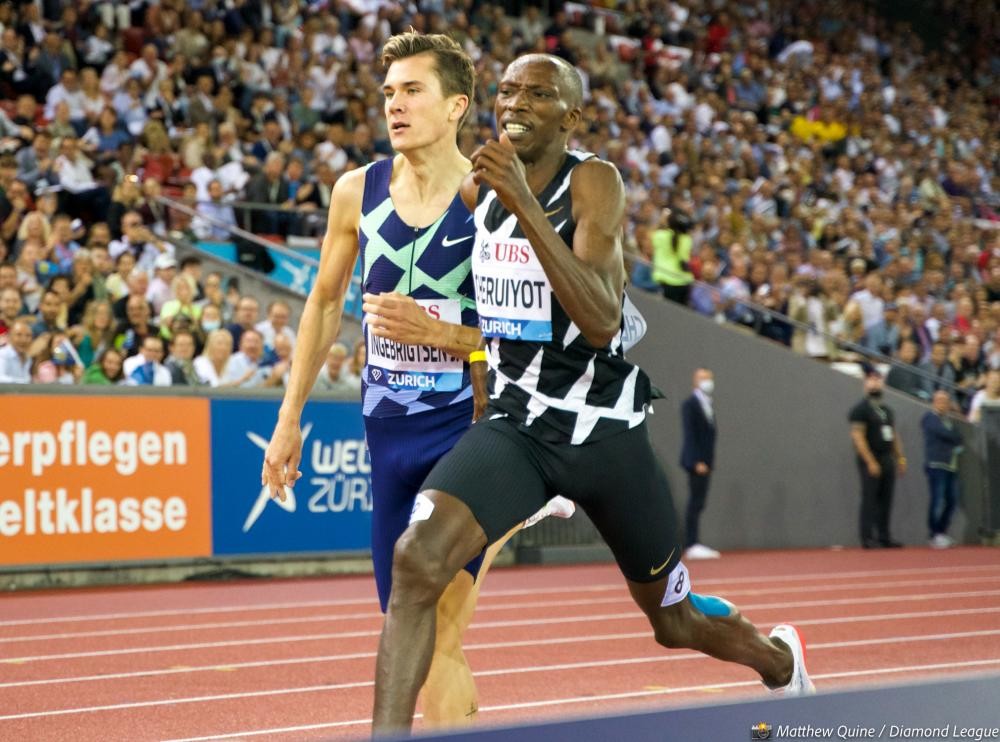
"It is what it is," lamented Ingebrigtsen. "I am really happy with what I did in Tokyo. It is tough to go into races afterwards. So I am just happy to be done with this season and looking forward to the World Championships next year."
Cheruiyot, who nearly missed out on Olympic team selection after he only finished fourth at the Kenyan Olympic Trials, is also looking forward to 2022.
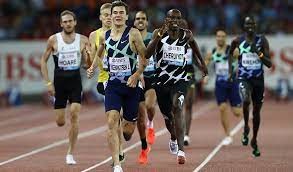
"I was having many challenges in Tokyo, so now I am getting better," he said referring to a pesky hamstring injury. "My hamstring is getting better and I am prepared for next season. My goal is that I know I need to defend my world title at next year's championships. That is my target now, but I need to work out (hard) because I know Jakob Ingebrigtsen is going to continue to get better."
In another epic rematch from Tokyo, Kenyan Faith Kipyegon out-sprinted Dutchwoman Sifan Hassan to win the women's 1500m in 3:58.33. Like in the men's race, Kipyegon was able to hold her form and run smoothly through the tape, while an exhausted-looking Hassan thrashed her way to second in 3:58.55. Hassan had defeated Kipyegon in the 2019 World Athletics Championships, but Kipyegon beat Hassan to third place in last month's Olympics. Their rivalry is sure to continue into next year.
"I was confident that in the last lap I could do better and it worked," Kipyegon said. "This is my second Diamond League trophy and my first as a mother. My family is watching tonight from home. I started my season well and I finished it well, I won almost all my competitions, especially the Olympic final. I am so grateful."
Kenyan men also won the 800m and 3000m steeplechase. In the two-lap event, reigning Olympic gold and silver medalists, Emmanuel Korir and Ferguson Rotich, finished in the same order again tonight. Rotich tried to win with a long drive from 250 meters out, but Korir --who was sprinting furiously-- passed him in the homestretch to win 1:44.56 to 1:44.96. American Clayton Murphy got third (1:45.21).
"I think it was tough today," said Korir. "But I managed to follow my strategy, tried to push it in the end and now I have this Trophy and I am very glad."
Benjamin Kigen upset Olympic champion Soufiane El Bakkali of Morocco in the steeplechase by running away from the field on the backstretch of the final lap, hurdling the final water jump, then holding on in the homestretch before El Bakkali could catch him. Kigen clocked 8:17.45 to El Bakkali's 8:17.70.
"It was my wish to win today," said Kigen. "I am very happy now. Today was not a matter of time, but it was a matter of winning."
A Kenyan also won the women's steeplechase. Norah Jeruto, who did not compete in Tokyo despite being the fastest steeplechaser of the year (8:53.65), won a two-way battle over compatriot Hyvin Kiyeng on the final lap. The two women were even going into the last water jump, but Kiyeng landed flat-footed, lost her momentum, and Jeruto scampered away. Jeruto was clocked in 9:07.33 to Kiyeng's 9:08.55. Olympic silver medalist Courtney Frerichs finished third in 9:08.74; her strong sprint got her past Ethiopia's Mekides Abebe and Kenya's Celliphine Chespol.
British teen Keely Hodgkinson, the Olympic 800m silver medalist, added "Diamond League Champion" to her résumé tonight when she pulled away from Jamaica's Natoya Goule in the homestretch to win in 1:57.98. Gould looked safe for second, but a charging Kate Grace just edged her at the line (both women were timed in 1:58.34). Jemma Reekie, Hodgkinson's Olympic teammate, finished fourth in 1:58.61, the same position as the Tokyo Olympics.
All the event winners tonight earned provisional starting starting spots at next summer's World Athletics Championships (conditions apply) and earned USD 30,000.
(09/10/2021) ⚡AMPby David Monti
A Strong Japanese Quartet Of Elite Runners In Vienna’s Comeback Marathon
With a strong quartet of Japanese elite runners headed by Kento Kikutani the Vienna City Marathon will go ahead for the first time since April 2019 on Sunday. Austria’s major road race event sees its 38th edition and organizers have registered around 26,000 entries. This includes races at shorter distances. Around 6,000 marathon runners will compete in Vienna on Sunday. The Vienna City Marathon will be the first major marathon worldwide with a strong international elite field and a mass race since the start of the Corona pandemic. It is a World Athletics Label Road Race. The marathon will be streamed live from 8.30 am on Sunday at: Vienna-Marathon.com.
It is the first time in the history of the Vienna City Marathon that a Japanese male elite team will be on the start line. And partly this development has to do with Eliud Kipchoge. When the Kenyan Olympic Champion broke the two hour barrier in the Austrian capital two years ago the world took notice of a unique running spectacle co-organized by the Vienna City Marathon. Back in Japan Kento Kikutani, Yuta Koyama, Koki Yoshioka and Daji Kawai all watched Kipchoge’s race through Vienna’s Prater Park, which is also part of the marathon course.
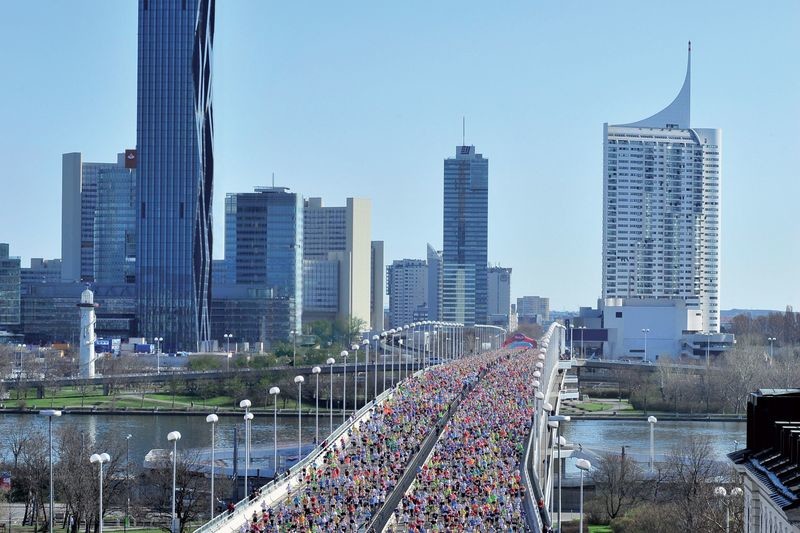
“I was watching the live stream. This was a huge effort by Kipchoge. I think that good weather conditions in Vienna had a big influence on the result,“ said Kento Kikutani, who has a personal best of 2:07:26 from Lake Biwa this year. He is the fastest of the Japanese quartet and wants to improve his personal best on Sunday: „I will follow to pacers and then I want to go for the win after the 30k point“, said the 27 year-old, who then hold up his watch during the press conference: “At least I already have the same watch Kipchoge used in Vienna!“
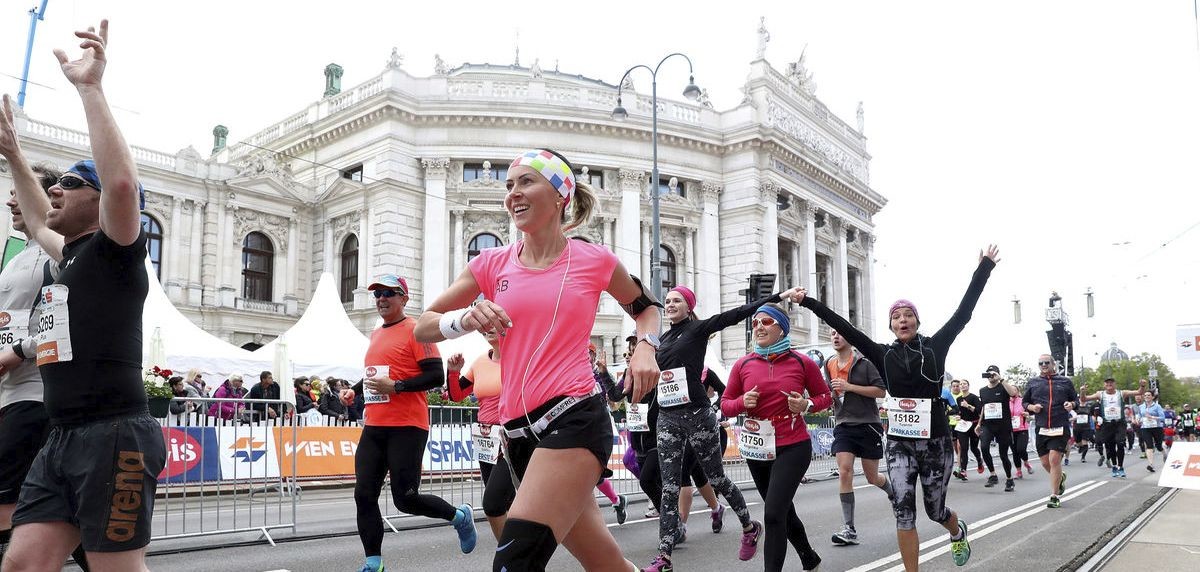
Yuta Koyama has a personal best of 2:08:46 and is the second fastest of the four Japanese. He is also ready for a fast race and possibly a personal best. „My plan is to go with the leading group,“ said Koyama, who also clocked his PB in Lake Biwa this year. „Vienna is a good opportunity for me to race despite the corona pandemic.“
Koki Yoshioka and Daji Kawai feature personal records of 2:10:13 ans 2:10:50 respectively. Both target their personal bests on Sunday. “I really appreciate that I am able to run here during the pandemic. My goal is to go under 2:10,“ said Yoshioka while Kawai stated: “Vienna is a traditional race and I am happy to run here. As there are pacers, I think the race will have a good pace. I want to stay calm and will then decide how to react.“
“This will be the most important Vienna City Marathon since the first edition back in 1984,“ said Race Director Wolfgang Konrad. “On Sunday we will send a strong message as the first major international marathon worldwide since the start of the pandemic.“ He compares the situation to when he was an elite runner back in the 80ies. “After a fine Olympic season I was injured in a car crash in 1980. When I could finally start running again I had to stop after two kilometers. Four months later I ran a PB,“ recalled the former steeplechaser, who achieved a fine PB of 8:17.22 in 1982. “Back then it was just about me, now it is about everyone. We were desperate to bring the race back on as early as possible. It was a disaster for us when we had to cancel on short notice in 2020. But we continued to work hard to make the race possible again.“
“We want to stage a great race that stands for joy and motivation. With this event we also want to say thank you to all those who have supported us during this very difficult time," said Kathrin Widu, one of the Managing Directors of the Vienna City Marathon. She explained that runners from 126 nations entered the race. “Most of the foreigners are obviously from EU countries.“ While over 90 % of all runners are vaccinated organizers have implemented strict hygiene rules. Everyone needs to provide a negative Corona test to receive the bib number.
Fellow Managing Director Gerhard Wehr said: “We have never been out of touch regarding organizing races. Under most difficult situations we did stage a number of smaller races whenever possible,“ said Gerhard Wehr. “We are now experiencing a very strong togetherness from all those involved. Everyone wants the Vienna City Marathon to come back.“
More information is available at: Vienna-Marathon.com.
(09/09/2021) ⚡AMPVienna City Marathon
More than 41,000 runners from over 110 nations take part in the Vienna City Marathon, cheered on by hundreds of thousands of spectators. From the start at UN City to the magnificent finish on the Heldenplatz, the excitement will never miss a beat. In recent years the Vienna City Marathon has succeeded in creating a unique position as a marathon...
more...American Galen Rupp And Olympic Marathon Bronze Medalist Bashir Abdi will Lead Field For The Great North Run Half-Marathon
After having its anniversary celebrations scuppered by the pandemic last year, the Great North Run returns on September 12 with a redesigned course as many of the athletics stars of 2021 meet over the 13.1-mile distance.
For the first time since 2013 there will be a men’s winner other than Mo Farah. The multiple global track gold medallist won the Great North Run from 2014-2019 and the 2020 race was called off. But the new champion could still have strong links to Farah.
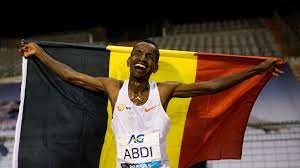
The women’s race also sees top runners from the track and roads collide. Hellen Obiri, the world 5000m champion from Kenya, faces Molly Seidel, the American marathon runner who won a surprise bronze medal at the Olympics.
British hopes, meanwhile, are led by Eilish McColgan, who is making her debut at the distance after a fine track season, plus Charlotte Purdue ahead of racing at the Virgin Money London Marathon on October 3.
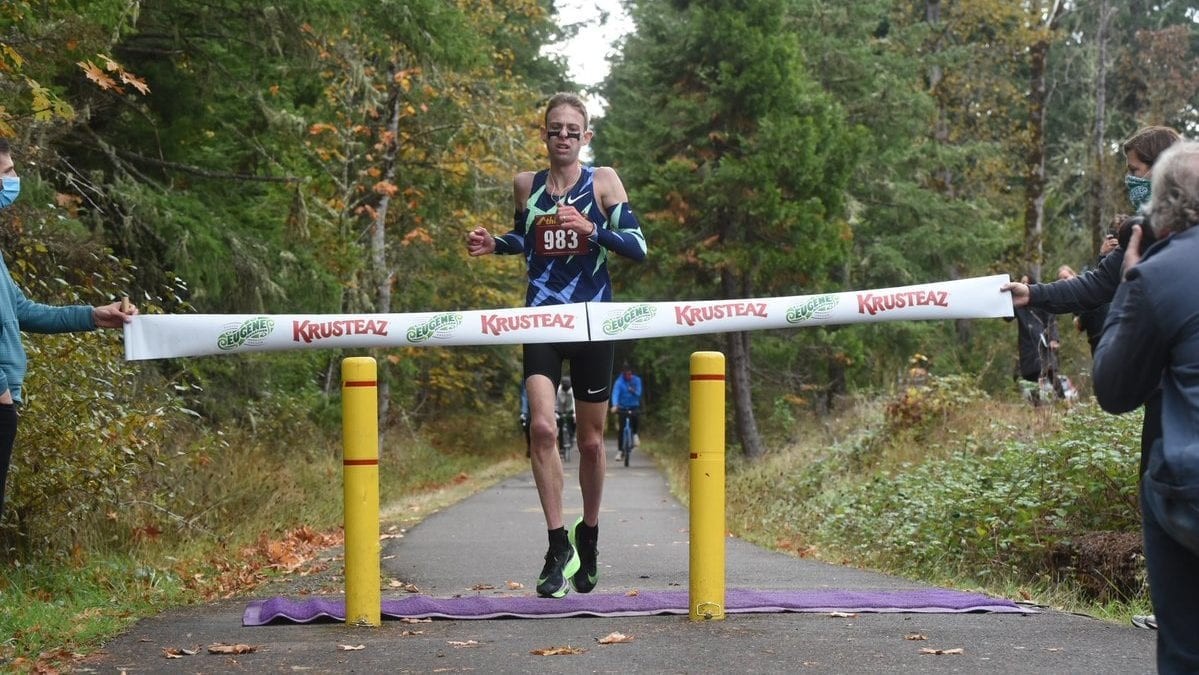
The athletes will be following in famous footsteps as the event first took place in June 1981. The first man home that day was local runner Mike McLeod and the England footballer Kevin Keegan effectively became the first celebrity runner when he took part wearing a top that incorporated the colours of Newcastle and Sunderland.
“I think there is an extra significance to this year,” says race founder Brendan Foster. “It will demonstrate that the country’s getting back to normal and that ordinary people are getting back to doing what they want to do.”
The course starts and finishes in the centre of Newcastle, crossing the Tyne Bridge twice, with live coverage on BBC.
In the men’s race much will depend on how well Abdi and Rupp have recovered from the Olympic marathon five weeks ago.
Abdi clocked 2:10:00 that day in hot conditions but has a best of 2:04:49 from Tokyo last year. The 32-year-old also has run 60:42 on the old Great North Run course that finished in South Shields.
Rupp won Olympic 10,000m silver behind Farah in 2012 and marathon bronze in Rio in 2016 before finishing eighth in the marathon in Tokyo last month. His half-marathon best is 59:47.
(09/09/2021) ⚡AMPby Jason Henderson
Great North Run
Great North Run founder Brendan Foster believes Britain is ready to welcome the world with open arms after the launch of the event's most ambitious plan to date. The Great World Run campaign seeks to recruit one runner from every country in the United Nations – 193 in total – to take part in the iconic half marathon in...
more...Markus Ryffel donates 1984 Olympic shoes to Heritage Collection
Markus Ryffel has generously donated to the World Athletics Heritage Collection one of the running spikes he wore when earning the 5000m silver medal at the 1984 Olympic Games.
The Swiss distance runner donated his left shoe to the collection in June and it is now on permanent view in glorious 360Ëš 3D in the Olympic Athletics Collection room of the Museum of World Athletics (MOWA), the world’s first virtual sports museum.

This evening at the Weltklasse Zürich Heritage Night, Ryffel was able to officially hand over the spike in person to his friend and racing contemporary, World Athletics President Sebastian Coe, who won his second 1500m title in Los Angeles in 1984.
Still the Swiss 5000m record
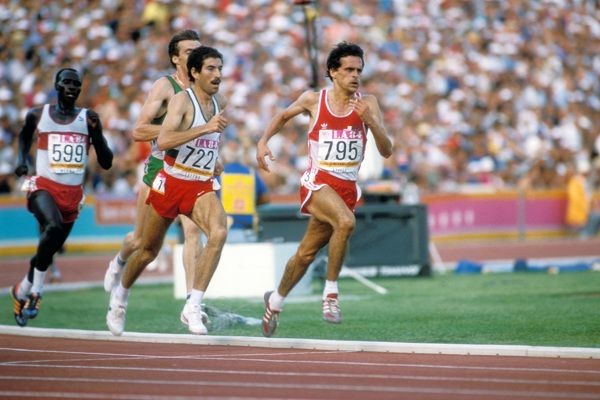
The final day of the 1984 Olympic athletics programme was hot and damp. The Swiss spectators among the 90,000 crowd in the Memorial Coliseum started to sweat even more as Ryffel geared up for his final sprint, 300 metres from the finish line of the 5000m final.
Portugal’s Antonio Leitao, pre-race favourite Said Aouita of Morocco, and Ryffel were neck and neck in lanes one, two and three. For a moment, even a Swiss Olympic victory seemed possible.
Aouita, however, showed himself unimpressed by Ryffel’s efforts and ran the last 400m in an unheard-of 54.7 seconds. He became the victor of a memorable race: then the third-best time in history for the Moroccan (13:05.59), with fifth place on the world all-time list for Ryffel.
Ryffel’s 13:07.54 still stands as the Swiss record 37 years later. Aouita’s Olympic record was only improved in Beijing in 2008 by Kenenisa Bekele.
Calf injury
While Aouita became the first man to run 5000m within 13 minutes in Rome, 11 months after his triumph in Los Angeles, for Ryffel the silver medal from Los Angeles remained the highlight of an illustrious career.
At the European Championships two years later, he was in a promising position but had to withdraw with an injury, which ended up requiring surgery. His calf muscles – including varicose veins inherited from his father – also thwarted his efforts at his last great aim, the marathon. He made several attempts at completing races, but time and again he had to give up some time after 30 kilometres with calf pain. He never made it to a fourth Olympics and retired from elite sport in late 1991.
New York comes to Uster
Ryffel was by no means bitter; quite the contrary. He had planned ahead during his active years. As a young man he had been a fan of Frank Shorter, the 1972 Olympic marathon champion. So it was not surprising that, aged 22, he accompanied his older brother Urs, himself a fairly successful cyclist, to the 1977 New York Marathon. He finished 16th, just ahead of four-time Olympic champion Lasse Viren.
Both of them were impressed by the “amazing atmosphere” of this mass event.
“We wanted to start something similar in our home-town Uster,” said Ryffel. And so, they established the race around the idyllic Greifensee near Zürich which has been running since 1980, initially 19km long, and over the half marathon distance since 1992. In 1998, Uster even hosted the World Half Marathon Championships, where Paul Koech and Tegla Loroupe from Kenya were the winners.
Running weeks
By the end of the 1970s, Ryffel began organising running weeks in St Moritz and trips to the New York Marathon, alongside his friends and training partners Dietmar Millonig of Austria and Thomas Wessinghage of West Germany.
The trio of runners still work together. Although the goal of the original ‘running weeks’ was to help participants achieve a 3:30 marathon time, the events have now morphed into more general running and fitness holidays in St Moritz and other alpine destinations.
Around the same time, Ryffel opened his first Ryffel Running Shop in Bern together with his brother Urs and business partner Markus Bill. A second shop in Uster followed shortly after, and the business later employed up to 28 people.
“It started in a cow shed next to my parents’ restaurant,” remembers Ryffel. He has since sold the shops to a larger company, and now organises running events, active holidays, trips to marathon races and private coaching.
‘The bike really shaped me’
Ryffel learned early that it was important to be decisive and work hard towards one’s aims. “My parents had a restaurant and a butcher shop, and we had a delivery service. Without it, I would never have become such a good runner. The kilometres on the bike really shaped me because the heart does not distinguish between cycling and running.
“Even in primary school, I did 20 or 30 km on my bike,” he added. “I had my 17 customers to whom I delivered cordon bleu and other meats.”
Ryffel’s parents, however, were not supportive of their son’s sporting ambitions at first. So it was lucky that Ryffel moved to Bern for an apprenticeship in typesetting, where he could be near his supporter and coach Heinz Schild. There he started running in the uniform of the City of Bern gymnastics club.
Ryffel is now 66. He still runs and has calculated from his paper training log that he jogged his 200,000th kilometre in 2020. That’s five times around the earth.
“I can still run regularly – and, most importantly, without pain,” he said. “And if all goes well, I will be running my 98th marathon in Chicago this year.” Because of Covid, the usual group trip to New York cannot happen, and Ryffel wants to participate in this marathon with a group aiming at a 4:30 finish time.
Times have changed. “Just being there is everything now,” he says.
(09/09/2021) ⚡AMPby World Athletics
American Women Offer Most Intriguing Storyline of 2021 Credit Union Cherry Blossom Ten Mile Run
Jenny Simpson is the course record holder (4:16.1) and eight-time winner of the Fifth Avenue Mile — the farthest she’s ever raced on the roads. Jenny is also a three-time Olympian (2008, 2012 and 2016 bronze medalist) and three-time World Championship medalist (gold in 2011, silver in 2013 and 2017). Sara Hall, on the other hand, has run the second fastest marathon ever (2:20:32) for an American woman, and has won 11 USATF National Championships on the roads since 2006, including 10 mile titles in 2018 and 2019. Hall was 2nd American (52:54) when the USATF 10 Mile Championships were last hosted by the Credit Union Cherry Blossom Ten Mile (CUCB) in 2014.
But Simpson and Hall aren’t the only two American women entered in the 2021 USATF 10 Mile Championships Presented by Toyota. They just define the two extremes of road racing experience represented in what is sure to be an interesting and exciting race for the title of America’s best over 10 miles in 2021.
When Hall and Simpson line up for the women’s-only start at 7:18 a.m. this coming Sunday morning, September 12, they will be joined by Americans Diane Nukuri, Annie Frisbie, Natosha Rogers, Susanna Sullivan, and Bethany Sachtleben, among others. But no runner comes into the race with the same momentum Hall has as winner of three road races this summer, while setting a personal best for 10K on the roads (31:33) at the Mastercard New York Mini. Nukuri may have raced more frequently, with six top-10 road race performances over the last six months, but it was her 5th place result at CUCB 2018 (53:56) that best argues for her inclusion in the conversation about pre-race favorites.
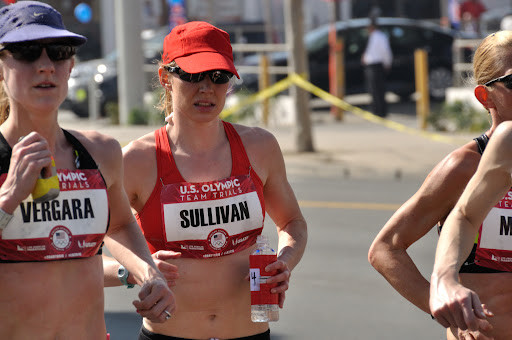
Hall is 38 years old, Simpson is 35 and Nukuri is 36, but this won’t just be a race among veterans if Annie Frisbie has her way. In fact, the 24 year-old Frisbie prevailed over Nukuri at two races this summer, and boasts a 54:00 personal best for 10 miles from the 2019 USATF 10 Mile Championships, when she placed 5th. Another sub-54 minute performer (53:45), Natosha Rogers (30), placed second at the 2017 USATF 10 Mile Championships and returns to the roads after a spring and summer of racing on the track in quest of an Olympic team slot in the 10,000m.
Top DC-area runners Susanna Sullivan (31) and Bethany Sachtleben (29) have proven themselves to be worthy competitors over the years, with Sachtleben placing 3rd among Americans at CUCB 2018 and 2nd among Americans in 2019. Sullivan was 4th American at CUCB in 2014, 5th in 2015 and 3rd in 2017.
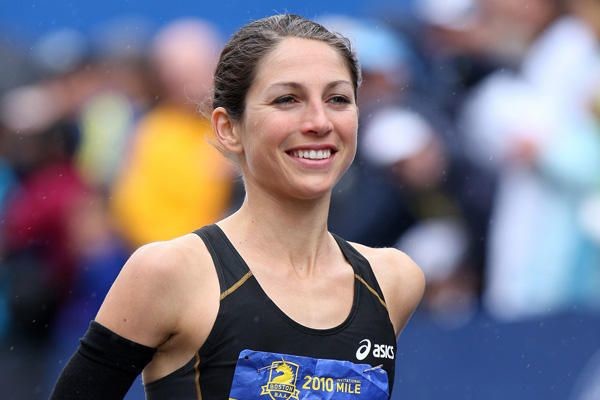
American runners will be competing for a total of $26,000 in U.S.-only prize money, from $5,000 for 1st place to $500 for 10th place, paid equally to men and women.
Of course, there’s an international component to the 2021 Credit Union Cherry Blossom Ten Mile as well. And Kenyans Iveen Chepkemoi (24) and Caroline Rotich (38) will lead the women’s chase for an international prize pool of $20,000, with $5,000 for 1st place down to $150 for 10th place, again paid equally to men and women. American runners placing in the top-10 overall are able to “double-dip” and claim the appropriate payment from both international and U.S.-only prize pools.
Chepkemoi boasts the fastest 10-mile personal best among all the women (51:43), while Rotich won CUCB in 2013 (52:46).
So, who will prevail? The rookie Simpson? One of the 38 year-old veterans, Hall or Rotich? Or one of the 24 year-old up-and-comers, Frisbie or Chepkemoi? There’s an all-out 10-mile race between here and the answer.
A stellar field of American and international men will take to the same 10-mile course at 7:30 a.m. this Sunday, in pursuit of the same titles, prize money and bonuses as the women. Bonuses on offer include $10,000 for a World Record (44:23 men/51:23 women), another $10,000 for an American Record (45:54 men/51:23 women) — either of which will be split evenly among any men and women record breakers — as well as time bonuses of $1,000 and $750 for the first two runners to break 46:00 for men or 52:00 for women. Finally, there is a special prize pool of $1500/$1000/$500 for both men and women who have taken part in the Road Runners Club of America (RRCA) RunPro Camp or Roads Scholar programs.
Chris Derrick (30) comes into the USATF 10 Mile Championships with the fastest personal best among the American men (46:53), which he ran at CUCB 2018, placing 5th. He, like many of the other men and women in the race, however, has his sights set on one of the many fall marathons this year, and may be racing on tired legs.
Abbabiya Simbassa (30) will also be racing on tired legs, having run the 2021 USATF 20K Championships on Labor Day in New Haven, CT, where he placed 2nd, just one-second shy of the title. Add that to the 2nd places he ran at the 2021 USATF 15K Championships in March, and the recent Asics Falmouth Road Race, and you can imagine how Simbassa’s legs feel going into CUCB 2021. Simbassa was also 2nd American at CUCB 2018 and 2nd at the 2019 USATF 10 Mile Championships (46:57).
A cluster of other American men with 10-mile personal bests that should be competitive include Kiya Dandena (46:58), Augustus Maiyo (47:05), Elkaneh Kibet (47:15), Willie Milam (47:18), Noah Droddy (47:28), and Louis Serafini (47:35). Dandena (32) set his personal best at CUCB 2017, when he was 3rd American; he was also 5th American in 2019 and 7th in 2018. Maiyo (38) set his personal best at the 2019 USATF 10 Mile Championships, while placing 5th. Kibet (38) placed 3rd at the 2017 EQT Pittsburgh 10 Miler. Milam (29) ran his best time at CUCB 2019. Serafini (29) was the 6th American at CUCB 2019, and set his personal best at the 2019 USATF 10 Mile Championships, while Droddy (30) ran his best at the 2016 USATF 10 Mile Championships, placing 2nd.
Despite the presence of so many competitive American men, Kenyan runners typically dominate the overall race up front. Stephen Sambu (33) comes into the race with a personal best of 45:29 from his first CUCB victory in 2014. Sambu clearly has the most experience on DC roads of anyone in the field, with wins in 2014 and 2015, a 4th place finish in 2013, and a 5th in 2019.
Two other Kenyans, Dominic Korir (28) and Edwin Kimutai (28), are also very worthy of mention. Dominic Korir was 6th overall in CUCB 2017 in a time of 46:45. Kimutai ran 2:08:15 for 4th place at the Harmony Geneva marathon for UNICEF last May. Sadly, Kimutai’s wife passed away on August 23rd — he’ll be running in her memory, and for a young daughter suddenly left without a mother.
The top American man and woman will each earn a spot on Team USA for the 2022 World Athletics Half Marathon Championships, to be held in Yangzhou, China, on March 20, 2022. Should the winning American man or woman decline their Team USA slot, the second place finisher will be offered the slot; there will be no “rolling down” beyond second place.
(09/09/2021) ⚡AMPby Running USA
Cherry Blossom Ten Mile Run
The Credit Union Cherry Blossom is known as "The Runner's Rite of Spring" in the Nation's Capital. The staging area for the event is on the Washington Monument Grounds, and the course passes in sight of all of the major Washington, DC Memorials. The event serves as a fundraiser for the Children's Miracle Network Hospitals, a consortium of 170 premier...
more...Olympians and Past Champions will Headline New Balance 5th Avenue Mile on Sunday
To close out their seasons, 15 Tokyo Olympians, three Olympic medalists, and two past event champions will race down Manhattan’s most famous thoroughfare in the professional athlete heats at the New Balance 5th Avenue Mile on Sunday, September 12.
The 40th running of the New Balance 5th Avenue Mile – the world’s most iconic road mile race since 1981 – stretches 20 blocks along the east side of Central Park. In addition to age-group heats, there will be an NYPD/FDNY heat taking place to mark the 20th anniversary weekend of 9/11, a Back to School Mile for youth ages 12-18, a George Sheehan Memorial Mile for seniors and NYRR Road Mile Championship heats.
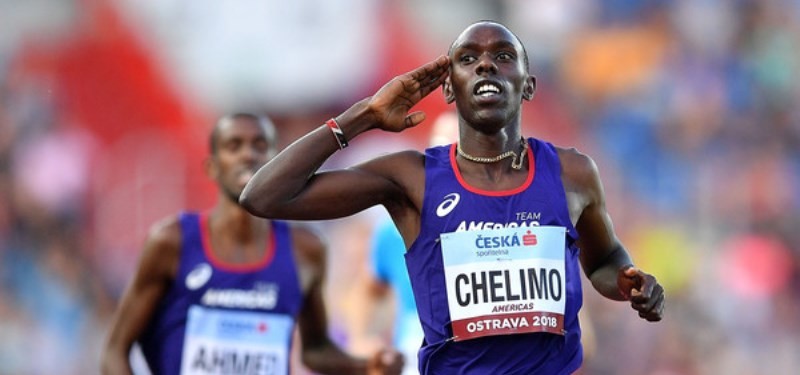
“The New Balance 5th Avenue Mile is an iconic race which invites people of all ages and abilities to run down one of the most famous streets in New York City,” said Ted Metellus, Vice President of Events, NYRR and Race Director, TCS New York City Marathon. “This year will be incredibly exciting with a number of Olympians joining us after their top performances in Tokyo, and we are looking forward to showcasing the city’s resiliency and honoring the work of those participating in the FDNY/NYPD heat to mark 20 years since 9/11.”
The NYRR Road Mile Championships and professional athlete races will be live streamed on USATF.TV free beginning at 11:35 a.m. ET, with a webcast replay for on-demand-viewing available on USATF.TV+.
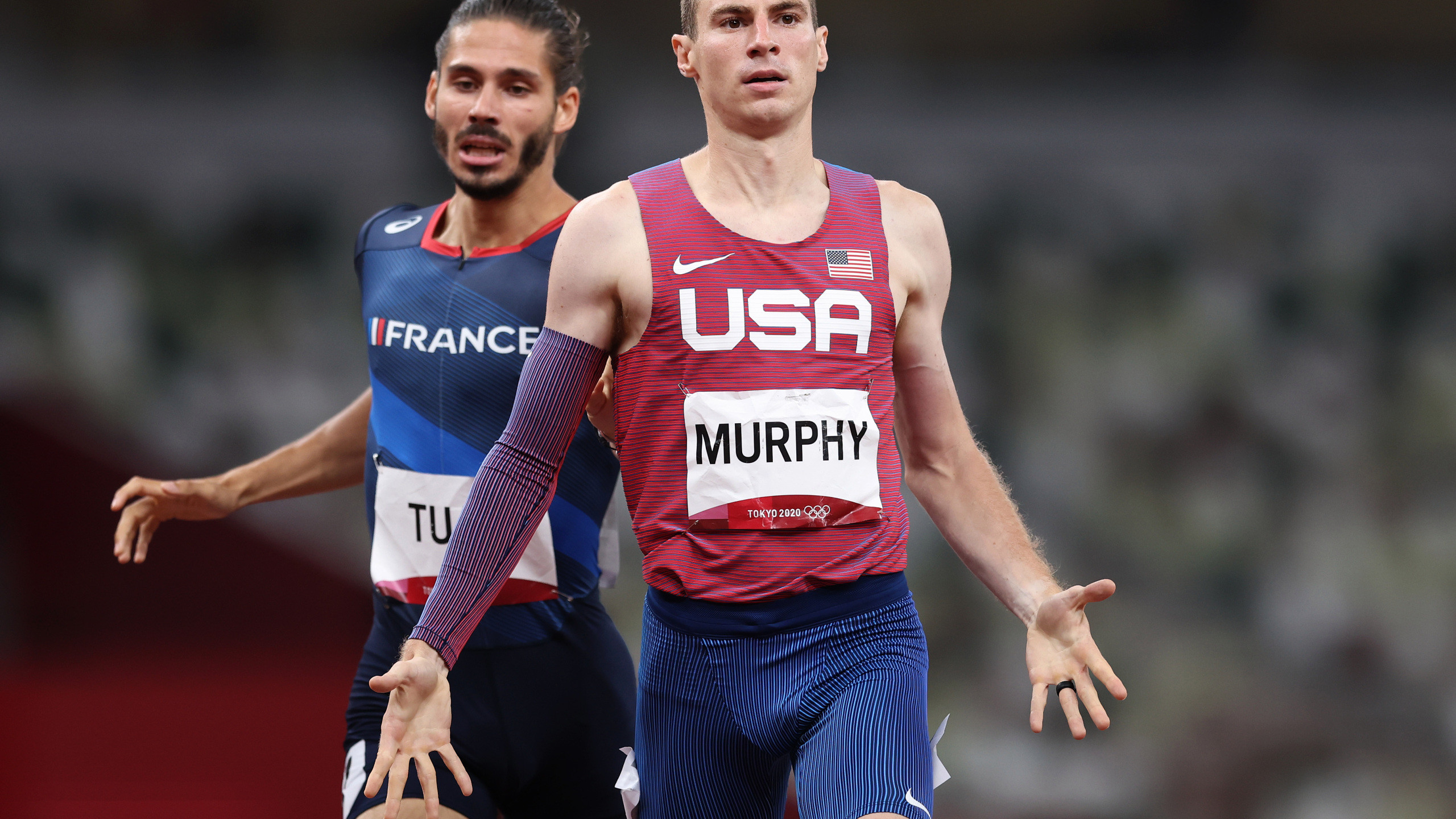
Leading the way in the professional men’s race will be three-time U.S. Olympian Matthew Centrowitz who won Rio 2016 Olympic gold in the 1,500 meters and the 5th Avenue Mile in 2012, and two-time U.S. Olympian Paul Chelimo, who won bronze in Tokyo and silver in Rio in the 5,000 meters.
“I’m excited to return to New York for my sixth race down 5th Avenue, a race I first won nine years ago,” Centrowitz said. “Heading back East and ending my season there is like a great end-of-summer tradition, and I’m looking to show the rest of the guys I’ve still got a step or two left in 2021.”
“I’ve already run a 5K and half marathon in New York, so now I just need to check the mile and the marathon off my list,” Chelimo said. “Running a straight line down 5th Avenue is very different than running laps on a track, and I’ve got more road racing experience than the other guys in this field. I’m confident in my finish, so if I can keep it close through halfway, I think I can beat the milers at their own game. Go hard or suffer for the rest of your life."
Challenging them will be two-time U.S. Olympian and 2016 Olympic bronze medalist in the 800 meters Clayton Murphy, Olympian and 2018 event champion Jake Wightman, and Olympian and European Indoor Championships gold medalist Adel Mechaal.
A trio of other Americans to watch will be Tokyo Olympians Joe Klecker, Mason Ferlic, and Hilary Bor, with Ferlic racing the event for the third time and Klecker and Bor making their debuts in the event after competing in Tokyo earlier this year.
The professional women’s race will see a first-time winner, with top contenders including USATF Road Mile Championships runner-up Shannon Osika, British indoor record-holder and Olympian Jemma Reekie, and European Indoor Championships gold medalist Amy-Eloise Markovc.
About New York Road Runners (NYRR)
NYRR’s mission is to help and inspire people through running. Since 1958, New York Road Runners has grown from a local running club to the world’s premier community running organization. NYRR’s commitment to New York City’s five boroughs features races, virtual races, community events, free youth running initiatives and school programs, the NYRR RUNCENTER featuring the New Balance Run Hub, and training resources that provide hundreds of thousands of people each year with the motivation, know-how, and opportunity to Run for Life. NYRR’s premier event, and the largest marathon in the world, is the TCS New York City Marathon. Held annually on the first Sunday in November, the race features a wide population of runners, from the world’s top professional athletes to a vast range of competitive, recreational, and charity runners. To learn more, visit www.nyrr.org.
(09/08/2021) ⚡AMPby Running USA
New Balance 5th Avenue Mile
The New Balance 5th Avenue Mile opens a beautiful 20-block stretch of 5th Avenue to runners of all ages and abilities who want to run their best mile in New York City. Special races include a youth mile, the George Sheehan Memorial Mile for runners age 60 and over, the NYRR Road Mile Championships, and Olympic-caliber professional men's and women's...
more...Sir Mo Farah out of Great North Run but he will return to competition next year
Sir Mo Farah will not defend his Great North Run title this weekend but will return to competition next year.
Britain’s most decorated athlete, who has won the last six GNRs, took part in Soccer Aid last weekend despite a stress fracture in his foot.
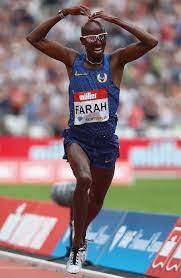
He appeared briefly as a substitute at the Etihad before limping off and it has been confirmed he has no plans to race in the foreseeable future.
Farah, 38, failed to qualify for the Tokyo Olympics in June and his reaction sparked speculation he was about to retire.
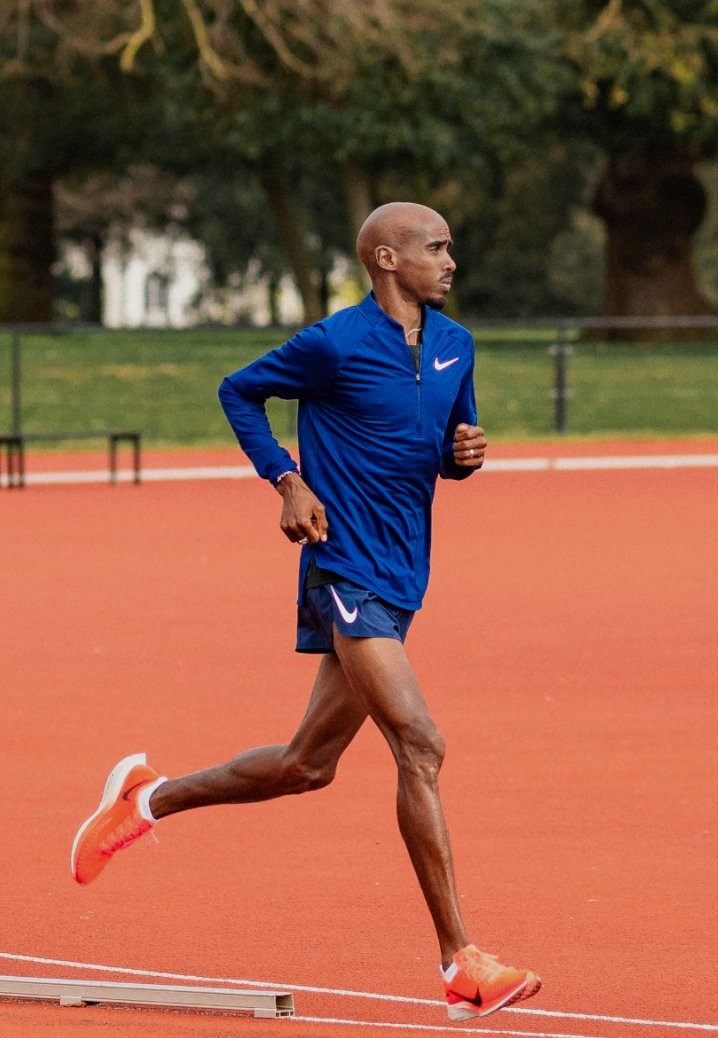
“I’ve always said if I can’t compete with the best I won’t just go to be in a final,” he said that evening. “Tonight showed it’s not good enough.”
However, Great North Run founder Sir Brendan Foster revealed: “I can assure you Mo isn’t going to finish and I can assure you he’ll compete in the Great North Run again.
“He literally can’t run this weekend and he’s gutted about that as he’s won every year since 2014. We’ve never had anybody as successful as him and everyone will miss him.
“But forget all the talk that he is going to finish. He’s assured me he’ll be running seriously again next summer.”
Next summer sees three major events, with the Birmingham Commonwealth Games sandwiched between World and European Athletics Championships.
The Worlds take place in Oregon where Farah lived and trained for six years. The Somali-born Londoner is a six-time world champion.
(09/08/2021) ⚡AMPby Alex Spink
Great North Run
Great North Run founder Brendan Foster believes Britain is ready to welcome the world with open arms after the launch of the event's most ambitious plan to date. The Great World Run campaign seeks to recruit one runner from every country in the United Nations – 193 in total – to take part in the iconic half marathon in...
more...Four-time world 100m champion Shelly-Ann Fraser-Pryce will not compete in the Diamond League final in Zurich
According to her agent Paul Doyle, she has elected not to take part in the two-day final, which starts on Wednesday. Fraser-Pryce had qualified for the 100m final based on her previous performances this season on the Diamond League circuit.
While she had qualified for the final, Doyle says that she will not feature in Zurich.
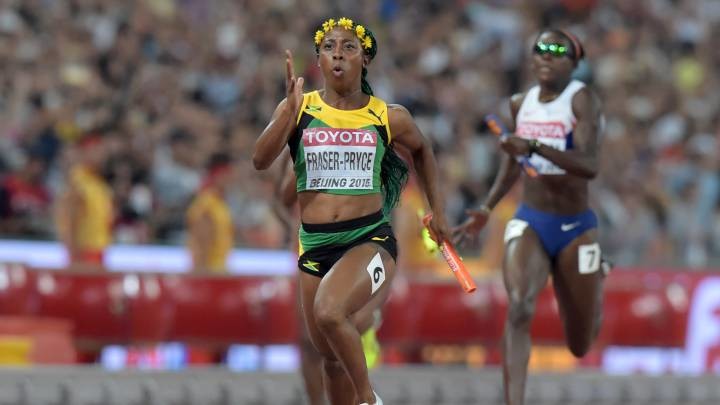
"She is not competing in Zurich. She has not withdrawn so to speak, she was never confirmed," Doyle said.
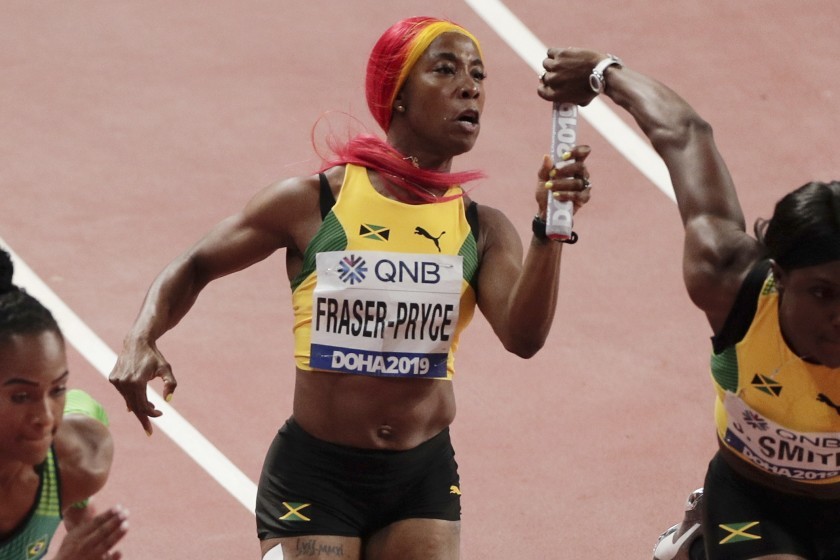
Furthermore Doyle said that Fraser Pryce is considering ending her season now, however, they are considering one more meet.
"(We) are considering one more (meet), but (that has) not (been) confirmed yet," Doyle added.
Fraser-Pryce last competed in Poland on Sunday at the Kamila Skolimowska Memorial meet, a World Athletics Continental Tour Gold event, where she won the 100m in a time of 10:81 seconds. She has run three races on the circuit since the Tokyo Olympics.
(09/08/2021) ⚡AMPby Daniel Wheeler
World marathon record holder Eliud Kipchoge launches foundation
Eliud Kipchoge has officially launched his own foundation referred to as ‘the Eliud Kipchoge Foundation’.
Fresh from winning his second consecutive Olympic gold medal in his specialty during the just concluded Tokyo Olympic Games, Kipchoge said the foundation will have a strong focus on education and environment and will be seeking to strengthen communities both locally and internationally.
“My mission is to give all children in the world access to knowledge and education. I want those children to grow up into healthy adults in a green and breathing world where forests keep our people safe.
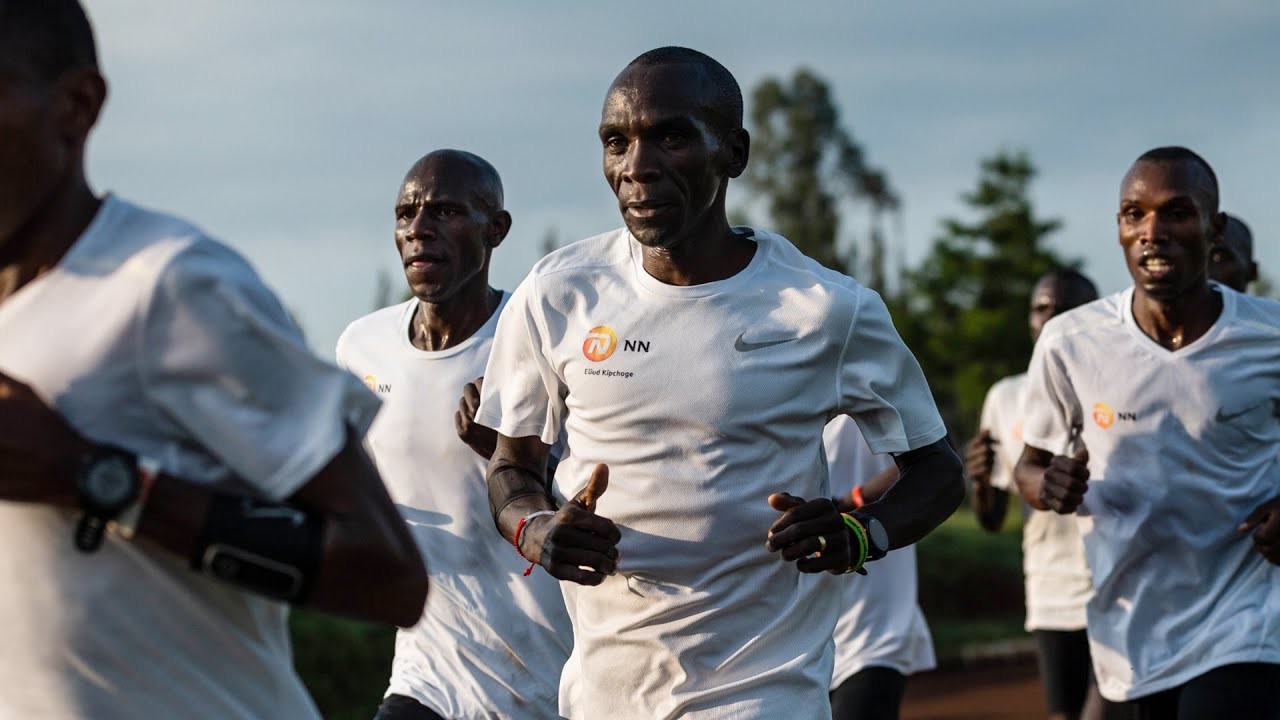
“I want to contribute and grow the movement in education and environmental protection through my Foundation, to reach the people in the world with my voice,” said Kipchoge.
He also added that he wants to raise awareness and to raise finances to build libraries, schools and grow more trees on the forest sites that will help the upcoming generation in terms of clean air.
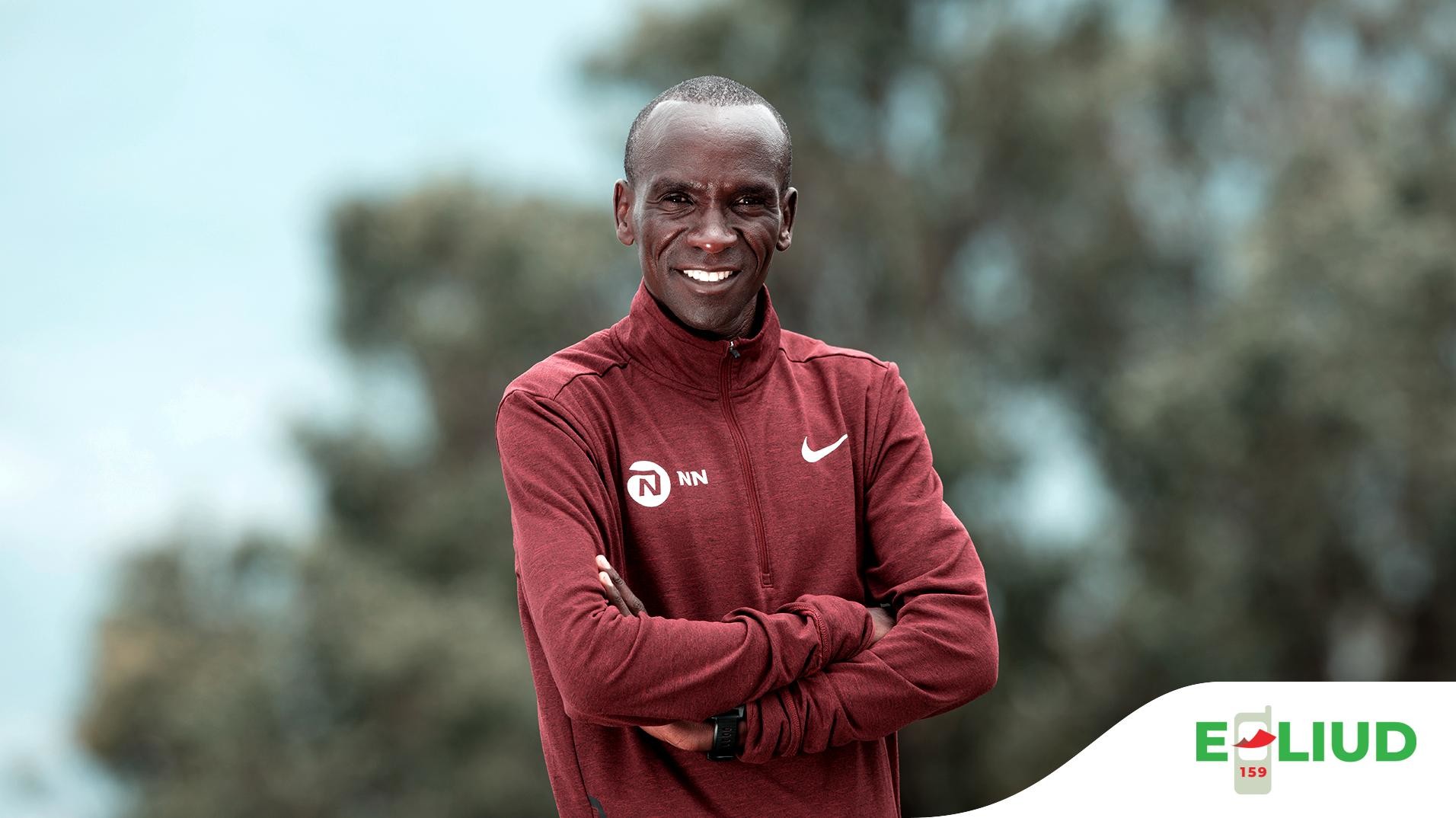
“I was lucky in my life to have access to books and knowledge from a young age. It taught me to value life and that is why I have decided to establish the foundation that will help the upcoming generation who also must know the value of having a good environment,” he added.
The Eliud Kipchoge Foundation focuses on two pillars: education and environment and both subjects have been close to Kipchoge’s heart throughout his life and are areas where he foresees making an impact for a better world.
“Education helps you grow, and it can help you grow your community alongside you and access to information is crucial for a good education and a good library is the foundation for this.
“My dream is for all schools and kindergartens in the world to have good libraries right from a very young age, children need to get in contact with books, with learning. This builds a good foundation for children and books can inspire, also to those who do not have access to the internet,” he said.
He also added that he has been inspired by books for his entire life and there are a lot of talented people in Africa and around the world, who may get inspired and help to solve problems people are facing in their communities.
The objective of the Foundation is to sponsor school fees and to give more children access to education, build libraries and inspire people through the importance of education and the power of books.
In terms of environment, Kipchoge said that it is the second pillar for the foundation. The foundation wants to provide a healthy world for the next generations therefore it must all provide the right actions to do so.
“I want the world to breathe well and without forests, you cannot have ideal conditions for training. As a farmer, I know about the importance of a good climate, planting of trees and using the land in a sustainable way, so people can grow healthy food and plants, also for the next generations.
“I believe together we can make dry land green again, which has a huge impact on biodiversity, water availability and healthy food. You can always start helping, even by adopting trees. I began already with adopting a forest near our training camp to help save it. I want to reach out to help save and grow forests around the world,” added Kipchoge.
(09/08/2021) ⚡AMPby Bernard Rotich
2021 Tokyo Marathon Cancelled Due to Extension of State of Emergency
With the government set to extend the state of emergency in Tokyo and other parts of the country, as of Sept. 6 it is all but certain that the Oct. 17 Tokyo Marathon will be cancelled.
The published guidelines for the 2021 race state, "In the event that a state of emergency has been issued one month prior to the event as part of the government's efforts against the coronavirus pandemic, or if the local government has issued a request not to hold the race, the Tokyo Marathon will be cancelled."
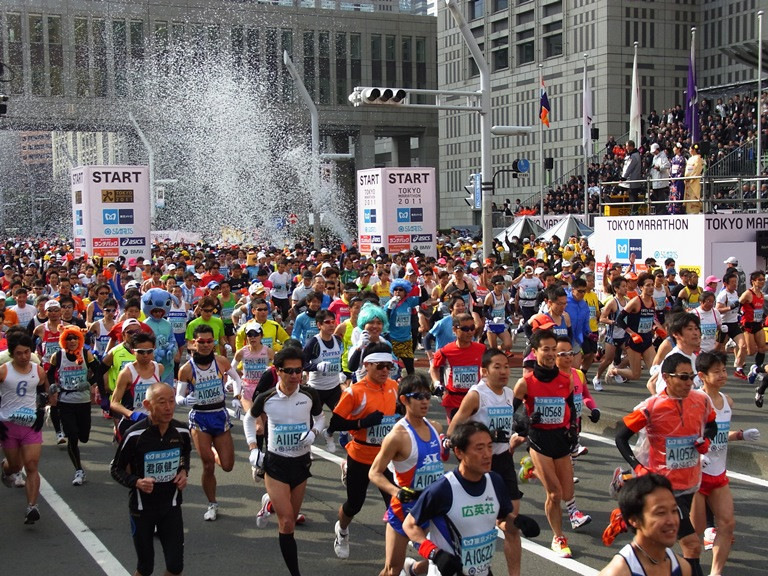
The current state of emergency in Tokyo runs through Sept. 12, but as it is expected to be extended 2~3 weeks it will still be in force on the 17th. This makes the chances that the Tokyo Marathon will go ahead virtually non-existent.
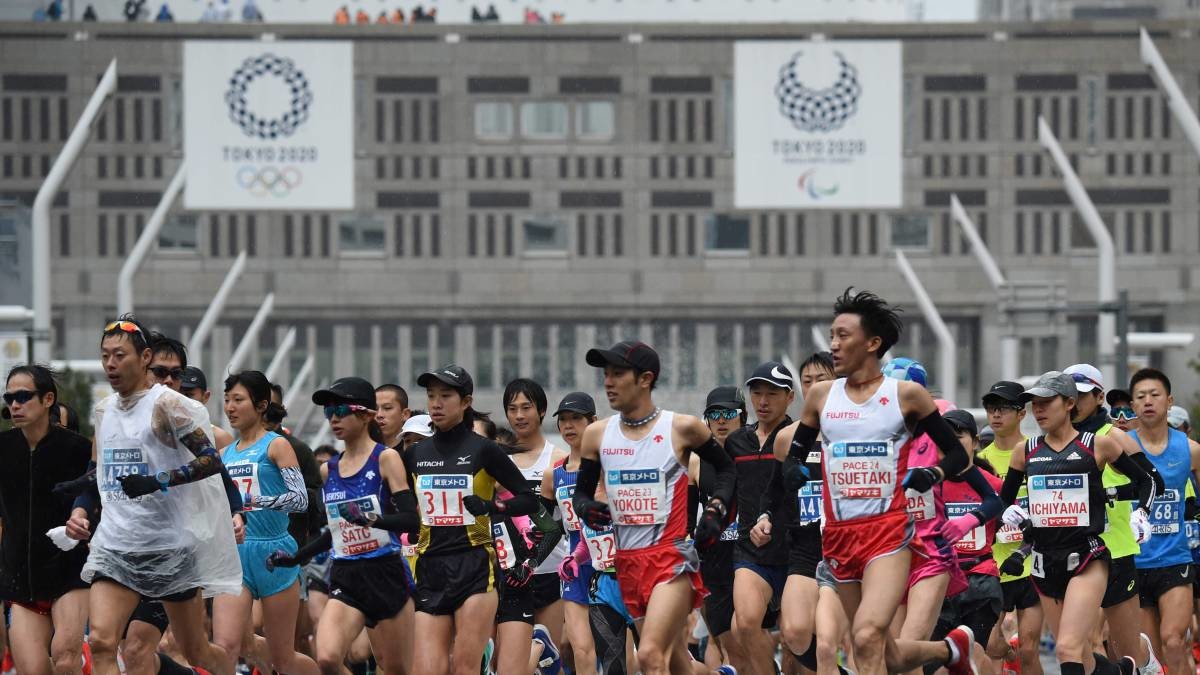
The event's organizers, the Tokyo Marathon Foundation, plan to hold a board meeting in mid-September to make a final decision.
The 2021 Tokyo Marathon was originally scheduled for Mar. 7, but in October last year in light of pandemic conditions the Foundation's board decided to postpone it to Oct. 17 this year.
In June this year event organizers announced that general division runners living outside Japan would not be permitted to run. The 2022 Tokyo Marathon is scheduled for Mar. 6.
(09/07/2021) ⚡AMPby Brett Larner
Tokyo Marathon
The Tokyo Marathon is an annual marathon sporting event in Tokyo, the capital of Japan. It is an IAAF Gold Label marathon and one of the six World Marathon Majors. Sponsored by Tokyo Metro, the Tokyo Marathon is an annual event in Tokyo, the capital of Japan. It is an IAAF Gold Label marathon and one of the six World...
more...Usain Bolt turned musician released his first album, Country Yutes, on September third
After Usain Bolt retired from track and field, fans everywhere wondered what the eight-time Olympic gold medalist would do next. Would he coach? Become a professional soccer player? Ride off into the sunset and enjoy retirement? Instead, he did what few people expected: he turned his focus to music.
Last Friday Bolt finally released his debut album, Country Yutes, giving his fans a chance to hear what he’s been up to over the last few years.
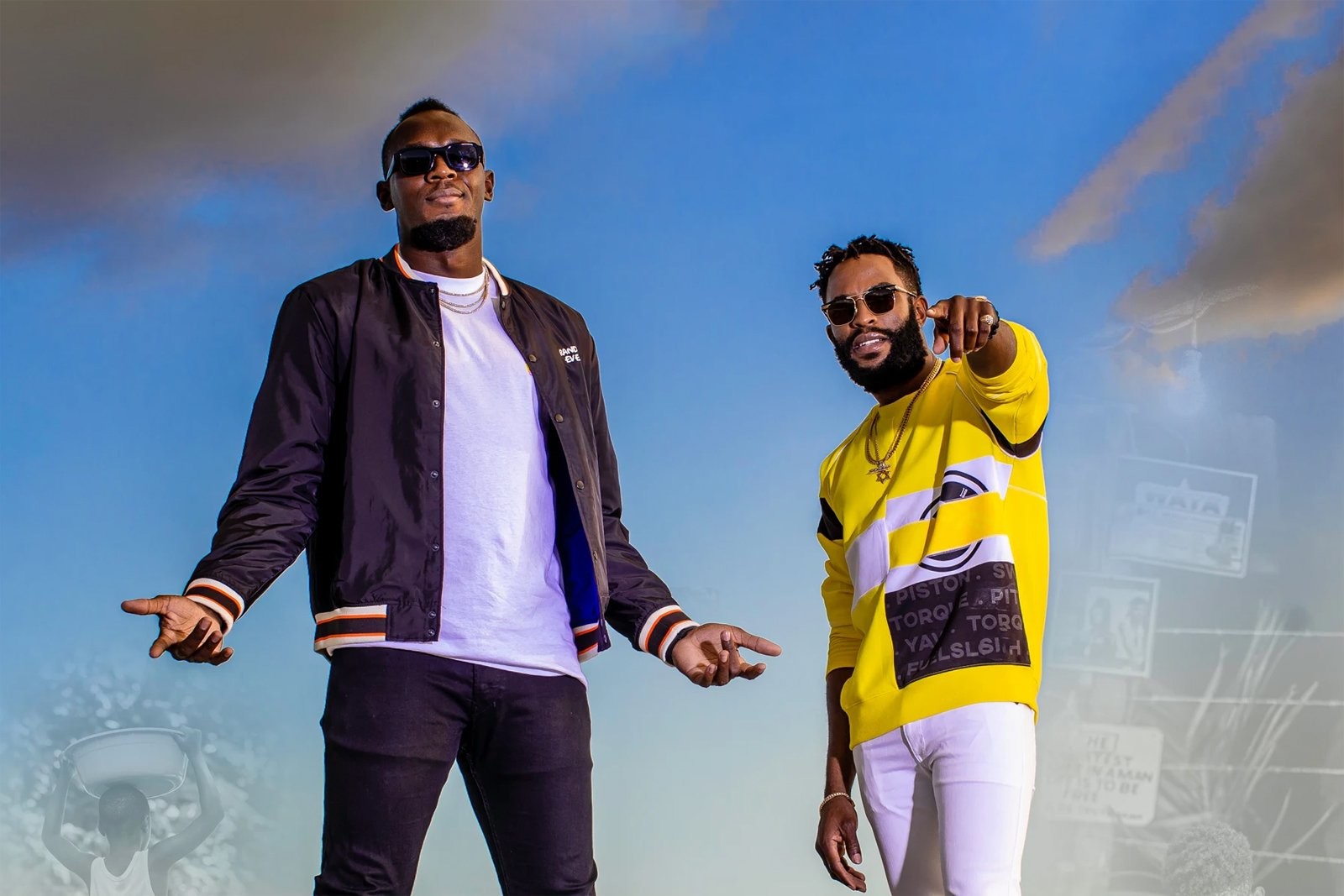
“If you have followed my career over the years, you would see me always dancing and listening to music,” Bolt said in a press release. “It’s no secret to the world that I love music. Music has just always been a part of my DNA.”

This is not the first time we’ve gotten a taste of Usain Bolt the musician. You may remember in 2019 he produced three dancehall EPs, Olympe Rosé Riddim, Immortal Riddim and Clockwork Riddim, which featured Jamaican artists. The first song on his new album, Living the Dream, which he produced with his close friend and vocalist, NJ Walker, was released earlier this year.
The rest of the album includes 14 tracks that feature Walker, along with Jamaican artists. You can stream Country Yutes on most streaming platforms, including Spotify and Apple Music.
(09/07/2021) ⚡AMPby Brittany Hambleton
Hiwot Gebrekidan and Kenenisa Bekele will lead powerful Ethiopian Challenge in Berlin
The BMW BERLIN-MARATHON will get underway on Sunday, September 26 with high quality elite fields headed by the Ethiopian superstar Kenenisa Bekele on his fourth appearance in Germany’s biggest and most spectacular marathon, while his compatriot Hiwot Gebrekidan will run in Berlin’s women’s field for the first time. Gebrekidan is currently the fastest female marathon runner in the world this year. The BMW BERLIN-MARATHON is part of the Abbott World Marathon Majors and a Platinum Label Road Race, awarded by World Athletics, the international governing body of athletics.
Kenenisa Bekele is 39 now and will be running the BMW BERLIN-MARATHON for the fourth time. He won the race in 2016 but dropped out the next year and returned in 2019 to triumph once again. In both victories the Ethiopian missed the then world record by a matter of seconds.
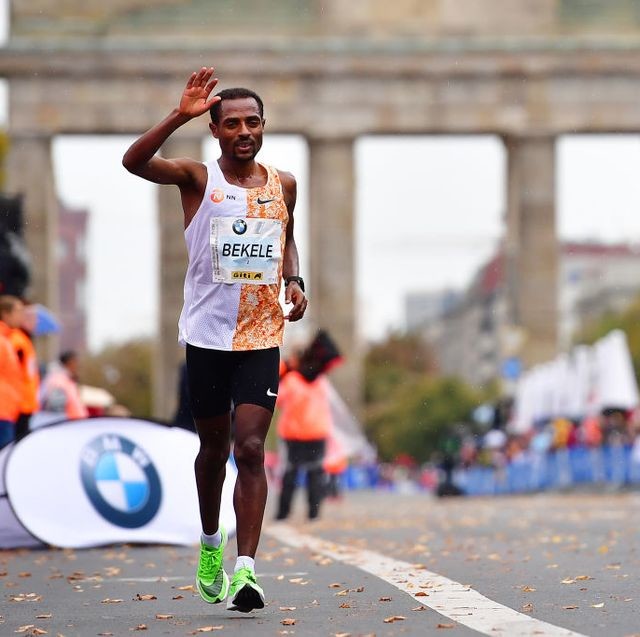
In terms of his achievements on the track and cross country, Kenenisa Bekele is the greatest long distance runner of all time. The multiple world record holder won the 5,000m at the 2008 Olympic Games as well as at the 2009 World Championships, took the 10,000m title at the Olympics in 2004 and 2008 as well as at the World Championships in 2003, 2005, 2007 and 2009. In addition, he has won eleven gold medals at the World Cross Country Championships.
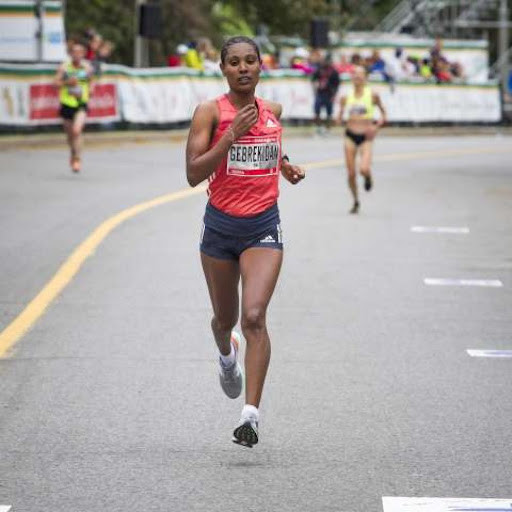
At the same time, Kenenisa Bekele’s marathon career has been by no means a smooth one. He has failed to finish three of his six races at the classic distance, including an attempt on the world record in Dubai in 2017 and Berlin later in the same year.
Yet on two occasions Kenenisa Bekele was able to convert his enormous potential to the marathon though there was still an element of disappointment attached, since he missed breaking the world record by a handful of seconds each time. In 2016 in Berlin he went within six seconds of the then global best, improving his own best to 2:03:03. Two years ago Bekele won again, this time running 2:01:41, two seconds outside the world record which his Kenyan rival Eliud Kipchoge had improved to 2:01:39 in the meantime. This achievement in 2019 means the Ethiopian is the second fastest marathon runner in history. It may well be that the BMW BERLIN-MARATHON on September 26 is his last chance to break the world record at the distance. “I’m looking forward to the race in the BMW BERLIN-MARATHON and all my training has been with this in mind. It’s gone well. I am doing everything to make sure my preparation is perfect,” said Kenenisa Bekele.
Ethiopia’s superstar will face two strong compatriots among his rivals. Guye Adola made an outstanding marathon debut in 2017 beside the River Spree with second place in 2:03:46. His time was record for a marathon debutant and Adola even put the eventual winner, Eliud Kipchoge, under pressure, leading the great Kenyan until shortly before 40 kilometres. Another Ethiopian who surprised many on his marathon debut is Olika Adugna. He will be running in Berlin on September 26 with a best of 2:06:15 from winning debut in Dubai in 2020.
The women’s field includes the fastest marathoner in the world this year, Ethiopia’s Hiwot Gebrekidan, who won the Milan Marathon in a personal best of 2:19:35 in April. Purity Rionoripo of Kenya (pb 2:20:39) and the Ethiopian Shure Demise (pb 2:20:59) should also be relied upon to offer strong challenges.
More information is available online at: Berlin-Marathon.com.
(09/07/2021) ⚡AMPBMW Berlin Marathon
The story of the BERLIN-MARATHON is a story of the development of road running. When the first BERLIN-MARATHON was started on 13th October 1974 on a minor road next to the stadium of the organisers‘ club SC Charlottenburg Berlin 286 athletes had entered. The first winners were runners from Berlin: Günter Hallas (2:44:53), who still runs the BERLIN-MARATHON today, and...
more...The Fargo Marathon ready to make return in late September
While last year's Fargo Marathon took place virtually, this year's iteration will make a return to in-person running.
Though the marathon usually takes place in May, it will start at 7:30 a.m., Saturday September 25th this year.
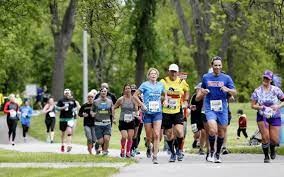
"Last year was virtual for obvious reasons. In a normal year, when we have our event in May, you know, we're typically around 15,000 people. This year, we're going to be down probably around 10," said Mark Knutson, executive director of the Fargo Marathon.
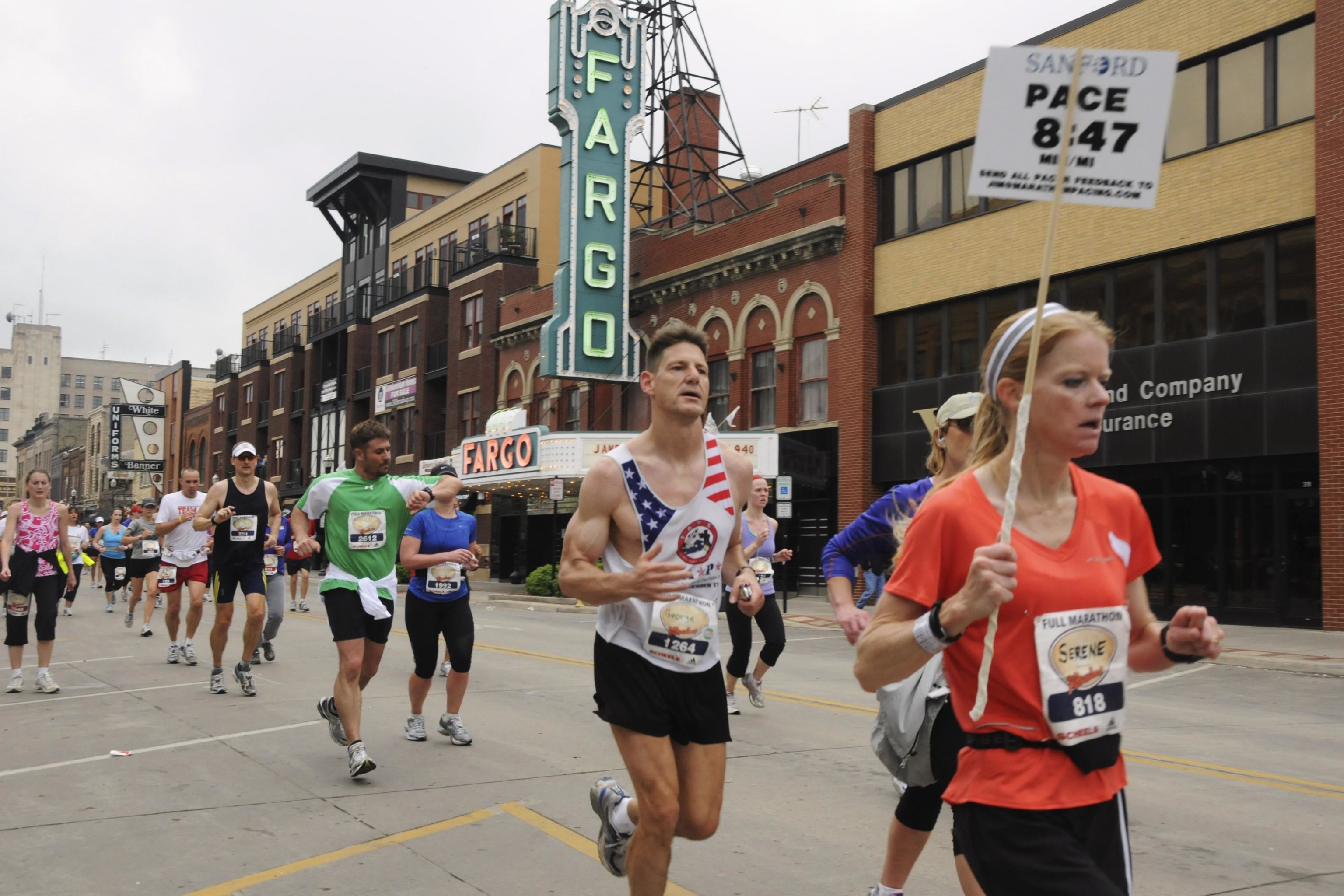
Knutson owed the dip in expected participants to it being held later in the year and the still-present pandemic.
However, he said, it will be great for the community to have it back.
"I think the community's pretty, pretty stoked about it. We send letters out to the people that live on the course and we have bands out there and we have parties and the buzz around town is that people are really excited to have this happening again," said Knutson.
Those still interested in signing up for the marathon can do so by visiting fargomarathon.com/schedule/.
(09/07/2021) ⚡AMPby Ben Morris
Fargo Marathon
The Fargo Marathon is a week full of events, The Fargo Marathon is bound to have something for everyone. From the Cyclothon, Furgo Dog Run, Largest Kid's Race, 5K Walk/Run, 10K, Half Marathon, Full Marathon and Relays, there is a distance for all! Start and Finish inside the Fargo Dome - ...
more...How To Avoid Stomach Cramps When Running
There is nothing worse than a rumbling stomach while you are out on a run. Whether you have a side stitch (side cramps) or feel the need to rush to the nearest porta-potty, stomach issues can really cramp your running style. Learn how to avoid stomach cramps when running with these tips.
Warm Up
A cramp in your side (side stitch) is—just like it sounds—a severe pain in your side body. It typically occurs right below the rib cage. It is not actually related to your stomach or digestive system. While the exact cause of side stitches is unknown, some theories suggest that it could be related to blood flow to the liver, spasms in the diaphragm, or stretching of the ligaments.
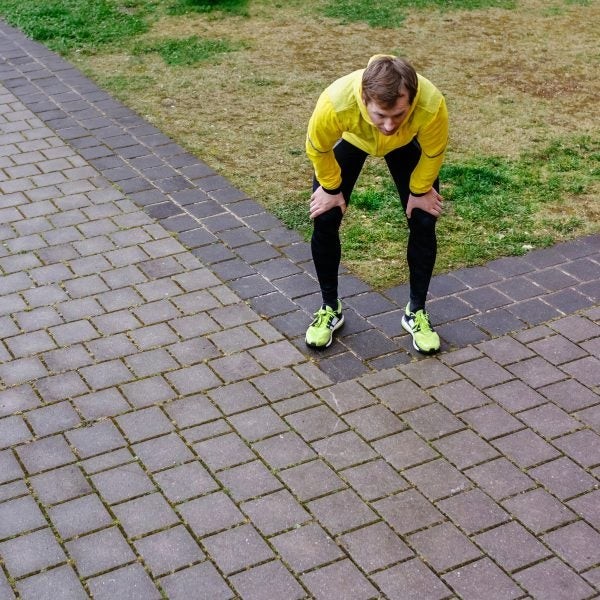
To prevent side stitches, warm up properly. This gives your body time to accommodate to faster breathing and adjust to stretching ligaments.
Hydrate

Do you skip drinking fluids during a run because you worry they will cause sloshing and cramping? It is time to adjust your strategy. This can lead to dehydration, which actually exacerbates stomach issues.
When you are exercising at an intense level, your body diverts blood away from the stomach in order to supply your muscles with much needed oxygenated blood. This means that digestion can be negatively affected.
Drink adequate fluids in the days leading up to your training session or race, and remember to drink throughout your run.
Practice Fueling
When you train for a long-distance race, you put in hours of running each week to gradually build your muscular and cardiorespiratory endurance. However, just like training your legs for those long runs, you also need to train your gut.
Often, newer athletes skip fueling during training but attempt to use a sports drink or gel during their first long race. The result? Stomach cramps, thanks to a belly that has never practiced processing fuel under such circumstances.
Luckily, the fix for this is easy. Simply practice your fueling strategy during training.
This will help teach your stomach how to process fuel under conditions of decreased digestive blood flow along with the jostling motion of running.
Do Not Over-Fuel
It can be tricky to nail down the correct amount of fuel to take in during a long run. But one thing is certain: trying to replace every calorie you burn is a recipe for disaster. Instead, aim to take in around 30 to 60 grams of carbohydrates (about 120 to 240 calories) per hour on runs lasting longer than one hour and 15 minutes.
If you are training for a long-course triathlon or ultra-marathon, you might bump that range up to 30 to 90 grams of carbohydrates per hour. As you start experimenting with fueling, start at the lower end of this range. If you feel like you need more energy, you can gradually work your way up to the higher end of the range on subsequent runs and see how your stomach tolerates this.
Minimize Fat
Fat is a satiating nutrient. It slows down digestion and helps us feel full longer. While this is great for everyday life, it is not ideal before a training session. You do not want to start running with a belly that is still feeling full and risk cramping. Low-fat, low-fiber breakfast ideas include:
Cereal with milk and a banana
Toaster waffle topped with peaches
Bagel with a small amount of cream cheese
Rice with a poached egg
Sandwich with a small amount of peanut butter, banana, and honey
The exception to this tip is if you are a fat-adapted athlete who is practicing the keto diet. In that case, you should follow your normal routine, as foods outside of that could cause stomach cramping. For most athletes, however, a standard moderate carbohydrate diet will lead to the best performance.
Know Your Lactose Tolerance
Lactose is sugar that is found in dairy products. Some people lack enough of the digestive enzyme known as lactase to properly break down this sugar. This is what is commonly known as lactose intolerance. If you have this condition, eating certain amounts of dairy can cause stomach cramping and diarrhea.
Interestingly, you can develop lactose intolerance later in life, even if you previously were able to tolerate dairy. Lactase production decreases over time for certain people based on genetic factors. For others, a gastrointestinal infection or inflammatory bowel disease may cause secondary lactose intolerance.
Digest Before Running
Most experts recommend eating a meal about one to four hours prior to running, though this is very individualized. Some runners have iron stomachs that allow them to eat a burger 30 minutes before a jog, while others might need two hours to process a small sandwich and some fruit.
If you often experience stomach cramps when running, try eating about three to four hours prior to your training session or event. Allowing more time between eating and running gives you more flexibility for the type and amount of food you can eat, as your body has ample time to digest.
Avoid NSAIDs
Ibuprofen and naproxen are NSAIDs (non-steroidal anti-inflammatory drugs). While some athletes might take these medications prior to or during a run to stave off any muscle soreness, this practice increases the risk of stomach upset and cramping.
In addition, overusing NSAIDs on long runs has been shown to increase the risk of hyponatremia (a dangerous diluting of blood sodium levels) and kidney damage, and could impair muscle recovery. It is wise to avoid these medications before or during a run unless a doctor has advised you to take them.
Rule Out Medical Conditions
In some cases, stomach cramps could indicate a food sensitivity or intolerance, irritable bowel syndrome, celiac disease, or another digestive complication. It is best to consult with a healthcare professional.
(09/06/2021) ⚡AMPby VeryWell Fit
Ethiopians Betesfa Getahun and Gelete Burka will be the fastest athletes on the start list for the Vienna City Marathon next Sunday
Strong Ethiopians will feature world-class personal bests of 2:05:28 and 2:20:45 respectively.
The 38th edition of Austria’s biggest road running event is the first major international marathon featuring a strong international elite field and a mass race since the start of the Corona pandemic. Including races at shorter distances a total of 25,000 athletes have registered for the event. 6,000 of them will run the marathon. The Vienna City Marathon is a World Athletics Marathon Label Road Race.

Betesfa Getahun heads the elite start list which includes ten runners who have personal bests of sub 2:10. The Ethiopian ran 2:05:28 in his debut marathon in Amsterdam two years ago. Returning to the Vienna City Marathon will be Switzerland’s record holder Tadesse Abraham, who was the runner-up here in 2019 with 2:07:24.
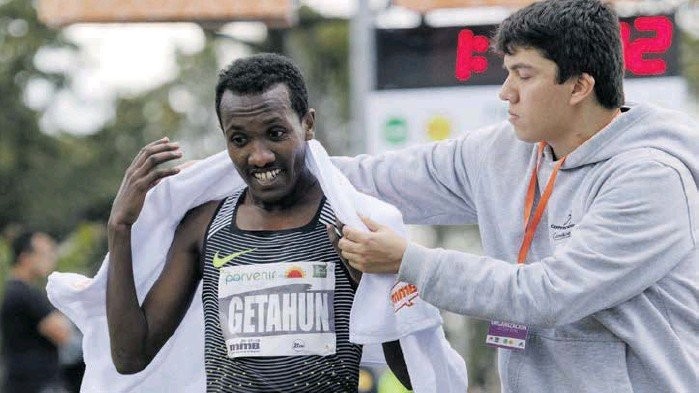
With a personal best of 2:06:40 Tadesse Abraham is among the fastest European marathon runners. Due to breathing problems he dropped out of the Olympic marathon in Sapporo (Japan) a month ago. While this was of course a major disappointment he then quickly decided to go for the Vienna City Marathon. “I am in form and I want to show it. I am really looking forward to Vienna as I have such great memories of this race,” he said.
The women’s field includes six runners with personal bests of sub 2:28. Gelete Burka is the fastest on the start list with 2:20:45. She achieved this time in Dubai in 2018 and then won the marathons in Ottawa (2018) and in Paris (2019). The women’s race will also feature the Swiss marathon record holder: Fabienne Schlumpf ran 2:26:14 in her debut in Bern earlier this year and then finished in a very strong 12th position at the Olympic marathon.
(09/06/2021) ⚡AMPby AIMS
Vienna City Marathon
More than 41,000 runners from over 110 nations take part in the Vienna City Marathon, cheered on by hundreds of thousands of spectators. From the start at UN City to the magnificent finish on the Heldenplatz, the excitement will never miss a beat. In recent years the Vienna City Marathon has succeeded in creating a unique position as a marathon...
more...Letsile Tebogo and Udodi Onwuzurike set the pace for Africa’s new generation of sprinters
Letsile Tebogo, Udodi Onwuzurike, Christine Mboma, Anthony Pasela, Imaobong Nse Uko and Benjamin Richardson are just some of Africa’s rising sprint stars, and their achievements this season could signal a revival for the continent.
When Tebogo opted to compete in the 100m and 200m, despite hailing from a country best known for its quarter-milers, it was with the aim of breaking barriers and inspiring a change in Botswana.
But the 18-year-old surpassed even his own expectations in Nairobi when he gifted his country its first ever global gold medal in the 100m, setting national U20 records of 10.22 and 10.11 in the process. His 10.11 clocking actually broke the senior national record, surpassing Makwala’s former mark of 10.20 set seven years ago.
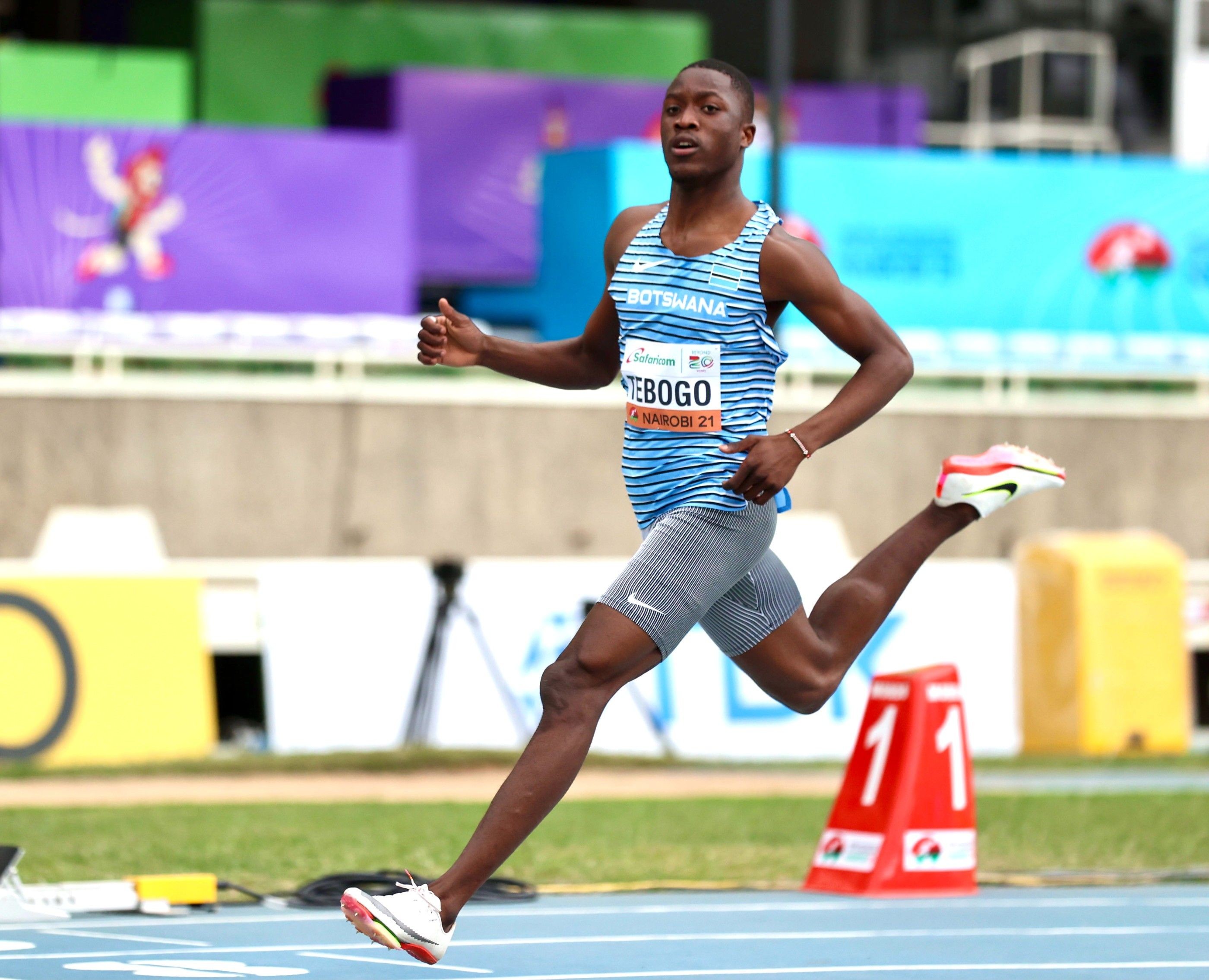
“The motivation to get into athletics was from watching the big guys like Isaac Makwala, Karabo Sibanda and Nijel Amos,” said Tebogo. “However, I just really wanted some change in the country, so I had to do something different from the big guys, that’s why I opted to compete in the 100m and 200m. I’m really proud of my performance and I know back at home they’re proud of me bringing the first gold medal to Botswana.”
Tebogo led a 1-2 for Africa as Benjamin Richardson of South Africa took silver in 10.28 while Cuba’s Shainer Rengifo earned bronze with 10.32.
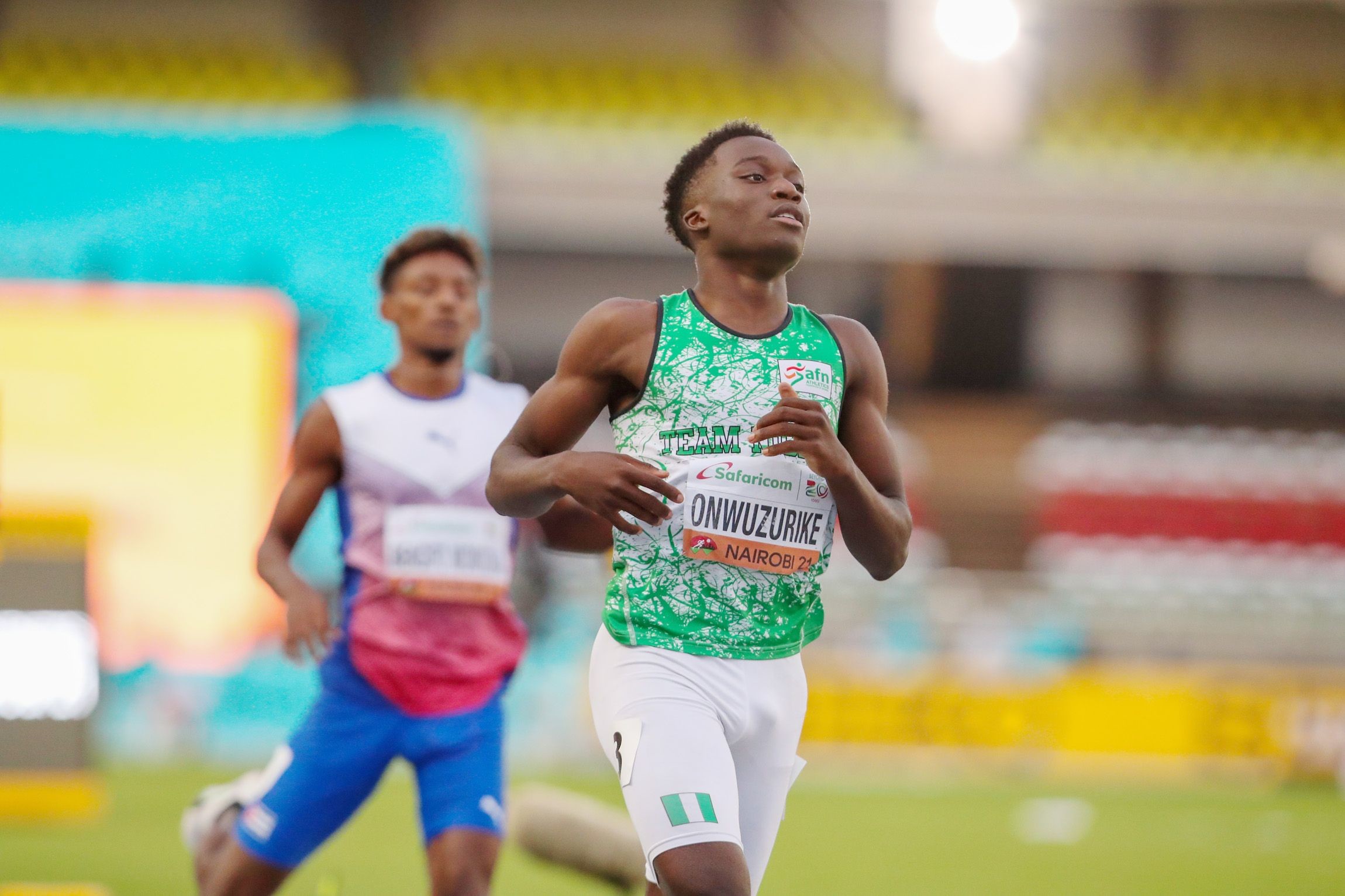
For Richardson, who would go on to anchor his country to Africa’s first ever gold in the men’s 4x100m in a world U20 record of 38.51, the podium finishes by Botswana and South Africa in the men’s 100m is the start of something big for the continent.
“We’ve started to become better,” he says. “Two Africans finishing first and second; you can see that there’s something coming. We’re going to dominate soon.”
Tebogo also competed in the 200m, which had been regarded as his stronger event. A sprint double was not to be, though, as he eventually took silver behind Nigeria’s Udodi Onwuzurike, who didn’t appear as a likely medal contender in the build-up to the championship.
Onwuzurike also started in track and field when he was about eight years old, and he grew up watching his brother Chiebuka, who is older by almost six years, compete in the 100m and 200m. The older Onwuzurike went as far as competing for Boston University and holds personal bests of 10.46 and 21.37. For the younger Onwuzurike, the dream was to take things a notch higher: become an NCAA champion, an Olympic champion and a world champion. And so began his quest.
At the World U20 Championships in Nairobi, Onwuzurike’s first ever outing for Nigeria, he lowered his personal best from 20.78 to 20.47 in his heat, and then clocked 20.13 in the semifinals which would have been a championship record but for the wind (2.4m/s).
He then stormed to gold with a national U20 record of 20.21 to become the first Nigerian in World U20 Championships history to win 200m gold since 1996 when Francis Obikwelu won the sprint double, and the second fastest Nigerian over the distance in 2021. South Africa’s Sinesipho Dambile clocked a season’s best of 20.48 for bronze, completing the African sweep.
Though stung by his loss to Onwuzurike, Tebogo said that the overall 200m result was a good one for Africa. “I’m really proud and excited about this,” he said. “It (an African sweep) was my dream. Even in the call room I told Dambile ‘Bro we have to do this. We have to bring the medals back home’. I felt it should be a 1-2 or 2-3, but maybe the Nigerian overheard us and that’s why he came to beat us,” he added with a chuckle.
For Onwuzurike, who is off to Stanford University soon, making history for Nigeria and Africa is a dream come true.
“I would say it’s surreal, it’s amazing,” he said. “I never thought I would be able to make it to this level of track, I never even knew I would be able to go to college running track. Track was always first like a fun sport because I’ve always been a little quick but it’s amazing. Having this as one of my last high school races before I go to college, it’s an amazing moment.
“I had a very rough year and got injured numerous times and felt my numbers were not really good at showing what I’m capable of, so coming out and being able to show on the global stage that I’m truly the best is amazing. It’s all I ever wanted, all I ever prayed for.”
(09/06/2021) ⚡AMPby World Athletics
Fraser-Pryce wins women's 100m at Kamila Skolimowska Memorial in meeting record 10.81 with De Grasse cruising home in the men's 200m
Shelly-Ann Fraser Pryce and Andre De Grasse scored comfortable wins at the Kamila Skolimowska Memorial meet in Chorzow, Poland on Sunday (September 5).
Fraser-Pryce, who missed the last Diamond League women's 100m in Paris at the end of August after withdrawing with fatigue, looked back on form at the World Continental Gold event as she set a meeting record of 10.81 to take the 100m, breaking 11 seconds for the 12th time this season.
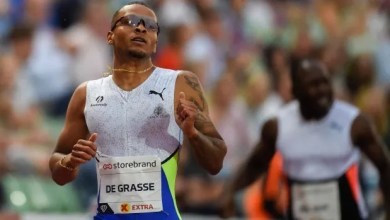
Swiss sprinter Mujinga Kambundji was second in 11.08 ahead of Britain's Daryll Neita who ran 11.15.
The 34-year-old looks set for an exciting rematch with Olympic champion Elaine Thompson-Herah in the Zurich Diamond League Final on Thursday.
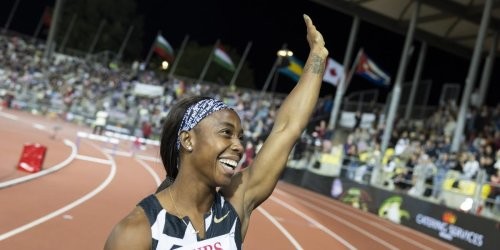
Tokyo 2020 200m gold medalist De Grasse was an easy winner of the half-lap event, coming off the bend strongly to cross the line in front in 20.21.
Fellow Canadian Jerome Blake was second in 20.32 with Italy's sprint relay hero Filippo Tortu third in 20.40.
As befits the competition held in memory of the Sydney 2000 hammer gold medallist, field events played a big part in the Continental Tour Gold meeting.
The top three in the men's hammer in Tokyo filled the top three places in Chorzow but in different places.
Reigning four-time hammer world champion Pawel Fajdek won home bragging rights with a fine final throw to beat Wojciech Nowicki.
The Olympic gold medallist led with 77.45m, but Fajdek went out to 79.60m to take victory after his bronze in Japan.
Norway's Eivind Henriksen (77.38m) was third after his Tokyo silver.
Double Olympic champion Ryan Crouser took his unbeaten run to 25 contests with victory in the shot put.
The American was not at his brilliant best but 22.39m in round two was enough to take victory with compatriot Joe Kovacs (22.00m) and New Zealand's Tom Walsh (21.68m) second and third just as they were in Tokyo.
World record holder Crouser suffered his last defeat at the 2019 Doha World Championships.
Olympic silver medallist Chris Nilsen kept up his strong recent form with 5.86m to take victory in the men's pole vault.
Fellow American KC Lightfoot took second on countback ahead of EJ Obiena of the Philippines with both men clearing 5.80m.
Reigning world champion Sam Kendricks was only sixth with a best clearance of 5.70m.
Gianmarco Tamberi won the high jump with a third-time success at 2.30m.
The Italian then failed with two attempts at 2.36m which would have broken the meet record held by joint-Olympic gold medallist Mutaz Essa Barshim.
(09/06/2021) ⚡AMP10 Of The Worst Training Tips You Hear In Running
Bad Tip One: Your body needs to look a certain way or weigh a certain amount.Being an athlete is all about finding your strong. Every runner that has long-term growth and success fuels their body adequately. For some athletes, that leads to complying with that formula espoused by Mr. Crap-Face. For other athletes, it means a body that looks different and weighs more or less. All are equally valid. And here's the biggest point of all: all are optimizing what they are capable of given their unique genetics and backgrounds.
The problem is that a formula might be interpolated from an outlier, a person that won an Olympic medal or Western States. Interpolating from outliers is crap science, and it's crap physiology. Athletes that try to fight against their unique genetics and backgrounds will not adapt to training stimuli efficiently, and will almost always get slower with time. That time might not be tomorrow, but trying to fit into someone else's clothes or onto their scale is a ticking time bomb for athletic growth.
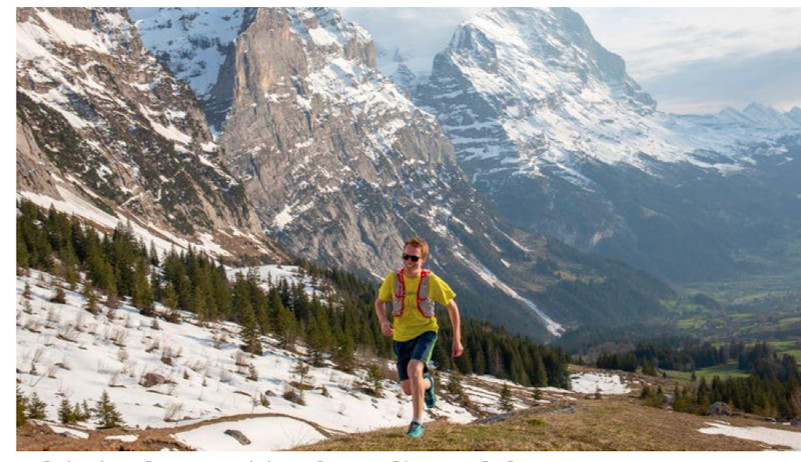
Three years ago, the New Zealand rowing team had a reckoning. A survey indicated that all but one athlete was at risk of low energy availability. Doctors, nutritionists, and coaches worked with athletes to change the culture and approach to fueling. Rower Brooke Donoghue summarized the wisdom that they applied leading up to the Olympics: "Now I understand being lean isn't a priority, being strong is," she said. "It doesn't matter what I sit at on the scales. It's opened us up to understand it's not about a number but more about a good feeling, knowing we're fuelling well."
In Tokyo, Donoghue won a silver medal, and the whole team had breakthrough successes. Low energy availability from a focus on body weight can hurt the endocrine system and overall health. The New Zealand rowing team learned something else. Eating enough can fuel better performance, recovery, and adaptation. Food can act as a natural, legal, fun PED.
Move, eat, love, repeat. You found your strong. And your strong is perfect.
Bad Tip Two: Easy runs need to be at a certain heart rate all the time.
The body does not work in cordoned-off physiological zones, where exceeding aerobic threshold is a crime scene for athletic growth. When you feel good, your easy runs can be a bit faster. When you feel tired or are not recovering rapidly, your easy runs can put snails to shame. The art and science of easy running require that an athlete listens to their body, not to a calculator.
This tip is grounded in the truth that easy runs can be very easy, and often should be very easy. The aerobic system should be built from the ground up. Just make sure that focusing on the aerobic system doesn't neglect the musculoskeletal, biomechanical, and neuromuscular systems. You have to go faster to get faster, in moderation.
Bad Tip Three: To be a pro, you have to do doubles/100 miles a week/complicated workouts
This is the general catch-all heading for tips that you might hear from an elite athlete talking about their own training. The problem is that all of these tips are overwhelmed by confounding variables, and sometimes people get the lines of causation mixed up. Doubles are an important feature of some pro athlete training, but also coincide with athletes that have the time and physiology to handle them. High-volume weeks can be a proxy variable for stress and adaptation, but the cells don't give a single frick about a week, and only care about a mile in association with the chemical context that goes along with it (we went into detail on our podcast here). Big double-threshold workouts or supercompensation hill sessions could help growth, but are also just a part of training for athletes that are tough as nails and have big dreams.
Successful athletes can likely be successful using multiple approaches, but we can't prove a negative. So we are left adding up a bunch of N=1 experiments. Don't feel obligated to mimic the specific approach that works for someone else. General principles are your friend (doubles/100-mile weeks = consistent and frequent chronic stress, workout design = efficient and strategic acute stress). Specific rules can just be dogma.
Bad Tip Four: It's all about time on feet.
This tip is mostly for the ultra crowd. Time on feet may be helpful if it involves moving efficiently on trails, including hiking, with plenty of time for recovery and adaptation. But there is no evidence and little physiological theory that chronic weekly totals of dozens of hours on feet will help an athlete move more efficiently (or be healthier). While that stuff may work for some people, you can be fast and healthy by spending time in the morning doing your activity, then living your life normally (periodically mixing in some bigger acute stresses along the way), even when training for races that take 12-24+ hours.
Bad Tip Five: The more training volume and/or vert, the better.
Connected to the last two points, volume and vert totals are proxy variables for stress. But they are not actual stress as experienced by the cells and body systems that drive performance. A 10-mile run might just be a 10-mile run. Or it might act a bit like a 20-mile run if you've been up all night with a kid, are dealing with a mental health lull, or are preparing a work presentation. One of the hardests things to internalize for an athlete is that the body can actually adapt to the lower volume just as well as higher volume as long as stress is calibrated appropriately for their unique context.
The body doesn't know miles, it knows stress. And more stress is not always better, particularly when some champions are specifically chosen due to being genetic anomalies when it comes to managing chronic training stress.
Bad Tip Six: You should hike a hill in training if you'd hike it in racing
Specificity is important sometimes, just don't go overboard with it. I see so many athletes sell themselves short by hiking every uphill because they read that tip in an ultra running article, or heard it from a friend. The problem is that it's very hard to level up if your brain is constraining you in advance of your body saying it needs constraints.
If you hike all of the time, that is awesome and valid. But if you are healthy enough to run, try to run a couple steps more on your next run. It can be so freaking exciting to see where this athletic journey goes when we take off the constraints that were holding us back.
Bad Tip Seven: You can always get all of the nutrition you need from food and sunlight
Maybe you can! But through coaching and research, my wife/co-coach Megan and I see a lot of bloodwork, and there are many athletes that can't. Pay special attention to ferritin and vitamin D. Sometimes, leafy greens and UV rays don't cut it, and that's OK. If you're unsure, get blood tests from your doctor or a company like Inside Tracker.
Bad Tip Eight: You can't lose fitness in a taper
True, your aerobic system won't undergo a fundamental remodeling in a couple weeks. But blood volume, VO2 max, cardiac output, and neuromuscular efficiency all can detrain rather quickly. It's important to rest more, but don't shut down like you're a bear in November. Most of our athletes maintain their normal frequency at 30-50% lower training volume, with a rest day or two more for ultras, plus a bit of intensity too.
Bonus Tip: Minimal shoes are better for health and/or performance
I don't think people say this piece of advice anymore, but it's worth addressing just in case someone went into a coma after reading Born To Run. First, to that coma person, did you like The Apprentice? You won't now.
Second, for the love of all that is good in this world, wear shoes that are comfortable for you, not shoes that are comfortable for someone who may or may not have a functioning achilles tendon in a few years. Different things work for everyone.
Bad Tip Nine: Death before DNF
Running is not a test, it's a celebration.
As Dani Rojas said in Ted Lasso, "[The sports psychologist] helped me remember that even though futbol is life, futbol is also death. And that futbol is futbol too. But mostly that futbol is life!"
(09/05/2021) ⚡AMPThis Lithuanian Runner Broke the 24-Hour World Record that Stood Since 1997
The Lithuanian runner averaged a 7:29/mile pace for a full day.
Sania Sorokin has claimed another world best in 2021, breaking the 24-hour record set by legendary Greek ultrarunner Yiannis Kouros in 1997.

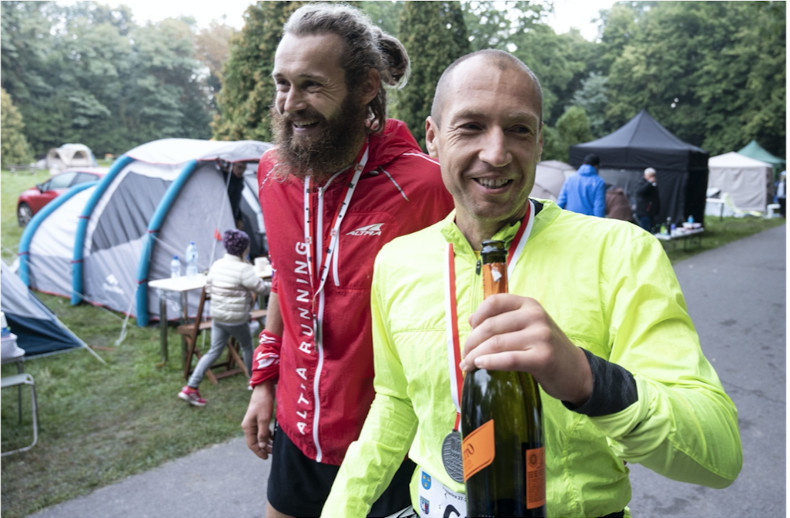
Kouros’s mark (303.4 kilometers or 188.52 miles for a 7:38/mile pace) remained elusive until August 30, when Sorokin lined up at the UltraPark Weekend 24-hour race in Poland. The 39-year-old Lithuanian runner averaged a 7:29-per-mile pace for the entire day on his way into the history books. His official distance was marked at 309.4 kilometers (192.25 miles).
“[The world record] was my dream for about five years,” Sorokin told Runner’s World. “It was an almost perfect race, but I know I can do better.”
Though unsponsored, Sorokin is no stranger to high-level performances such as this. His accolades include three 24-hour world championships since 2015, winning the famed Spartathlon ultra in 2017, and breaking the 100-mile and 12-hour world records in April this year.
His initial plan after his April success was to go for the 24-hour world record at the 2021 World Championships in October. However, the race was canceled in June due to the pandemic, so Sorokin chose the UltraPark Weekend 24-hour race in nearby Poland to go for his record attempt.
“Poland is not far from me,” Sorokin said. “This is a very high standard race, Poland has very strong ultrarunners, and the track is very good. I thought it was good to go for the 24-hour world record.”
In preparation for a record run, Sorokin increased his mileage for this training block. His weeks ranged from 142 miles at their lowest to 173 at his peak. He included speed work, while also doing cross-training, such as weightlifting, cycling, and swimming.
Sorokin lost his job as a dealer at a casino in January because of the pandemic, so he’s had more time to “train like a pro.” He credits this for his success and why he showed up in peak form to his record run.
Though he was on pace for the entire run, he did run into issues during the night.
“The conditions, the weather, the track, the organization, everything was perfect,” Sorokin said. “There was some crisis at night with my stomach. It stopped working well for a few hours, but then began to work again, and I really didn’t know if the record was to be or not to be until 21 hours of running.”
In those final three hours, Sorokin routinely crunched the numbers in his head. Finally, with 40 minutes remaining, he reached the 300-kilometer mark. Two more laps would give him the record. He did that and then some, breaking the world record by six kilometers.
Since breaking the record, Sorokin returned to Lithuania and has been inundated with interview requests. He has a couple ideas for what he wants to do next, but he said his focus right now is finding a sponsor for 2022.
“I need to find a sponsorship for next year because soon I need to be back to work,” Sorokin said. “I am in peak form, so I feel like I can still do better. I don’t exactly know what’s next for me. Maybe the 48-hour record.”
That record currently stands at 473.49 kilometers (294.21 miles), or put simply, a 9:47/mile pace for two days straight. It was set in 1996 by Kouros.
(09/05/2021) ⚡AMPby Runner’s World
3 Ways You Can Overcome Bad Runs
How you can look on the bright side of a poor outing and find motivation to keep going.
It’s entirely too easy for people to criticize their own performance, and harder to be kind to themselves when they don’t have the race or run they’d hoped for. As the saying goes, we’re our own worst critics.
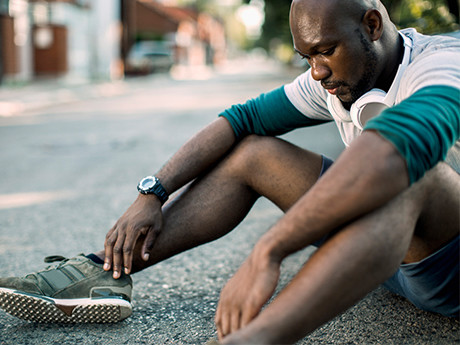
Even when we do well, we sometimes tell ourselves it wasn’t the training plan that we dedicated months of our lives to following; it was luck. As runners—and humans—it can be hard to believe we’re deserving of success. And when we have that “off” run, we often default, unfortunately, to beating ourselves up over the fact that we could have worked harder.
Over time, being too harsh on yourself can lead to lack of motivation, burnout, and even feeling resentful toward other runners. Here are three tips to help you become more compassionate with yourself, stay motivated, and ultimately be your own best teammate.
→ Use positive self-talk
Credit yourself with the work you put into your training and your successes along the way! Remind yourself whenever you’re feeling down: “I trained for weeks. I put in all this work and was consistent, and I’m stronger and faster than I was four months ago.” On race day, we tend to lose sight of the hours spent in training. While you’re getting dressed or warming up, visualize your larger body of work and the progress you’ve made—the actual event is just a small part of that.
You can also utilize technology, like your morning alarm, to engage in positive self-talk. I label my phone alarm for a morning long run with a motivational mini message that helps me start my day. The more you do this, the more natural it will become to believe these positive affirmations.
→ Reframe your thoughts
Let’s say you ran a “bad” race, but friends and family were cheering you on from the sidelines. Instead of dwelling on your results, try shifting your thinking to: “These people saw me push myself, and they couldn’t care less about my time.” I have a 1-year-old and a wife, and anytime I don’t reach the time I wanted, I think about how I have their support and that they’re cheering for me no matter what.
→ See a sports psychologist
If you find you can’t stop the cycle of self-criticism, you risk falling out of love with running—and yourself. Learning to grow a sense of joy not only will help you show up to your training runs, it can strip away the negative competitiveness and restore the fun that initially drew you to running.
Additionally, being overly self-critical can hurt your relationship with your running community. If you’re injured, you may look in a negative light at people who are running healthy. Or you might begin to resent those who reached a race goal when you didn’t. You can burn yourself out when you direct your energy toward running against people as opposed to with them.
When your running partners or coach aren’t enough to help you break these patterns and pick yourself back up, a sports psychologist can provide impartial feedback, with specific attention to your emotional and mental well-being, in ways someone who is close to you and your training might not be able to.
Practicing positive self-talk will help you become your own best teammate and put you on the path to being kind to yourself—and becoming a better runner along the way.
(09/05/2021) ⚡AMPCourtney Dauwalter Smashed the Women’s Record at UTMB and Knocked Over 2 Hours Off Her Previous Best
In her second appearance at the French race, she knocked over two hours off her previous best and placed 7th overall.
Courtney Dauwalter returned to the 106-mile Ultra-Trail du Mont-Blanc (UTMB) to defend her 2019 crown and did not disappoint in her second appearance in Chamonix, France.
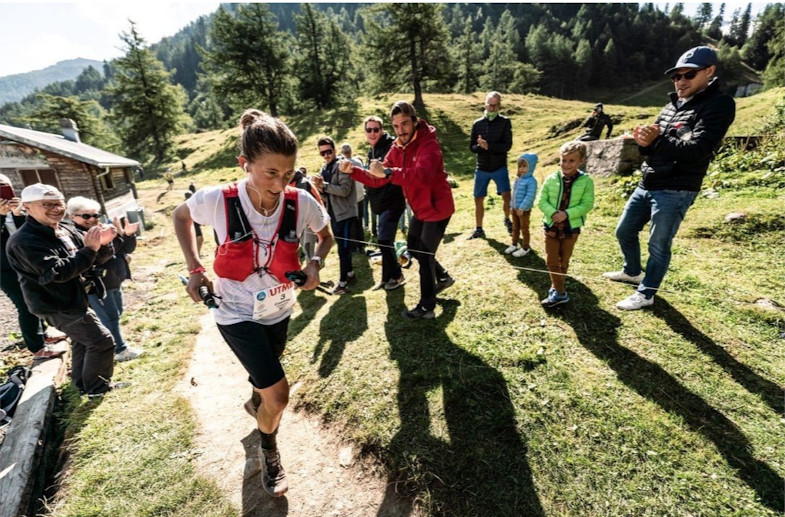
The 36-year-old from Golden, Colorado, led wire to wire in the women’s race, running into only a few minor issues along the way to set a new course record in 22:30:54 and finish seventh overall.
“It was an incredible experience again, and we were so excited to be back, immersed in that community,” Dauwalter told Runner’s World. “I didn’t know what to expect from the race, but I knew that I was lining up healthy and physically and mentally as ready as I could be.”
UTMB was a redemption race for Dauwalter, who was forced to drop out at mile 62 of the Hardrock 100 in July because of stomach issues.
Since then, Dauwalter said she has been tweaking her fueling strategy with her husband and crew chief, Kevin Schmidt. With solid foods causing issues at a certain point, she found that she should take in liquids only.
What happened at Hardrock turned out to be a blessing for her second time through the Alps. Similar problems arose around mile 50 at the Courmayeur aid station. Dauwalter was well ahead with only Mimmi Kotka of Sweden near her, but solid food wasn’t going down. Though she initially planned to switch to liquids only at mile 70, she and Schmidt opted to make the change earlier.
This meant Dauwalter relied on drinking a lot at aid stations and only fueling with the single liter she carried with her between aid stations.
“Climbing out of Courmayeur and coming to the top, I lost my lunch a little bit,” Dauwalter said. “But once it happened, it never happened again and I felt fine. I don’t know if my body was rejecting the fluids I put into it, but it ended up not being a big deal.”
Dauwalter then opened up a massive lead in the women’s race, picking off male competitors one by one. She said there were still low points in the latter part of the race—her legs felt shredded with each climb—but in those moments, she turned to her old friend, the iPod Shuffle.

“It literally has just the play button,” Dauwalter said. “It’s the best. Helps occupy my brain space with upbeat music. It basically has a playlist that started in 2010 and has just been added to since. So an eclectic mix of country music, Michael Jackson, Prince, some early 2010s pop and rap, and Taylor Swift.”
Dauwalter led the women’s race by over an hour as she made the final climb out of Vallorcine at mile 93 and descended back into Chamonix. Dauwalter found herself overjoyed upon seeing the mass of spectators welcoming her back into town.
As she ran through the streets and across the line, Dauwalter said she had no idea her time of 22:30:54 had set a new course record. Her time bested fellow American Rory Bosio, who set the previous record in 2013 (22:37:26) on a course that was three kilometers shorter.
“I feel very happy to have made the entire loop,” Dauwalter said. “After DNFing Hardrock, I wanted to finish UTMB no matter what it took. I’m grateful to my legs, my body, and Kevin and I were able to make the whole 100-mile adventure together. It’ll make for another great memory.”
Not only did Dauwalter make history with her time, she also finished seventh overall in the race. The rest of the women’s podium rounded out with French runner Camille Bruyas taking second (24:09:42) and Kotkas taking third (25:08:29). You can find the full results here.
“It’s a very cool time in the sport,” Dauwalter said. “There’s a lot of women pushing the limits and seeing what is possible. I feel lucky to be in this sport right now and sharing miles with those women and sharing races with these women.”
Dauwalter celebrated at the finish with Schmidt and her Salomon team. Having a beer was her top priority, so she grabbed a light beer that was handed to her. The next event on her race calendar is Big’s Backyard in October.
In the men’s race, French runners took the top five spots, led by now four-time champion Francois D’haene (2012, 2014, 2017, and 2021), who finished in 20:45:59.
American men continued their struggles at the event with Jim Walmsley and Tim Tollefson dropping out. The top American male was Luke Jay, who finished as the second American and 34th overall in 25:54:40. No American man has ever won UTMB.
(09/05/2021) ⚡AMPCanada's Nate Riech sets Paralympic record and wins gold in 1,500m
Canada’s Nate Riech captured gold in the men’s 1,500m, running 3:58.92 to set the T38 Paralympic record, in his debut at the Games.
The Victoria, B.C., native pulled away from the field with two-and-a half laps to go, finishing ahead of Algeria’s Abdelkrim Krai by four seconds. Deon Kenzie of Australia was third in 4:03.76. It was a dominant performance by Riech, who adds the title of Paralympic champion to his resume.
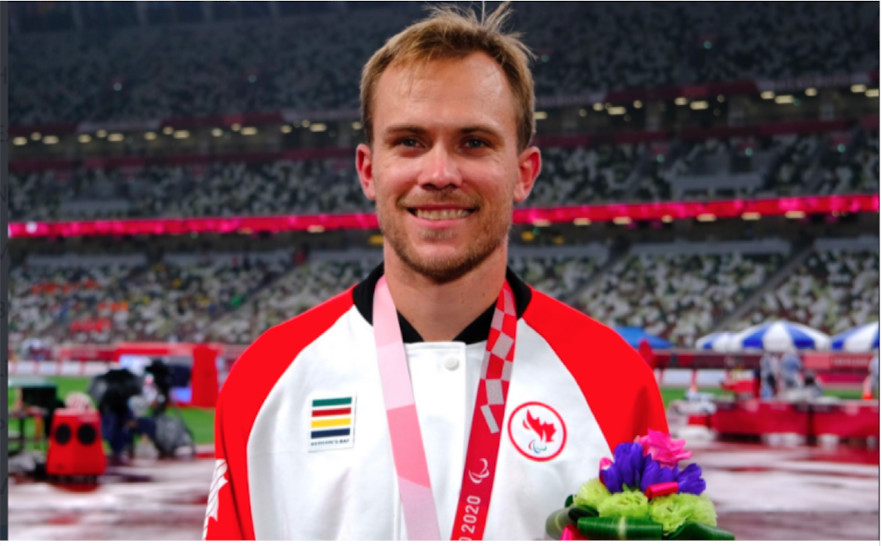
Earlier this year, Riech set the world record in the 1,500m event of 3:47.89 at a meet in Victoria.
Fellow Canadian Liam Stanley, a T37 athlete, competed in the race with a higher degree of impairment than the rest of the athletes of the T38 classification.
Stanley finished fifth in 4:06.95, setting a Paralympic record for the T37 classification.
(09/05/2021) ⚡AMPExercisers and elites mingled at Tjejmilen
Finally, Tjejmilen could be completed. In honor of the day, we had perfect running weather with sun and around 14 degrees. Extra fun was that Finnkampen's 10,000 meters for women was decided during Tjejmilen.
After having to cancel last year's race due to covid-19, about 8000 girls who wanted to run were registered for this year's Tjejmilen. The classic setting with thousands of girls on site at the same time at Gärdet was different this year due to the restrictions where a maximum of 900 participants can be in the event area at the same time.
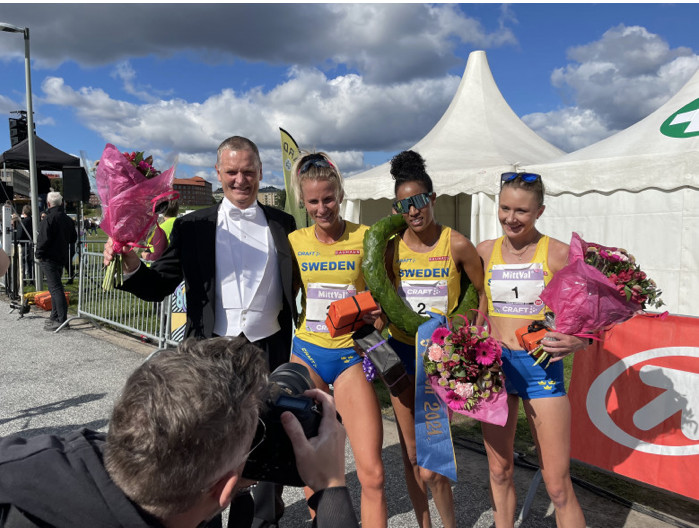
First out was Lilla Tjejmilen starting at 9.30 - almost 400 girls were registered.
At 10.00 it was time for the premiere of Tjejmilen Trail. More than 800 girls were registered for the race, which took place on small winding paths in the forest around Kaknästornet.
At 12.00, the starting shot was fired for Tjejmilen. At the front of the starting field were the six participants from Finnkampen with Meraf Bahta, Sarah Lahti and Carolina Wikström in the Swedish team. Bahta and Lahti together with Hanna Lindholm were first at a kilometer. After three kilometers, Bahta and Lahti pulled, they were then followed to the finish where Meraf Bahta came out of the sprint duel winning.
The race then continued with starts every 30 minutes, to avoid congestion. In a normal year, the different groups start at five-minute intervals. It was a long and wonderful day at Gärdet, at 18.25 the last runners finished.
We are incredibly happy that we have managed to arrange Tjejmilen this year with all adaptations to the restrictions that apply. We had to rethink, but I'm really happy with the result - and it was noticed that the participants on site appreciated being able to run races again. Next year we hope to be on the track again after the pandemic. It would of course be fun if we could approach the 2019 number of participants of 20,000 registered runners, says Malin Aho, project manager at the Marathon Group that arranges the Girl Mile.
In addition to the participants on site, many chose to run Tjejmilen virtually again this year.
Topp 5 Tjejmilen 20211. Meraf Bahta, Hälle IF, 32:412. Sarah Lahti, Hässelby SK, 32:423. Carolina Wikström, LK Roslagen, 33:284. Hanna Lindholm, Huddinge AIS, 33:375. Johanna Peiponen, Rovaniemen Lappi, 34:00Här finns alla resultat i Tjejmilen 2021.
Resultat Finnkampen, damernas 10 000 meter1. Meraf Bahta, Sverige/Hälle IF, 32:412. Sarah Lahti, Sverige/Hässelby SK, 32:423. Carolina Wikström, Sverige/LK Roslagen, 33:284. Johanna Peiponen, Finland/Rovaniemen Lappi, 34:005. Nina Chydenius, Finland/Gamlakarleby IF, 34:046. Laura Manninen, Finland/Kenttäurheilijat -58, 34:34
Topp 5 Tjejmilen Trail 20211. Helena Wallin, Älvsjö, 42:912. Olivia Grahn, Stockholm, 42:413. Rebecca Källström, Stockholm, 43:284. Sofia Kingstedt von Corswant, Skarpnäck, 43:475. Alicia Sjöö Ekelöf, Spånga, 44:02
(09/05/2021) ⚡AMP
Tjejmilen
The Tjejmilen 10K is Sweden’s largest sports event for women with around 30,000 participants taking part in a road race and in a trail race. The road race has a Fun Run version and a competitive version if you want to show your girl power. The course of Tjejmilen is predominantly flat with two small hills (less than 15 meters)...
more...Rock ‘n’ Roll Half Marathon leaving Virginia Beach after this year
After 20 years of live music serenading runners through the Virginia Beach Oceanfront, the Rock ‘n’ Roll Running Series is leaving the city.
The series, which debuted in Hampton Roads in 2001 and includes a half-marathon, 5-kilometer race and 1-mile sprint, will take place for the final time the weekend of Sept. 4, the event runners announced in a statement on its Facebook page.
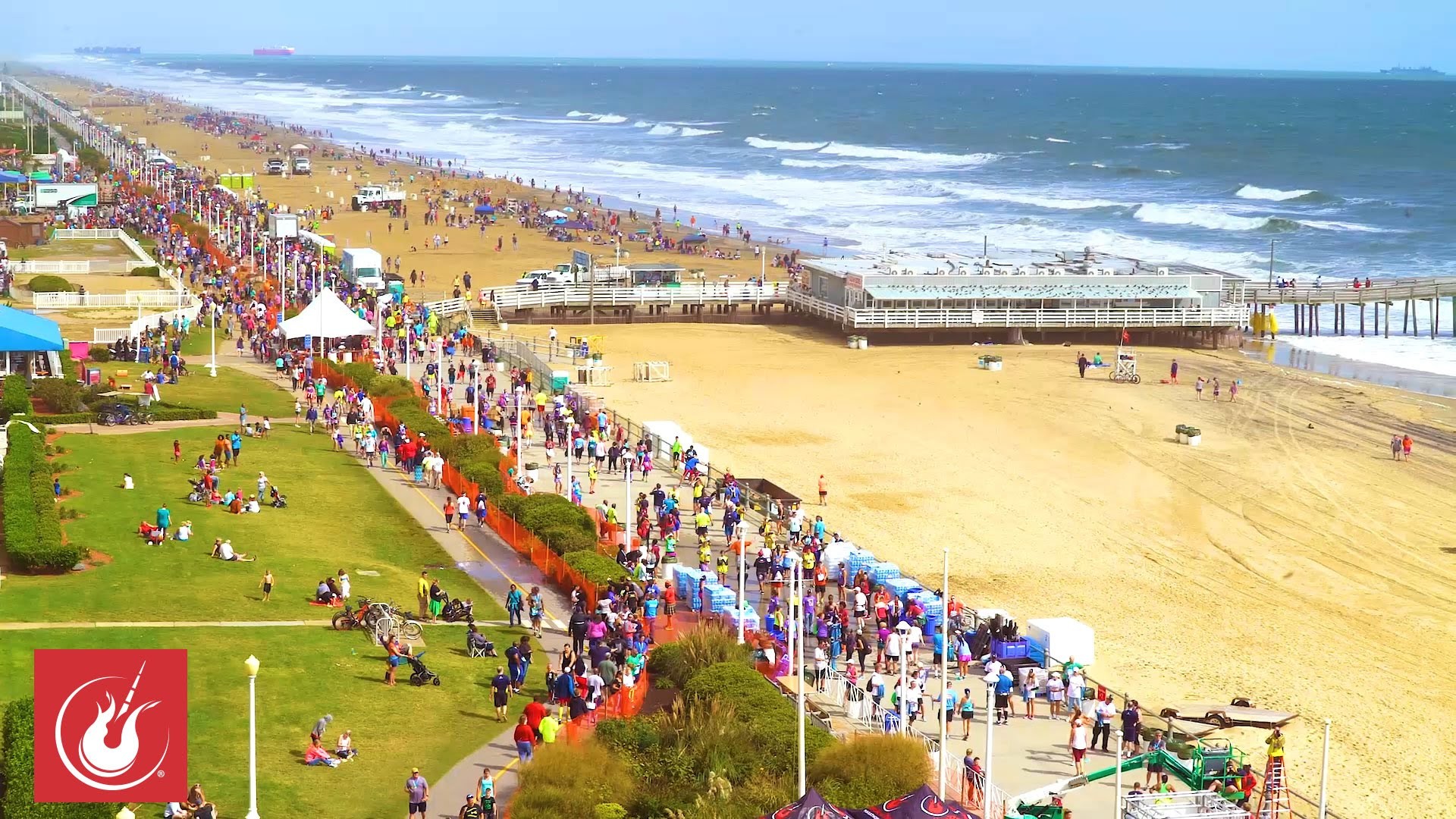
“After thoughtful consideration and conversations with local officials, the difficult decision has been made that after 20 wonderful years, the 2021 Rock ‘n’ Roll Running Series Virginia Beach will be the final edition of the race,” the statement read.
“...We have had a tremendous relationship with the City of Virginia Beach over the years and will continue to stay engaged with the city and all of our local partners to explore potential opportunities that may arise in the future.”
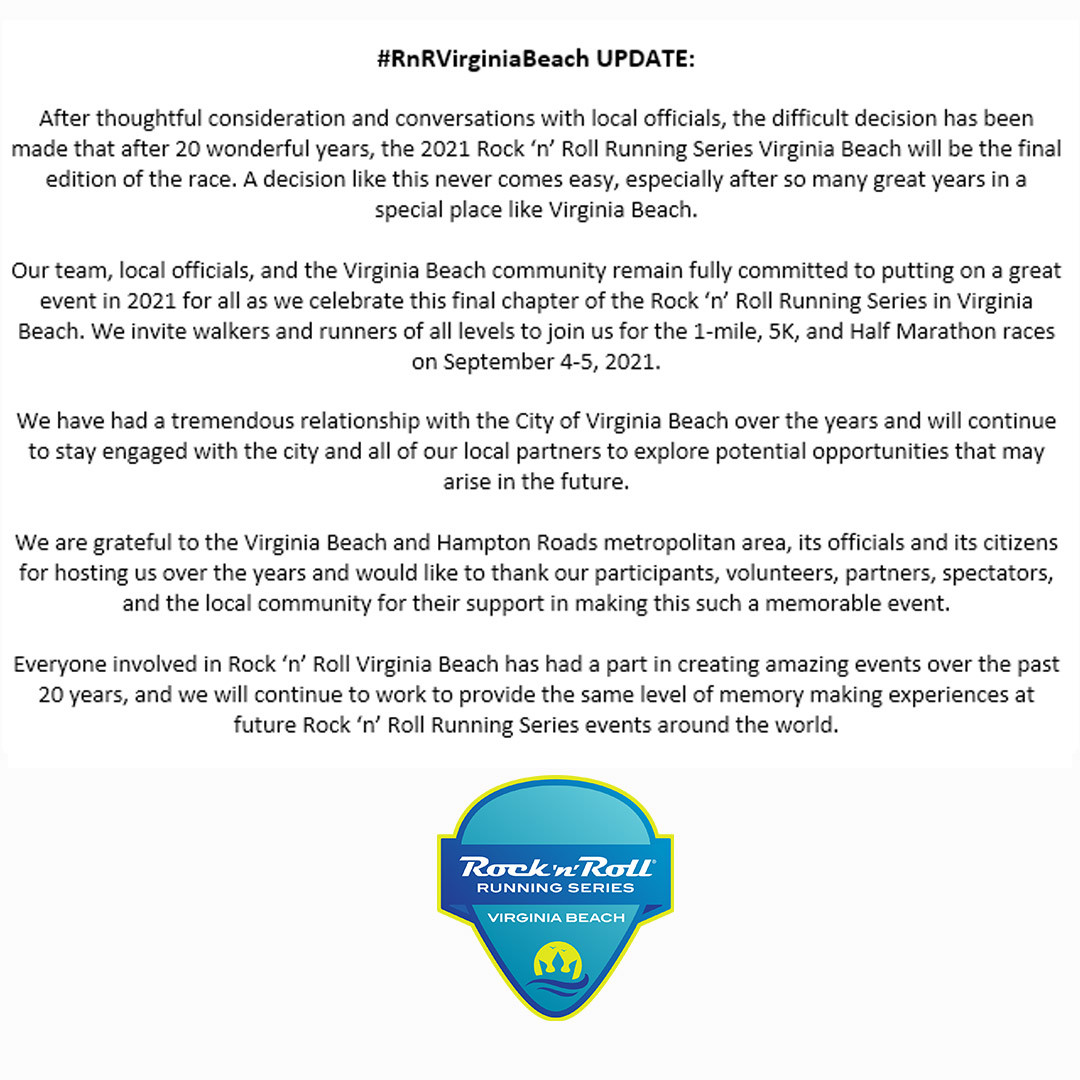
Virginia Beach is host to one of Rock ‘n’ Roll’s 17 events listed on its website, boasting it as “the largest outdoor music festival on the East Coast.”
The departure leaves the Yuengling Shamrock Marathon and Half Marathon in March as Virginia Beach’s sole premier running event.
(09/04/2021) ⚡AMPby Ray Nimmo
Sprint stars Shelly-Ann Fraser-Pryce and Andre De Grasse will headline the Kamila Skolimowska Memorial in Poland
On Sunday 5, a World Athletics Continental Tour Gold meeting, while there will also be a wealth of champions in action in the field events, including a fond farewell to a legend of Polish athletics in Piotr Malachowski.
Fraser-Pryce will race her specialist event, the 100m, where she will face stiff opposition from compatriot Shericka Jackson. However, the two-time Olympic 100m champion should prove tough to beat, having clocked a PB of 10.60 in Lausanne last week.
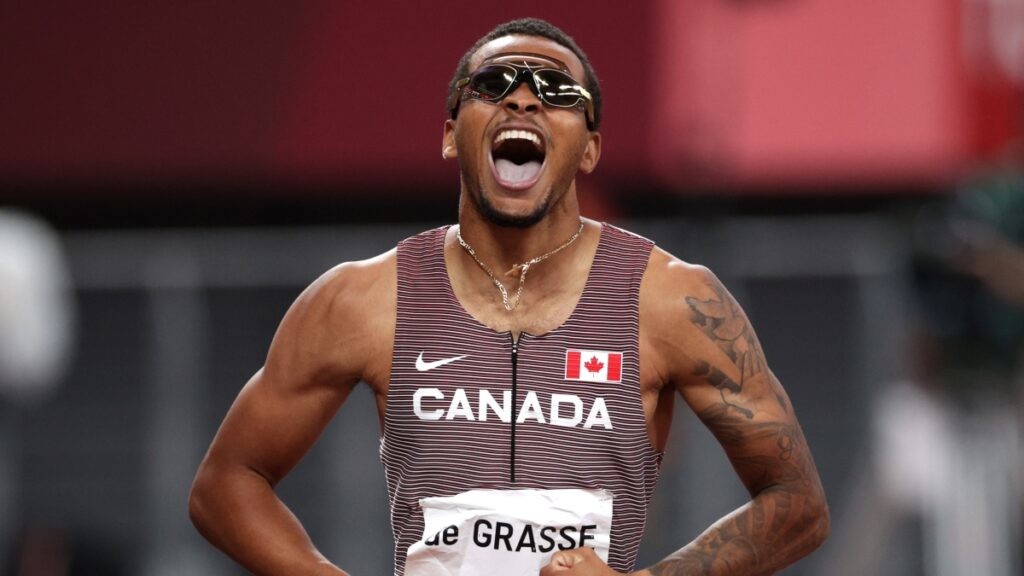
De Grasse will line up in the 200m, the event in which he’s the Olympic champion, having clocked a Canadian record of 19.62 to take gold in Tokyo, which he backed up in fine style with a wind-assisted 9.74 (2.9m/s) to win over 100m at the Eugene Diamond League. Also in the field are Italy’s Filippo Tortu, Turkey’s Ramil Guliyev and Britons Nethaneel Mitchell-Blake and Reece Prescod.
Another Olympic champion will be in action in the men’s 110m hurdles, with Jamaica’s Hansle Parchment looking to back up that Tokyo win against a formidable US duo in Devon Allen and Daniel Roberts.
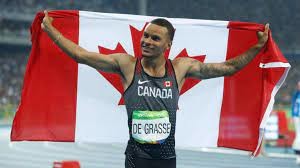
Brazil’s Alison Dos Santos, who took bronze in Tokyo in a South American record of 46.72, should prove tough to beat in the 400m hurdles. Fellow Olympic finalists Yasmani Copello of Turkey and Rasmus Magi of Estonia should be his closest pursuers.
US pair Michael Cherry and Vernon Norwood will be big contenders in the men’s 400m along with Botswana’s Isaac Makwala, while Poland’s Karol Zalewski, Kajetan Duszynski and Jakub Krzewina should mount a strong challenge on home turf.
The favourite for the women’s 400m is Marileidy Paulino of the Dominican Republic, who backed up her Olympic silver medal with recent wins in Lausanne (50.40) and Paris (50.12). Britain’s Jodie Williams will also be in the reckoning following her PB of 49.97 to finish sixth in the Olympic final, while the home charge is led by Justyna Swiety-Ersetic and Anna Kielbasinska, the latter in sparkling form following a PB of 50.38 in La Chaux-de-Fonds last month.
Nigeria’s Tobi Amusan, who clocked 12.60 to finish fourth in the Olympic final, should be tough to beat in the 100m hurdles, though US pair Sharika Nelvis and Christina Clemons will put it up to her along with Britain’s Cindy Sember.
The women’s 400m hurdles features a clash between the fourth-, fifth- and sixth-place finishers in the Olympic final: Janieve Russell of Jamaica along with Anna Ryzhykova and Viktoriya Tkachuk of Ukraine.
There will be a string of local heroes in action across the field events, with Olympic champion Wojciech Nowicki headlining the men’s hammer field, which also includes four-time world champion Pawel Fajdek and the man who split the Poles on the podium in Tokyo: Eivind Henriksen of Norway.
All eyes will be on Piotr Malachowski in the men’s discus as the 38-year-old performs in front of his home crowd for the last time before bringing the curtain down on a career that has included one world title, two world silver medals, two European golds and two Olympic silvers.
“Over 20 years of training, effort and sacrifice are now behind me,” said Malachowski. “It was a great time, full of joy. It is now times to say goodbye. I am retiring, bidding farewell to the fans, thanking them for the invaluable support they have given me over the years.”
Also in the field are Jamaica’s Fedrick Dacres, Slovenia’s Kristjan Ceh and Lithuania’s Andrius Gudzius.
Poland has a typically strong hand in the men’s pole vault where Piotr Lisek and Pawel Wojciechowski take on Olympic silver medallist Chris Nilsen and world champion Sam Kendricks.
The men’s shot put will be a must-see event, reuniting the top four finishers from the Tokyo Olympics: USA’s Ryan Crouser and Joe Kovacs along with New Zealand’s Tom Walsh and Brazil’s Darlan Romani.
Johannes Vetter is the star attraction in the men’s javelin, the German looking to put his Tokyo disappointment firmly behind him as he takes on Olympic silver medallist Jakub Vadlejch of the Czech Republic.
Italy’s Gianmarco Tamberi will take star billing in the men’s high jump where the Olympic champion takes on Olympic bronze medallist Maksim Nedasekau, while the women’s high jump features Ukraine’s Yaroslava Mahuchikh, Yuliya Levchenko and Iryna Herashchenko along with Poland’s Kamila Licwinko.
Poland’s Maria Andrejczyk will be a popular presence among fans, not only due to her Olympic silver in Tokyo but due to her decision to auction off that medal to raise money for a Polish toddler’s heart surgery. Polish convenience store Zabka won the auction and returned the medal to Andrejczyk, who said that she believes “the good we do comes back to us.” In Silesia she will take on world champion Kelsey-Lee Barber of Australia.
Poland’s Malwina Kopron will take on France’s Alexandra Tavernier in the women’s hammer, the woman she beat to the bronze medal at the Tokyo Olympics, while fellow finalist Joanna Fiodorow is also in the field. Portugal’s Auriol Dongmo is the leading entrant in the women’s shot put.
Olympic 10,000m champion Selemon Barega of Ethiopia and 3000m steeplechase champion Soufiane El Bakkali of Morocco are the star attractions in the distance races, the two squaring off over 3000m in a field that includes rising star Tadese Worku of Ethiopia, the world U20 champion, and Abel Kipsang, who finished fourth in the Olympic 1500m final.
(09/04/2021) ⚡AMPby World Athletics
The world's best finish lines
Whether you are running your first or 50th race, there is no better feeling than crossing the finish line. We appreciate all finish lines in life no matter your goals, but we take a look at some of our favourite finish lines in races across the running world.
Boston Marathon (U.S.)
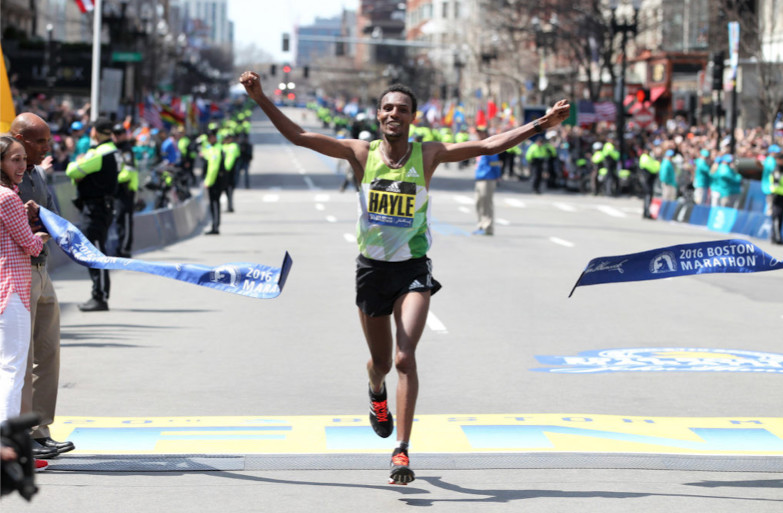
It would be hard to leave the finish line of the prestigious Boston Marathon off the list. Right on Hereford, left on Bolyston and you can see the finish line, with 500m to go. It’s a memory Boston marathoners remember forever. To hear fans, family members and Bostonians screaming at you as you run toward the line certainly gives you a final push to the finish.
Ultra de Trail Mont-Blanc (France)
This UTMB finish line sits right in the heart of Chamonix, surrounded by picturesque views of the French Alps. Ultrarunners descend from the mountain into the village after 171 km of racing, and hear the roar of the crowd as they run through narrow cobblestone streets toward the finish.
Olympic Marathon (Various)
The Olympic marathons always take place on the final two days of athletic events at the Games. Although fans were not allowed in the stadium in Tokyo, there were people lining the marathon course in Sapporo, which was one of the advantages of it being moved to that city. The raw emotion of athletes celebrating as they complete the Olympic marathon is a moment like no other.
Around the Bay 30 km (Canada)
Canada’s Around the Bay 30 km road race has a unique finish line, in which runners finish go through the lower level of a hockey arena to finish at centre ice of Hamilton’s FirstOntario Centre. Friends and families sit inside the arena to watch runners cross the line. Spectators will also sit inside to avoid the freezing temperatures of the March race.
Melbourne Marathon (Australia)
Similar to Canada’s Around the Bay race, the Melbourne Marathon finishes inside one of the world’s top 10 largest stadiums: the Melbourne Cricket Ground (MCG). The MCG has a seating capacity of 100,000 people and is home to the AFL Grand Final and Australia’s cricket team. Runners enter the MCG after completing 41 kilometres around the streets of Melbourne, to finish the marathon at midfield.
Great Wall Marathon (China)
The Great Wall of China Marathon starts and finishes inside the village of Huanyaguang’s Yin & Yang Square. Despite the steep climbs on the iconic Great Wall of China, runners are rewarded by the breathtaking views along the course. In the last two kilometres, as you reach the village from the wall, spectators will be cheering as they have a traditional festival for runners.
Comrades Ultra Marathon (South Africa)
The Comrades Marathon is a point-to-point 90 km ultramarathon in South Africa, starting at City Hall in Pietermaritzburg and finishing at the Sahara Kingsmead Cricket Stadium in Durban. Race spectators wait at the finish in Durban in front of a big screen, waiting for entrants to cross the line. The race has a challenging time limit, as runners must complete the distance in less than 12 hours.
(09/04/2021) ⚡AMP

